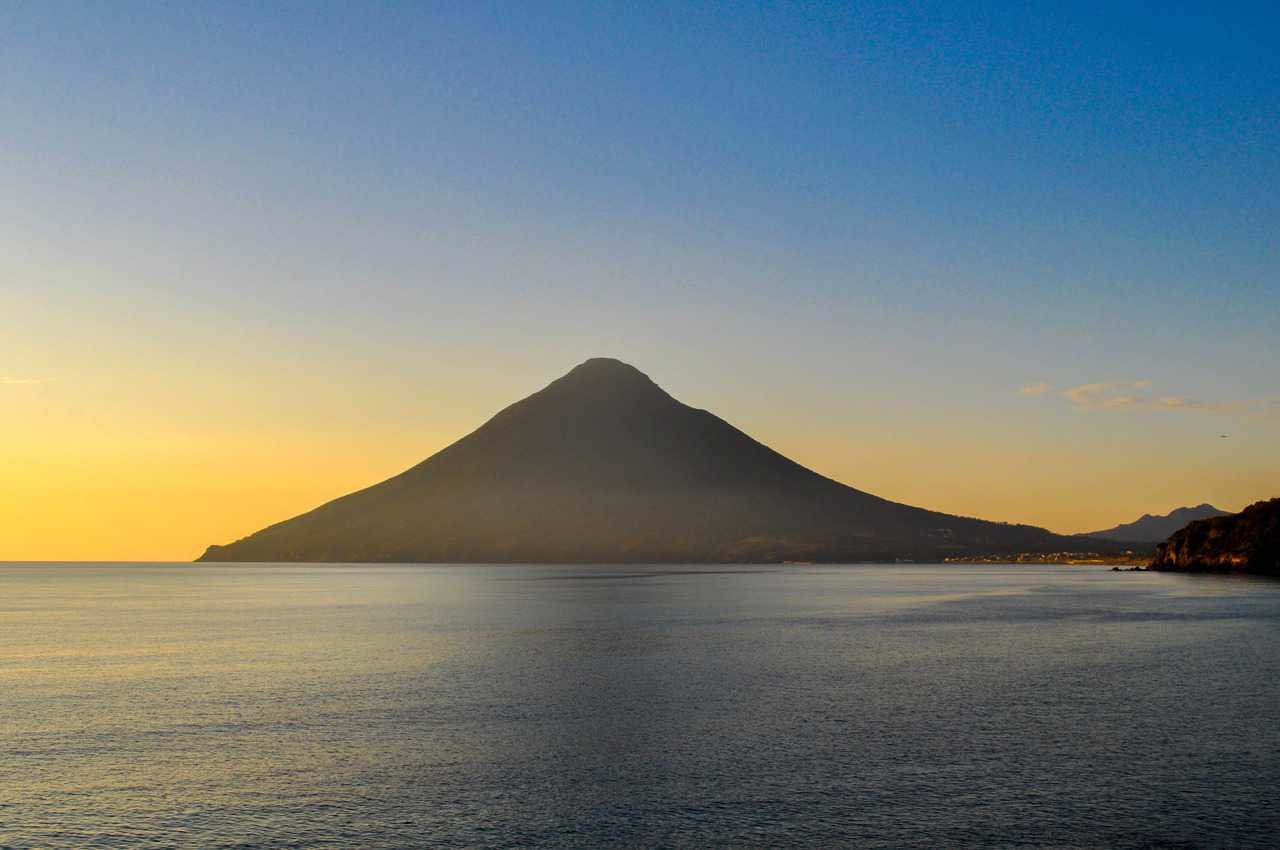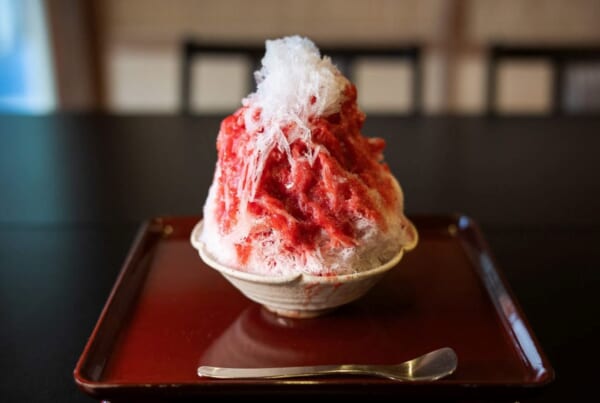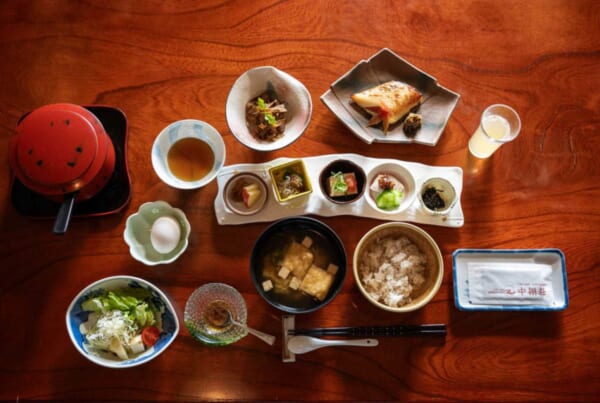Known for being an onsen paradise, Ibusuki (指宿) is one of the most popular seaside resorts in Kagoshima Prefecture (鹿児島県). It is located on the coast in Kyushu, at the southern edge of the Satsuma Peninsula. Not far from there, Mount Kaimondake (開聞岳), nicknamed “Satsuma-Fuji” because of its likeness to the famous Mount Fuji, watches over the city. Famous for its black sand baths with health benefits, it also is has a wealth of culinary goodness, from seafood to summer sweets. Come with me far from the cold for a sunny vacation in Ibusuki!
- Nishi-Oyama, the station of hapiness
- Cape Nagasakibana, birthplace of the Ryugu legend
- Ibusuki Hakusuikan, a ryokan that smells like beach
- Katsuo-bushi, Ibusuki’s pink treasure
- Floating noodle fishing
- How to go to Ibusuki
Nishi-Oyama, the station of happiness
On this sunny day, we hurry so as not to miss our first event of the day: to watch the train pass by Nishi-Oyama station (西大山). This small station is a mujin-eki (無人駅), a station without staff or a ticket office. This one opened in 1960, and is still in use, overseeing the daily traffic of about 15 trains.
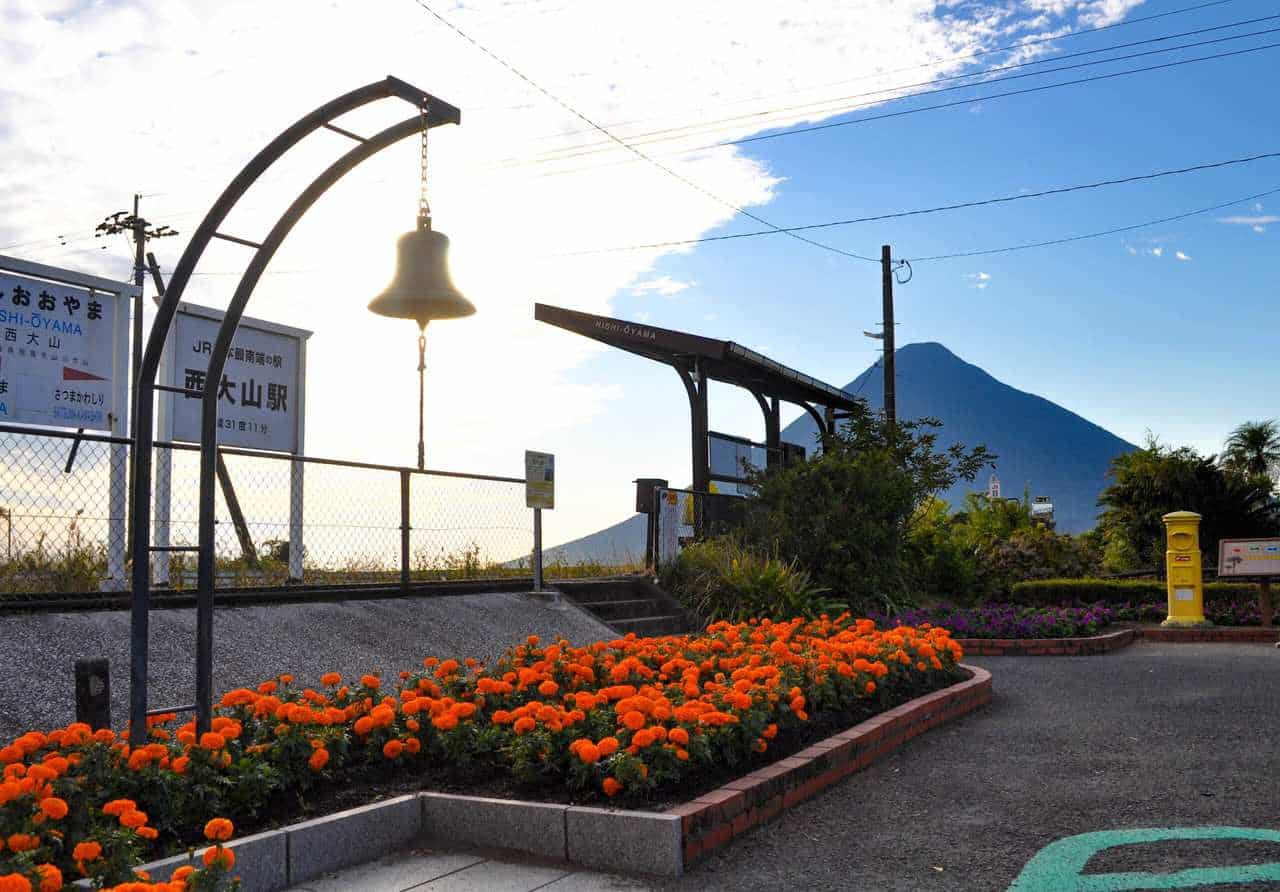
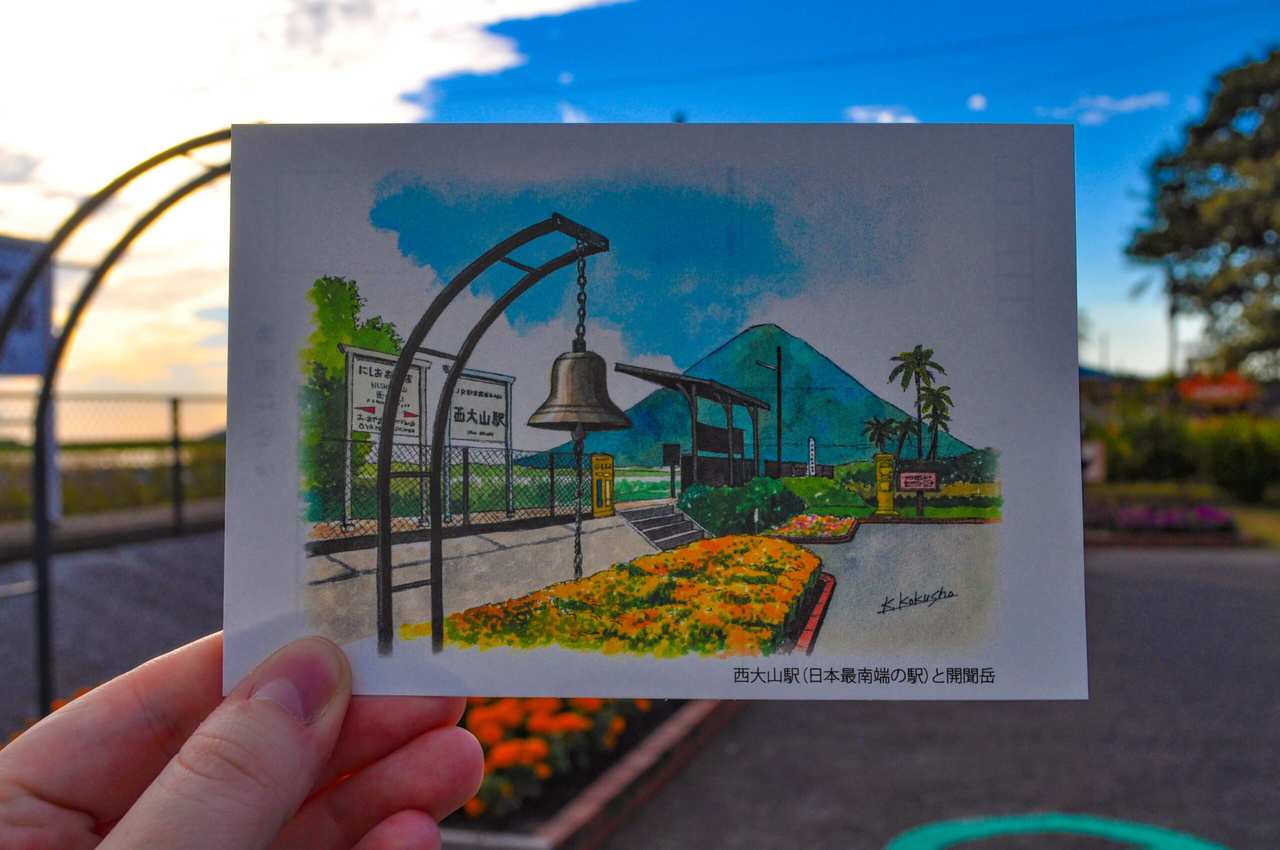
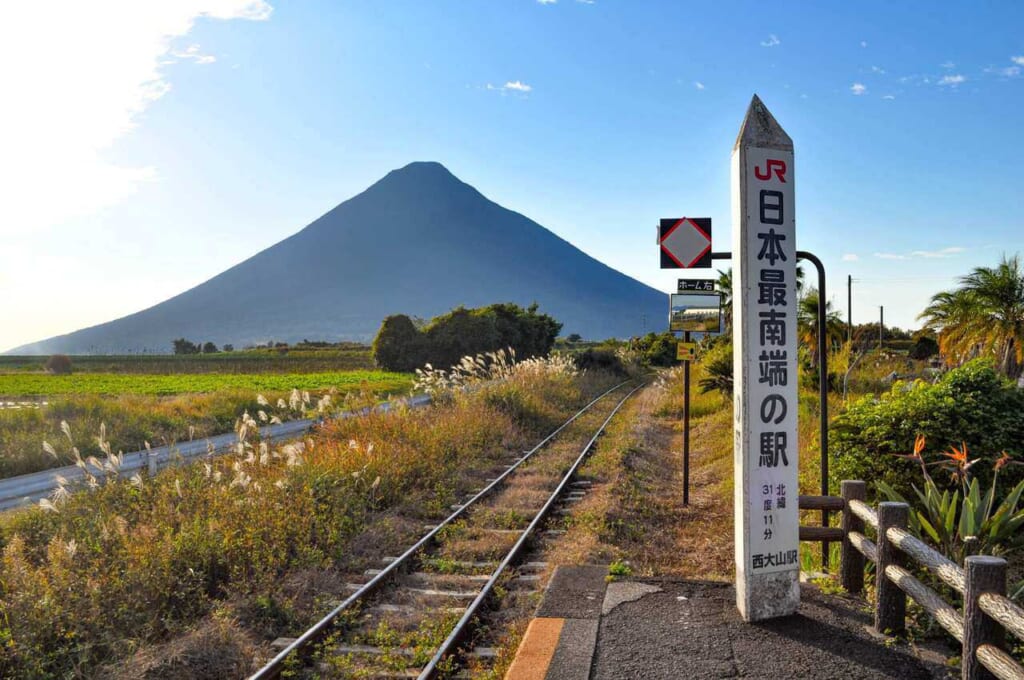
When we arrived, some other people were waiting patiently for the train to pass in order to take a souvenir picture. The reason behind this local attraction? It is actually the southernmost JR station in Japan, which is the pride of the area. Especially since it offers a breathtaking view of Mount Kaimondake, one of the 100 most famous mountains in Japan. When the train arrives, the view is just like a postcard.
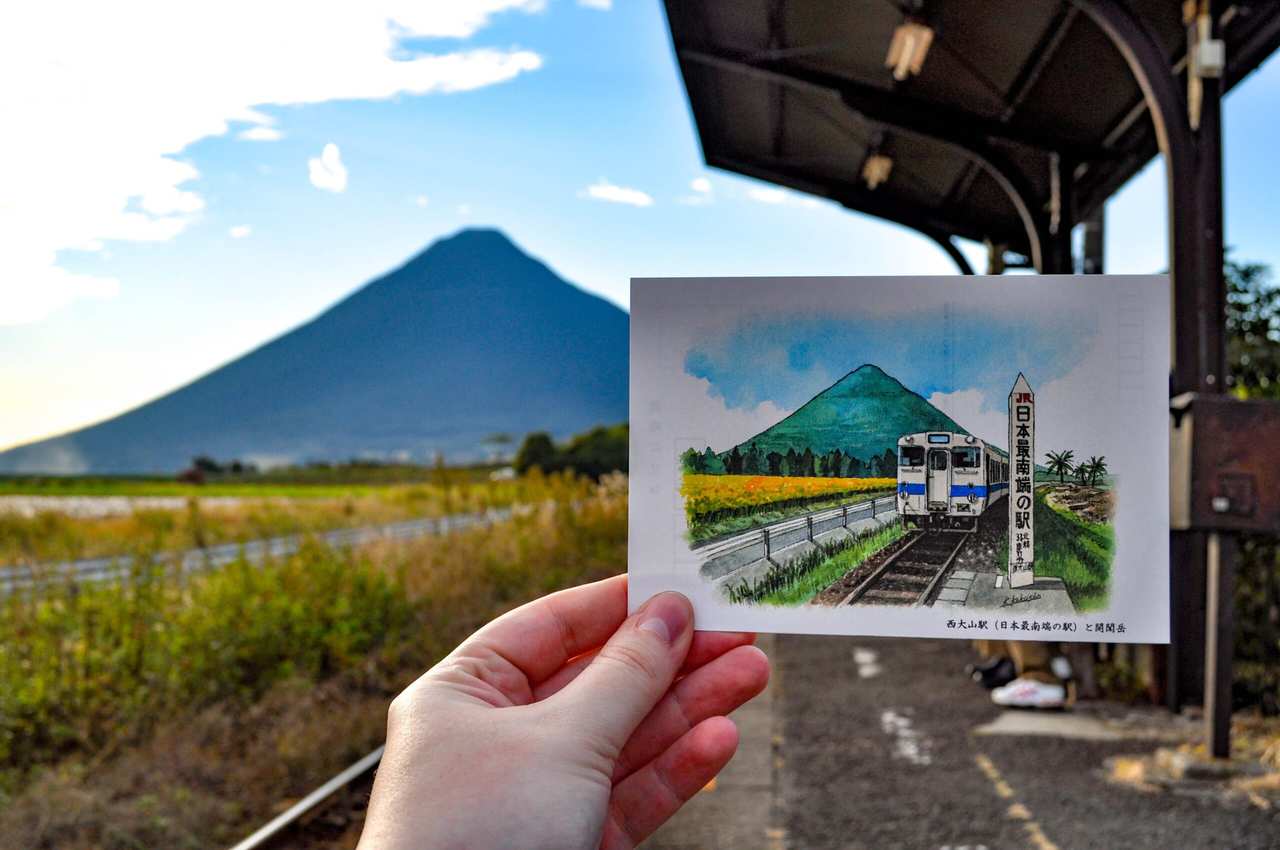
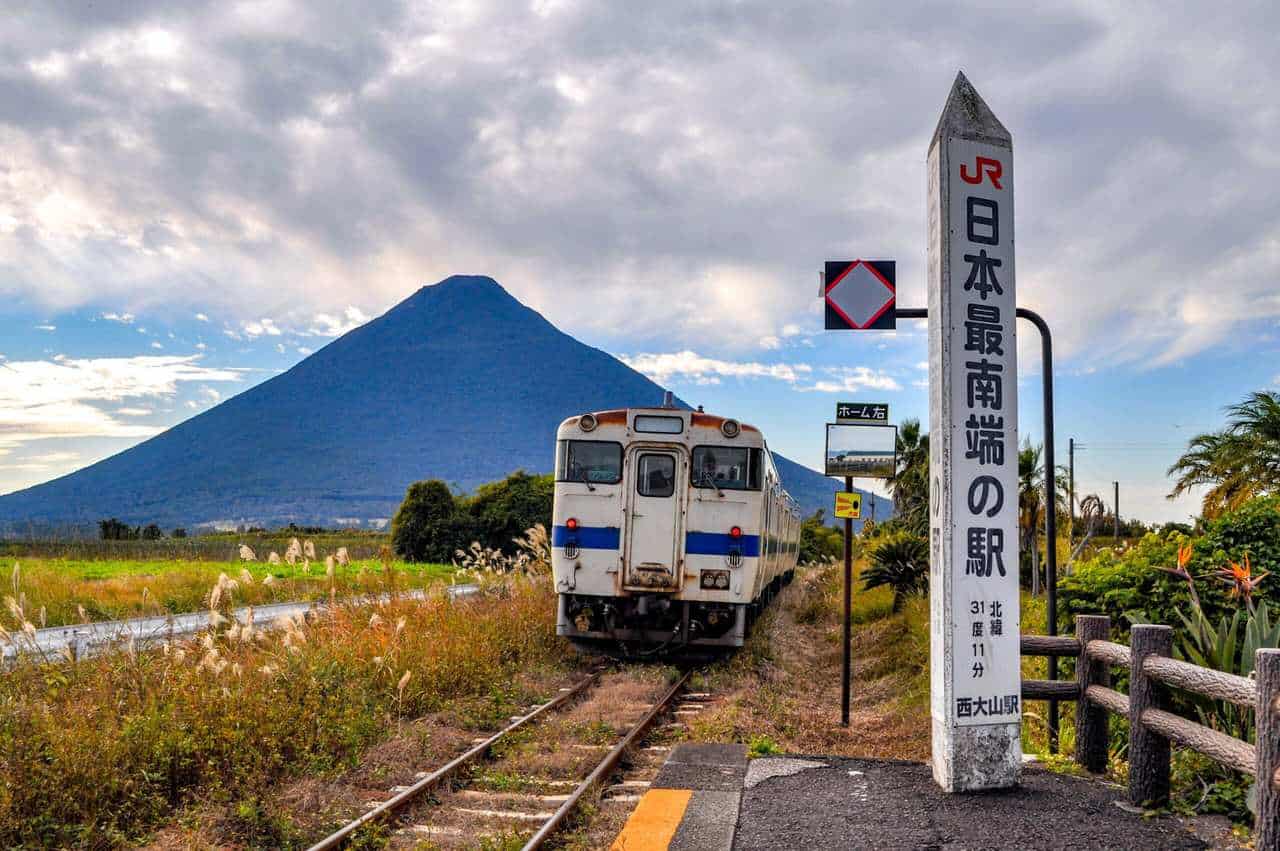
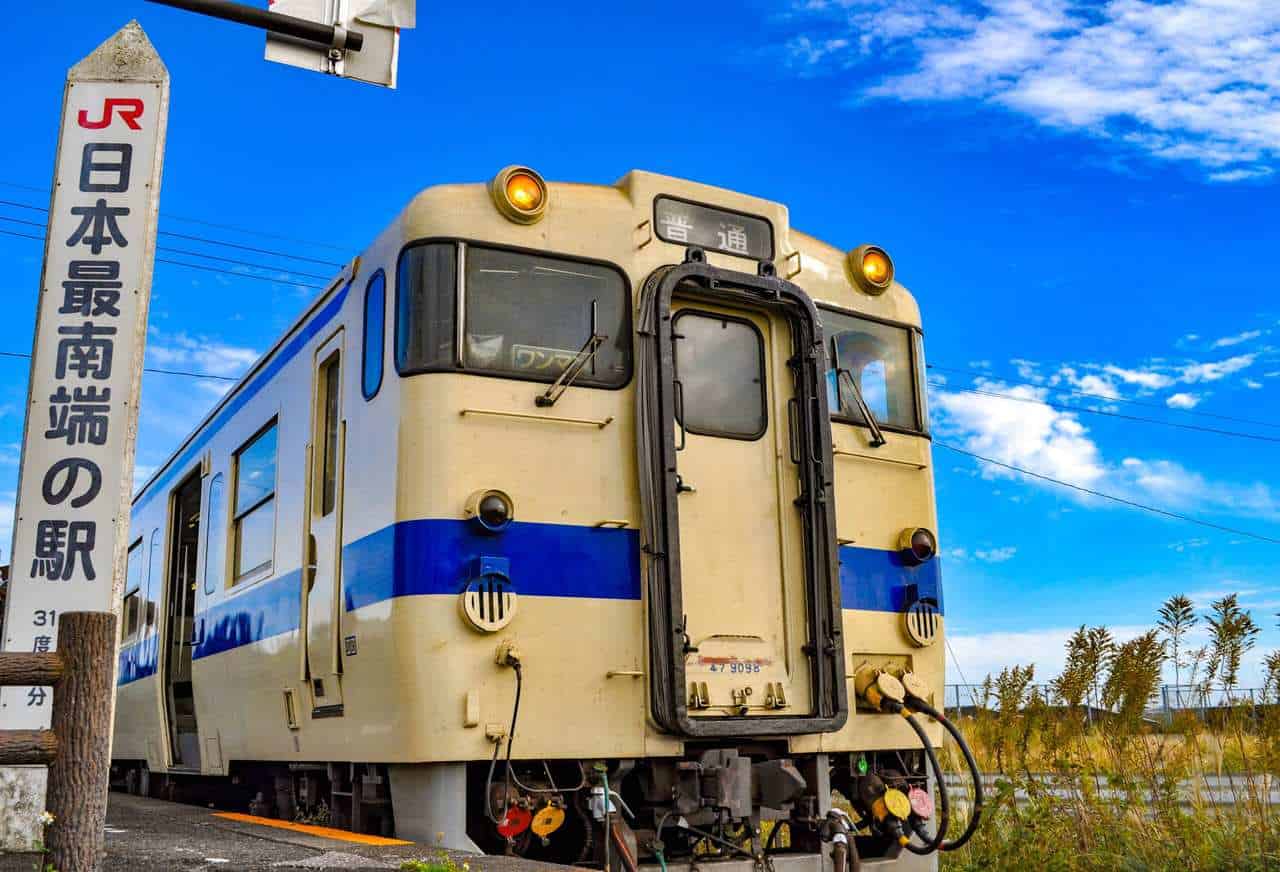
In front of the station stands another unusual attraction: a yellow mailbox! Although not extraordinary for many other countries, in Japan, mailboxes are normally red. This one is painted yellow in reference to the rapeseed flowers that bloom here at the beginning of the year. Generally speaking, yellow is the color of happiness for the Japanese. So this mailbox is famous to bring luck to items mailed from it. This one is still in use so it is possible to mail your letters to your loved ones.
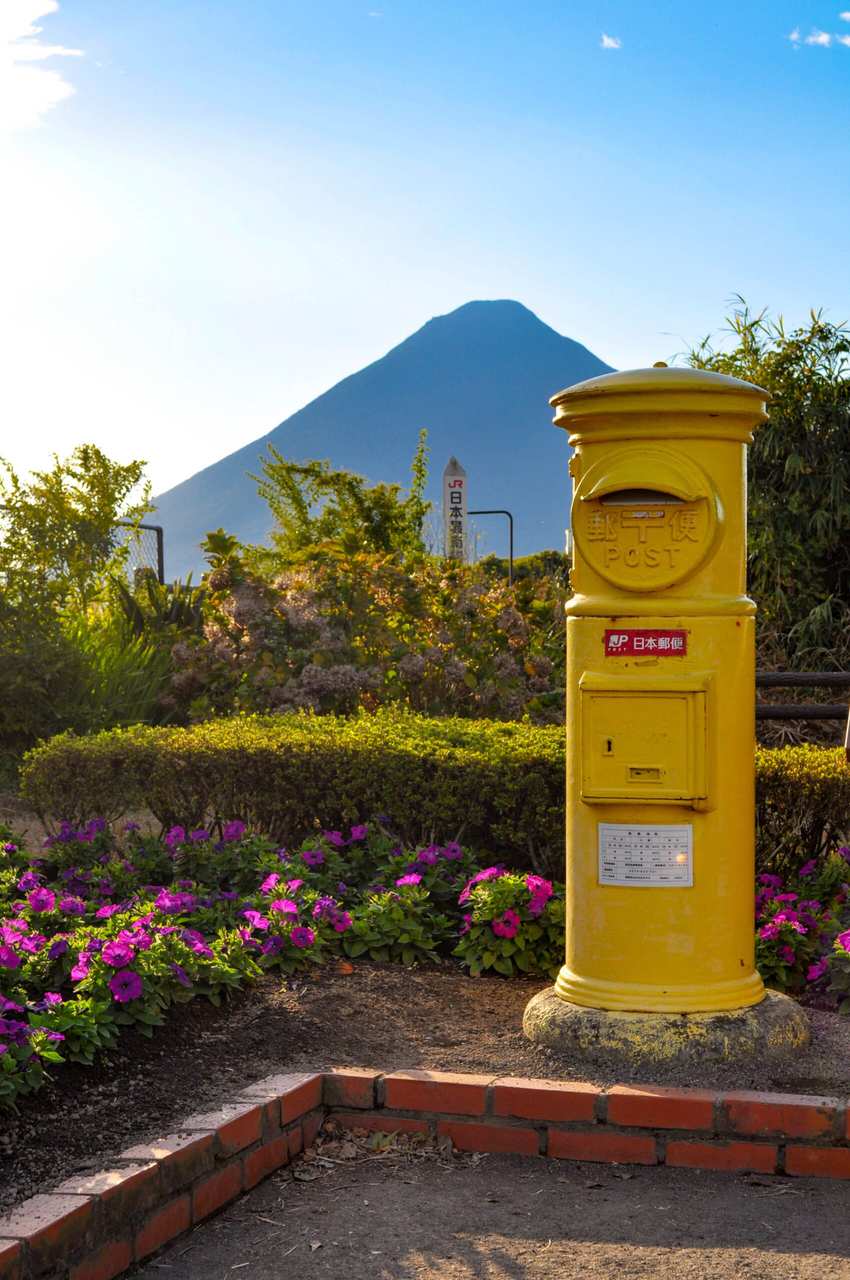
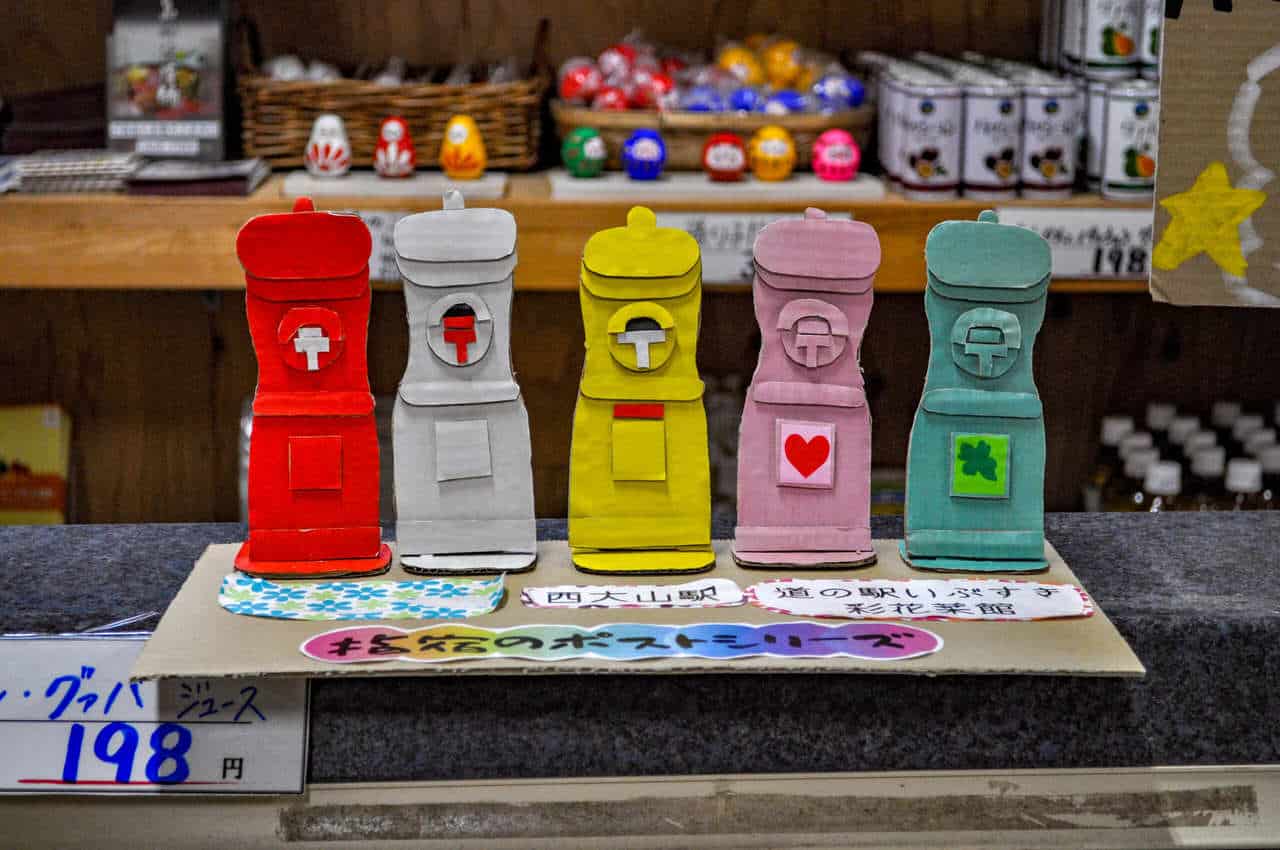
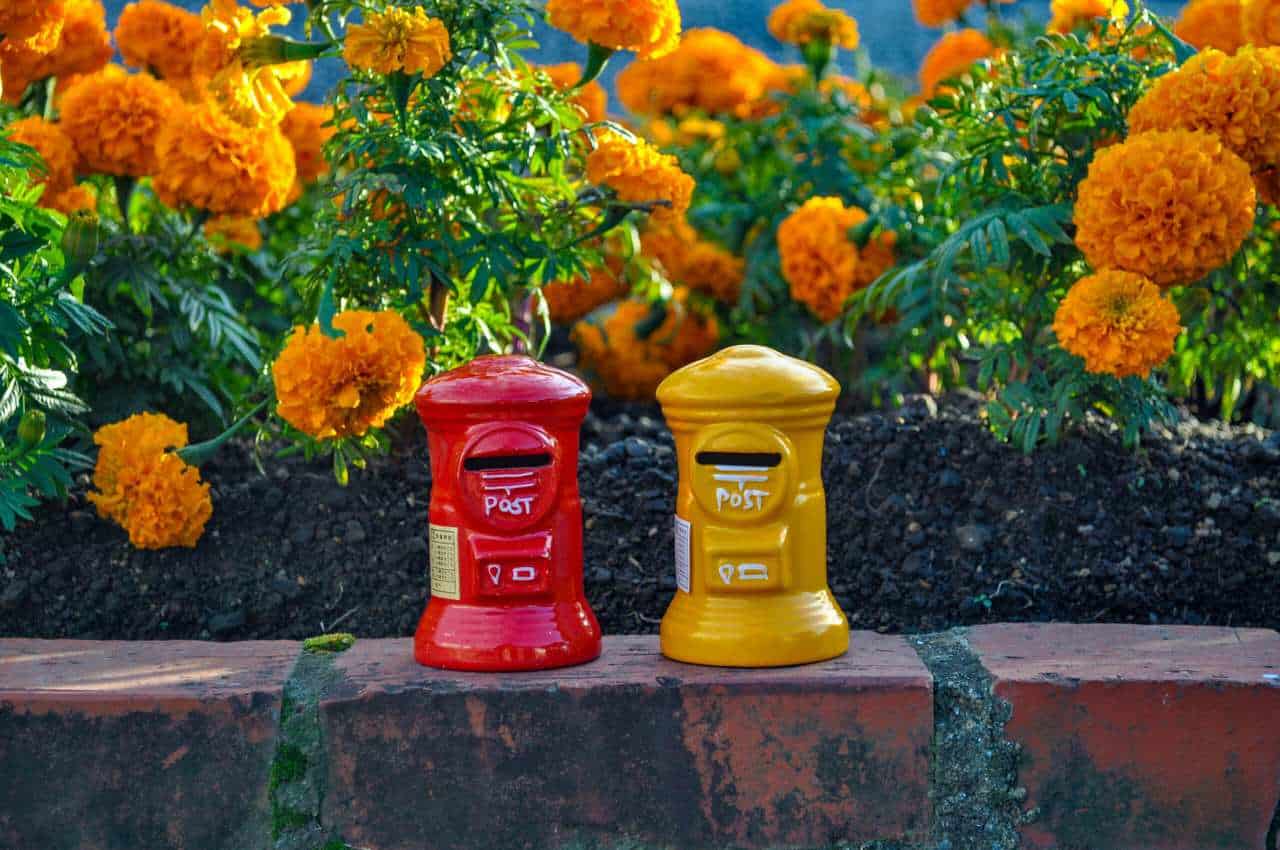
Across from the station, don’t miss the Kaimon ichiba Kyutaro souvenir store (かいもん市場 久太郎). Inside, there are local specialties, such as several kinds of tsukemono (Japanese pickles) and mango products: pudding, soda, or ice cream, there is something for everyone. Mango is one of Ibusuki’s specialties, so be sure to try their summery sorbets.
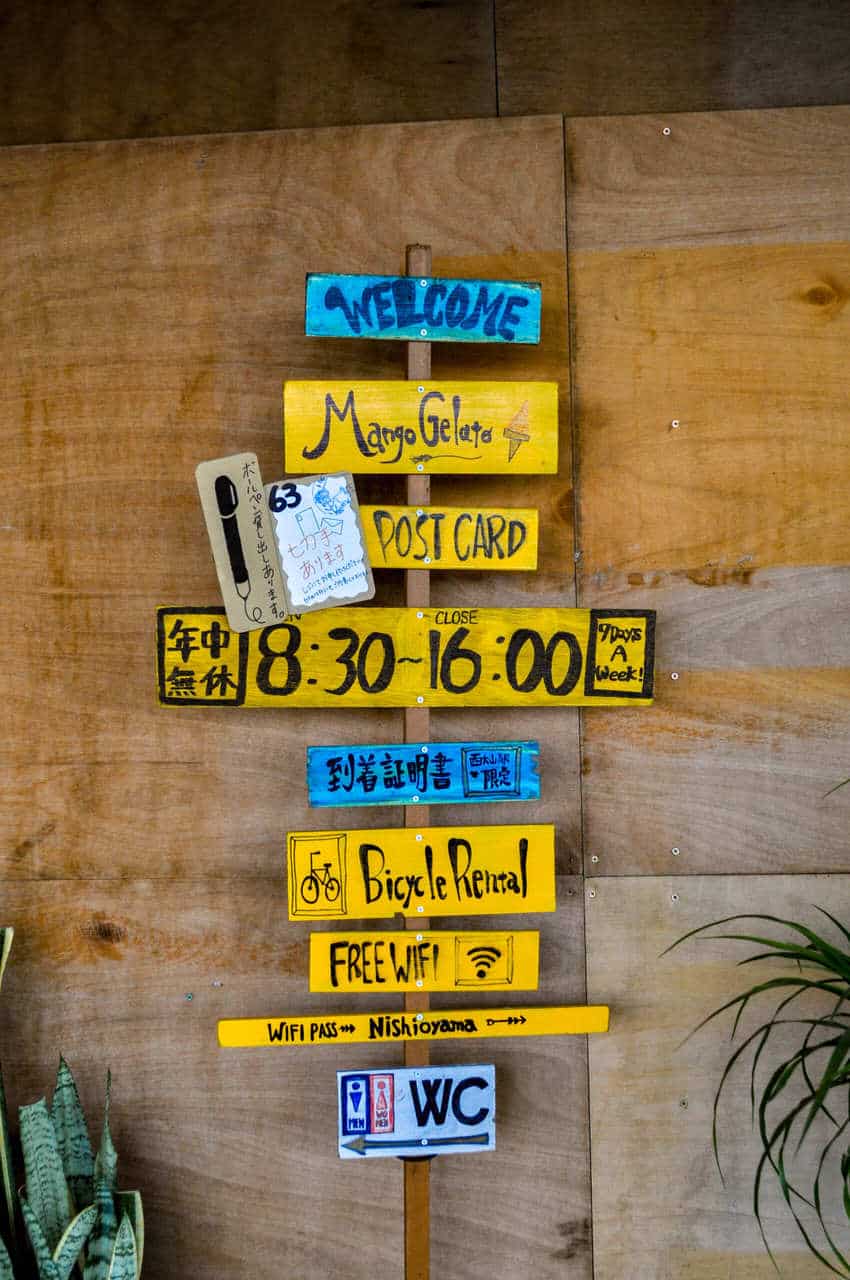
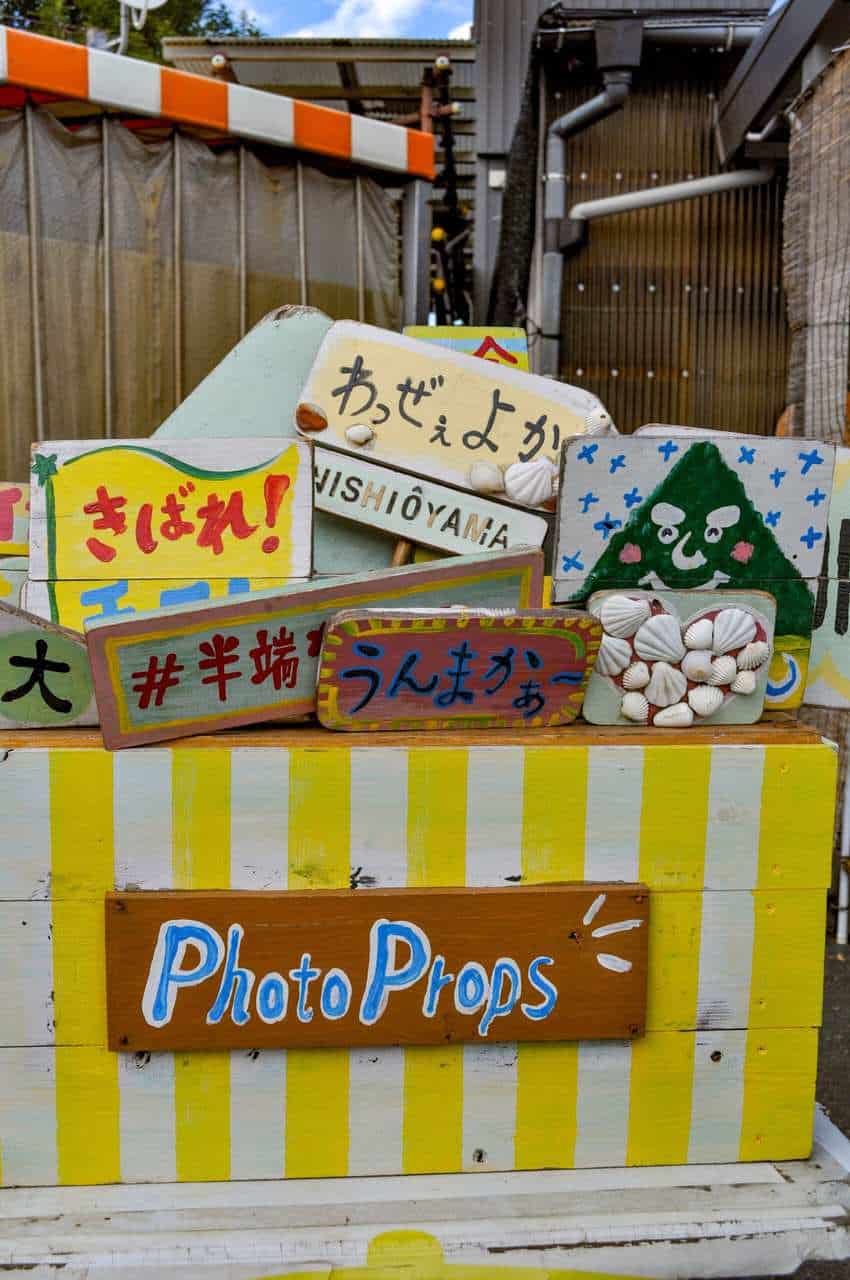
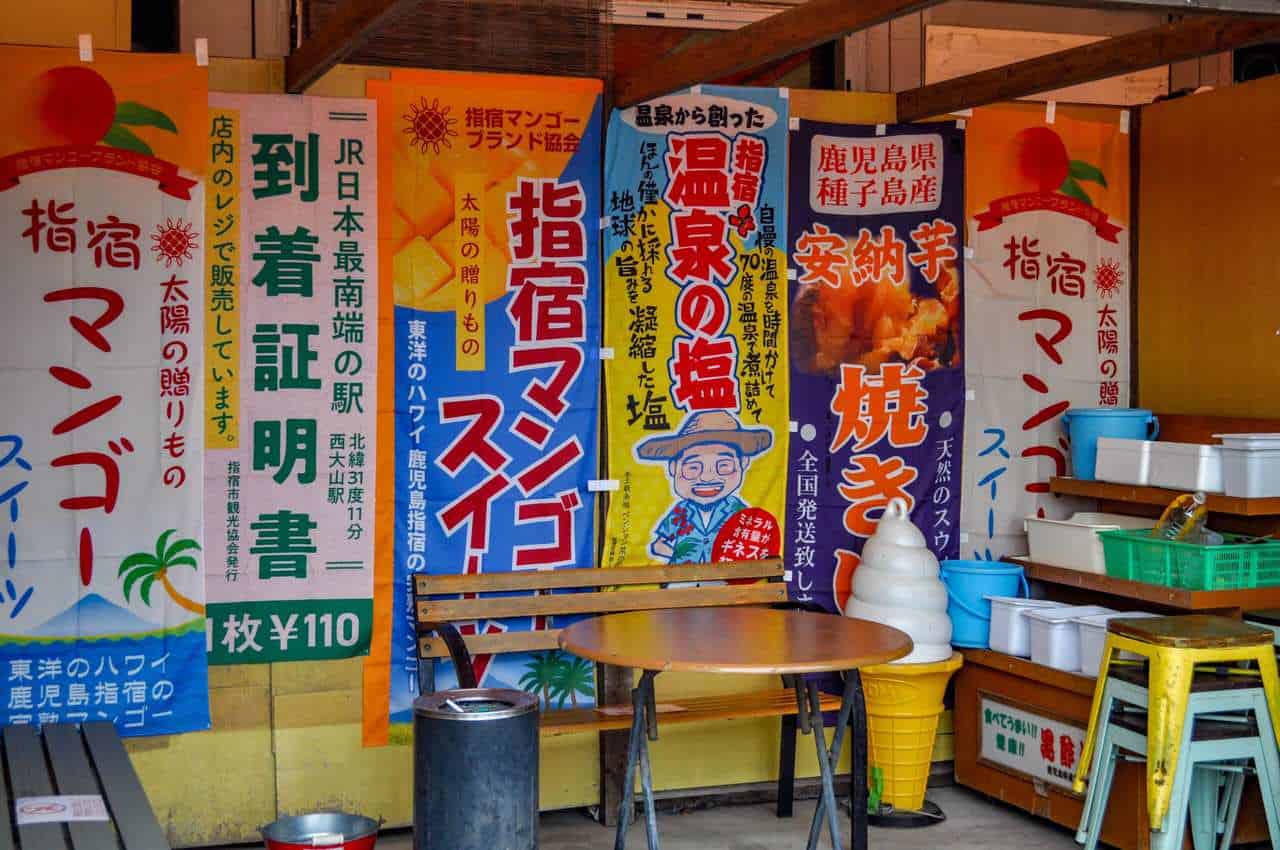
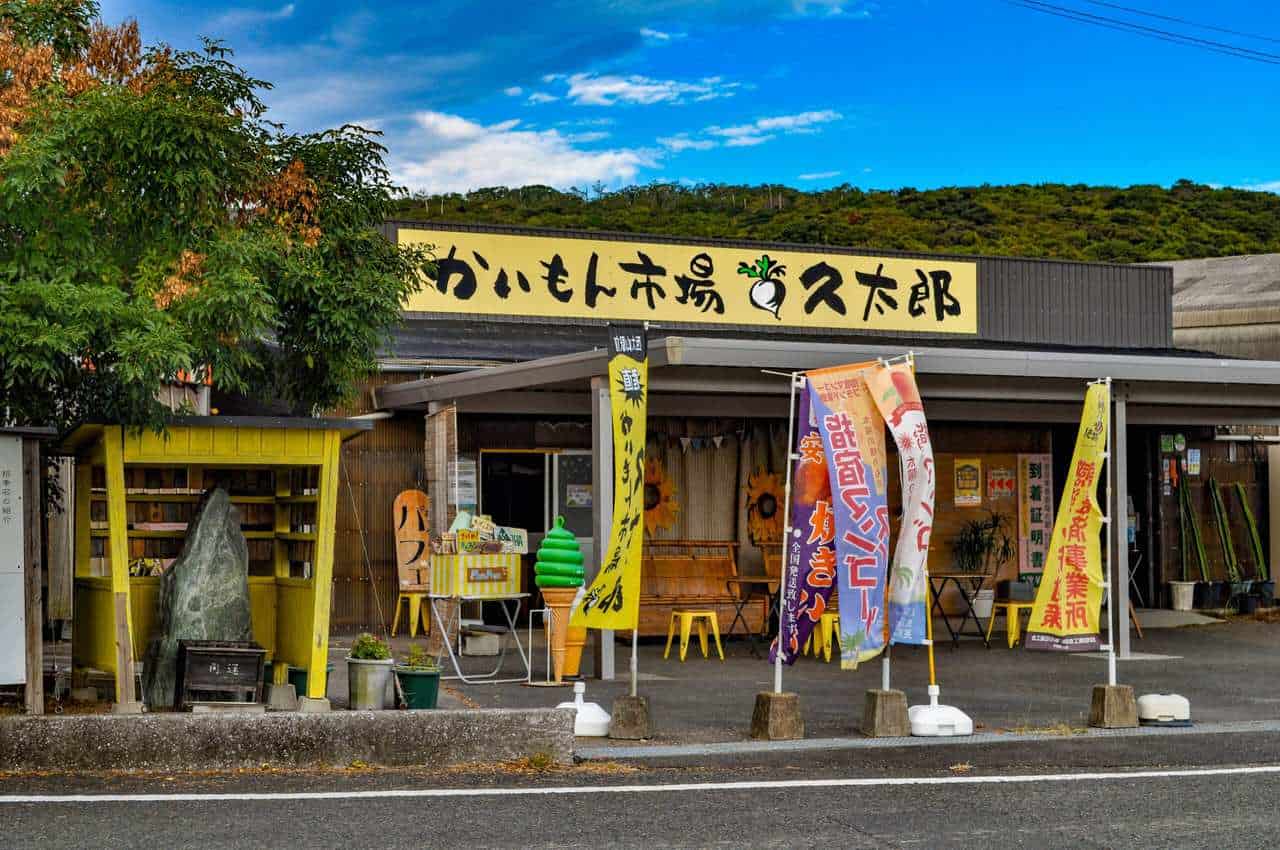
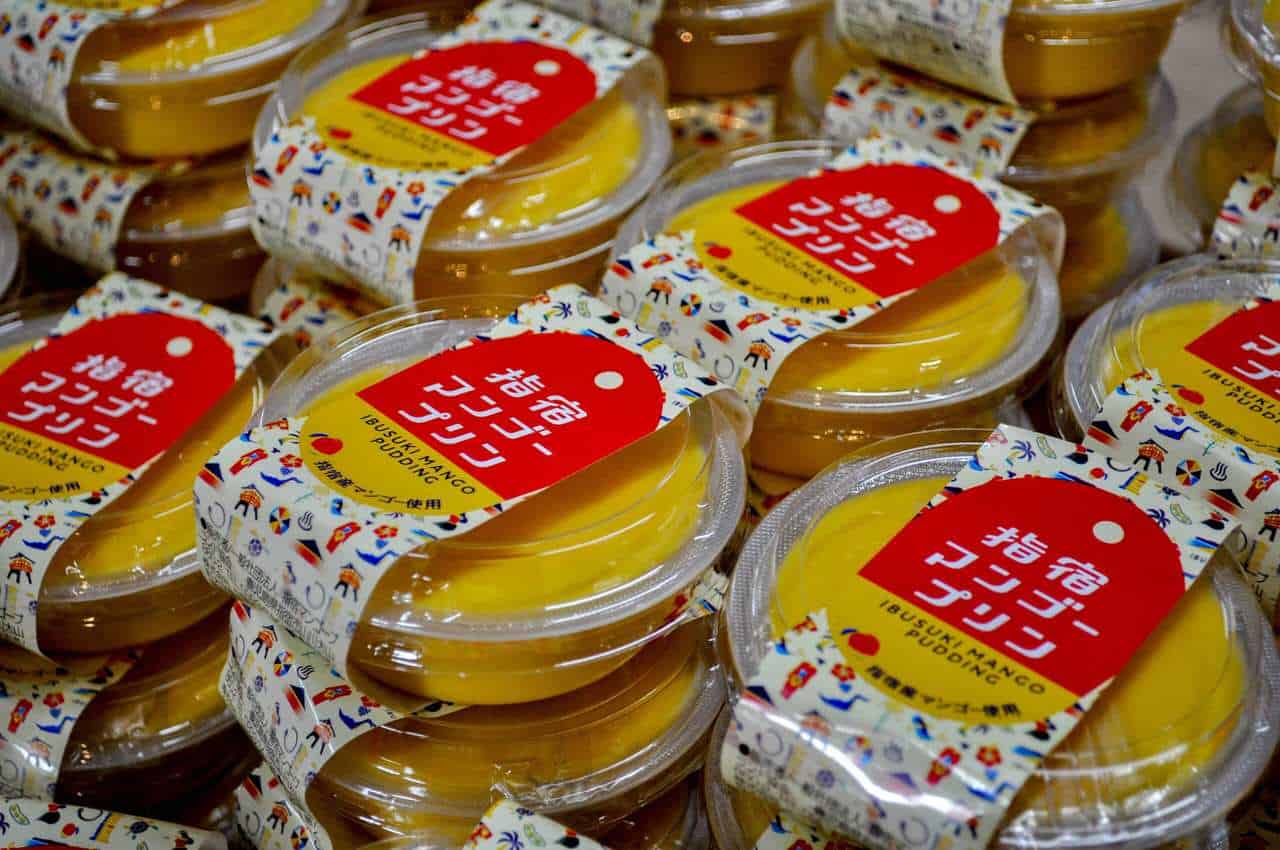
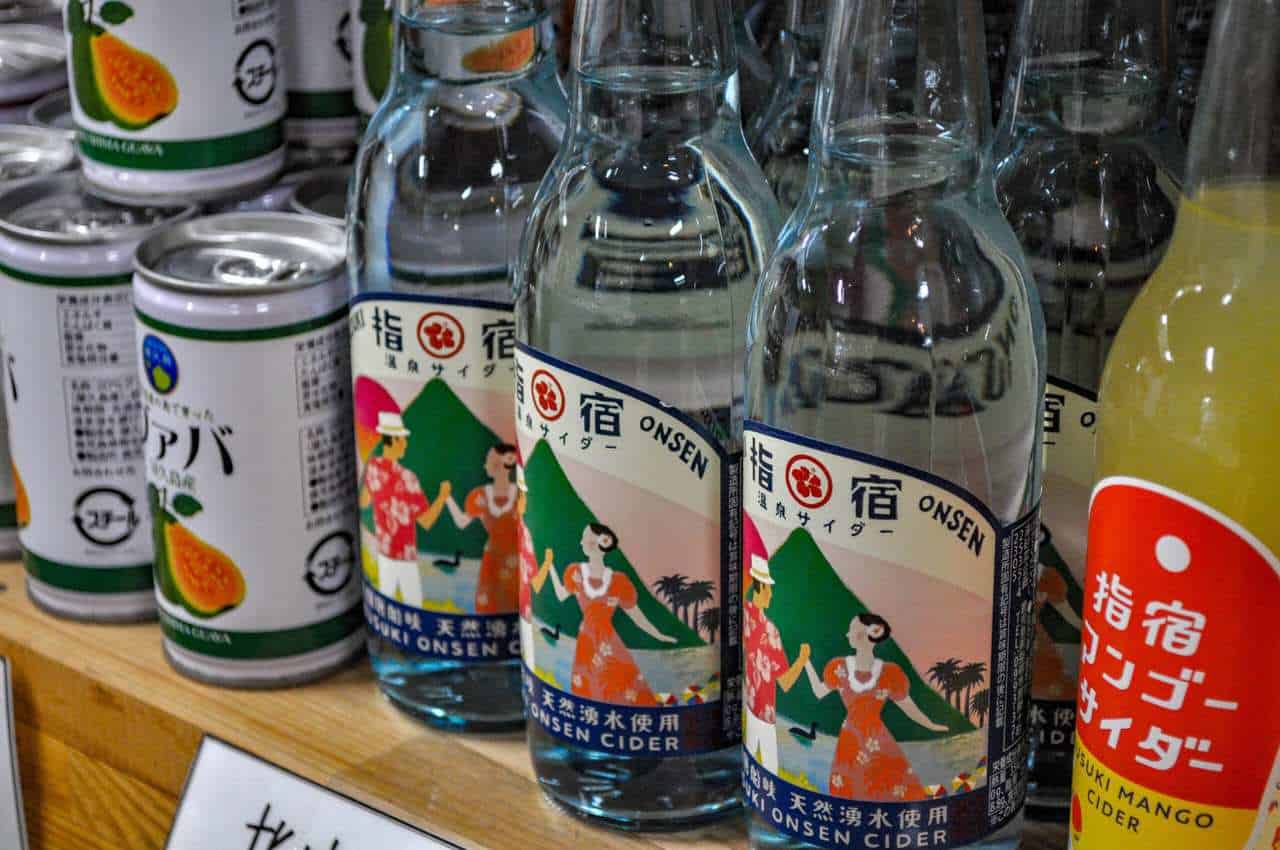
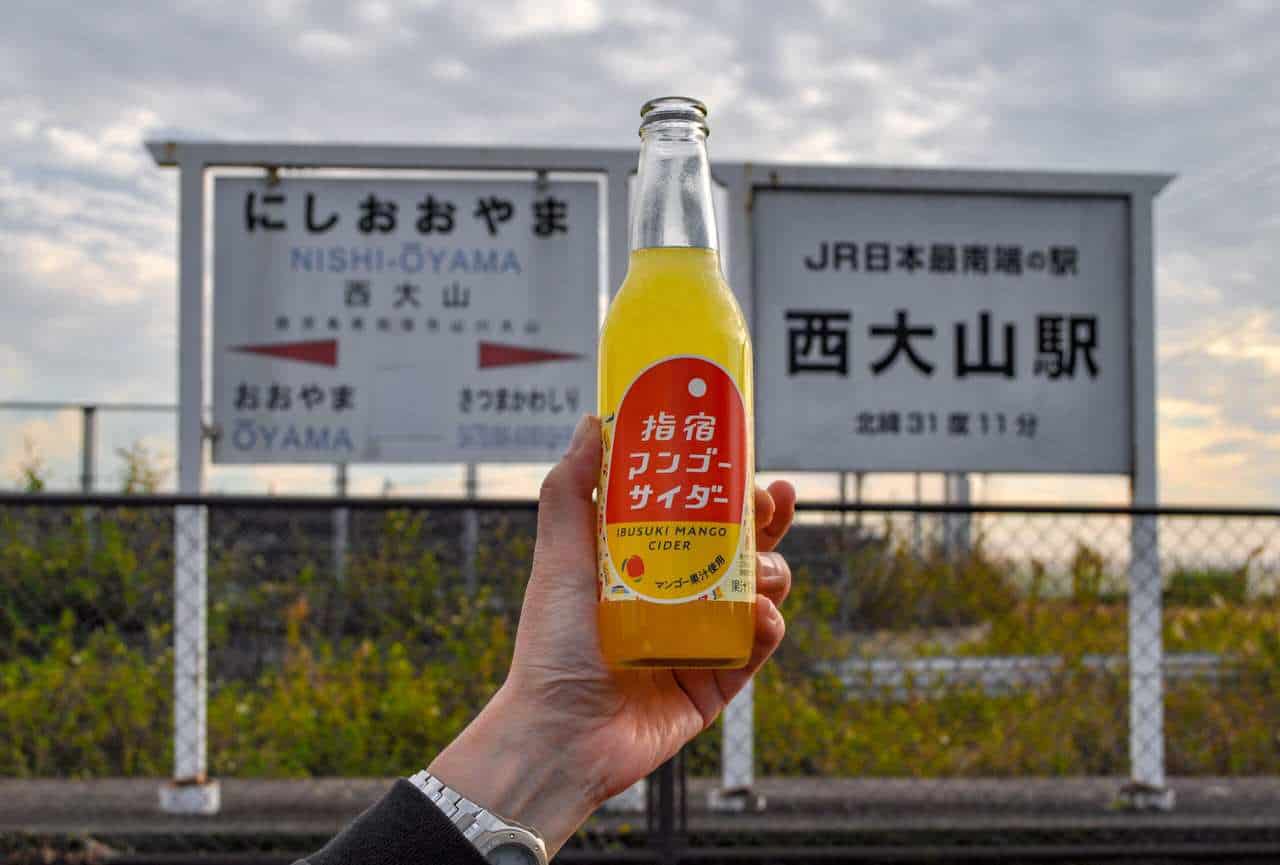
If you want to write to your loved ones, you will find stamps and postcards inside the store, as well as goodies featuring the station: magnets, figures, and even station tickets (not usable on the train). Enough to put a little color (and happiness) in your suitcase.
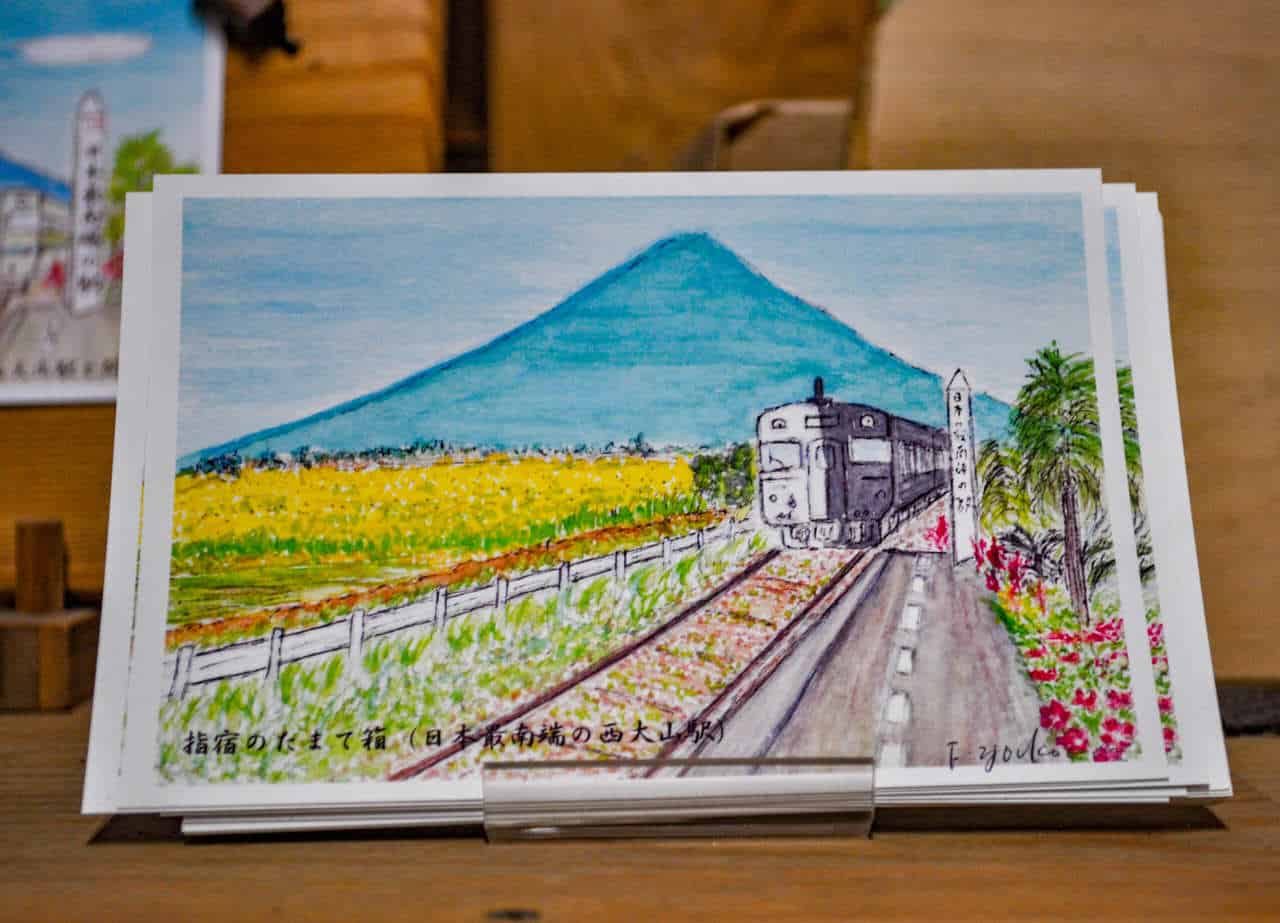
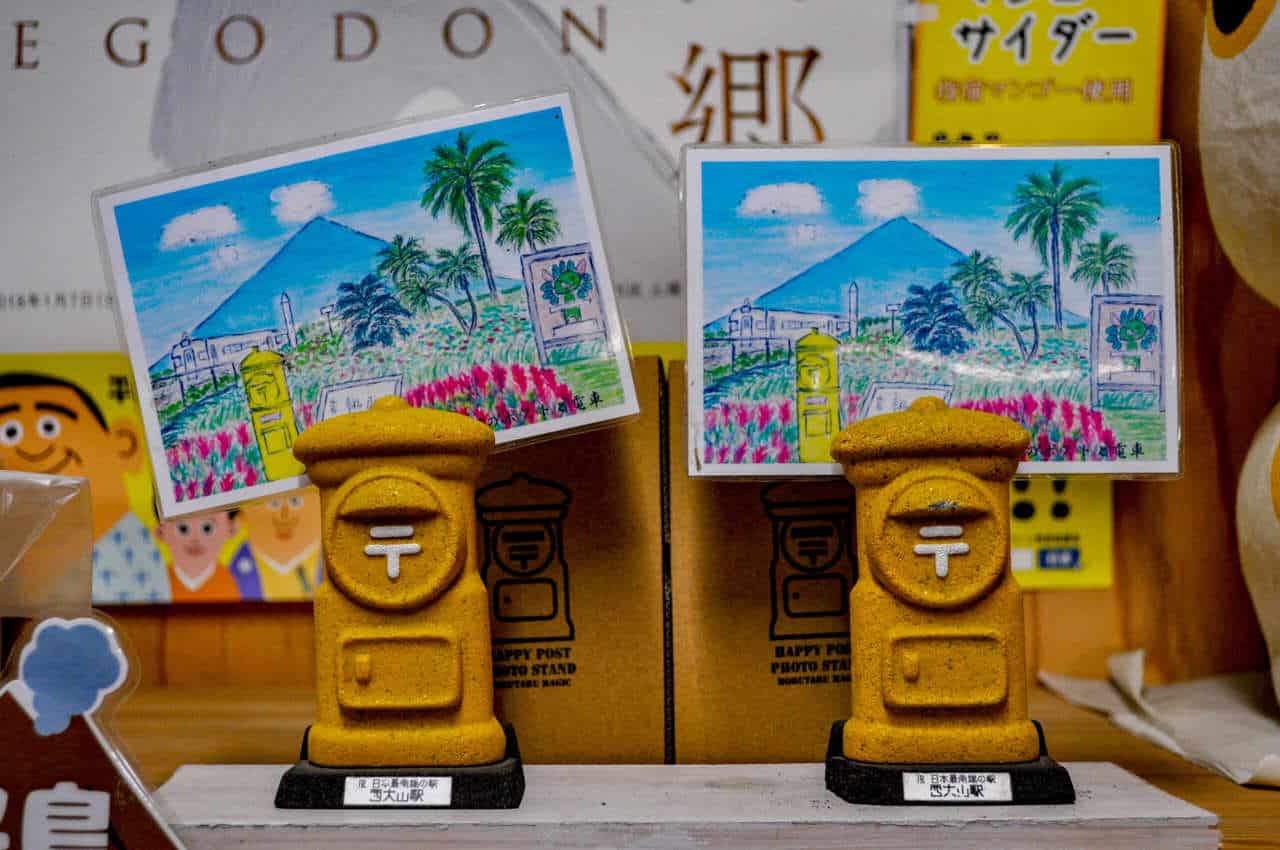
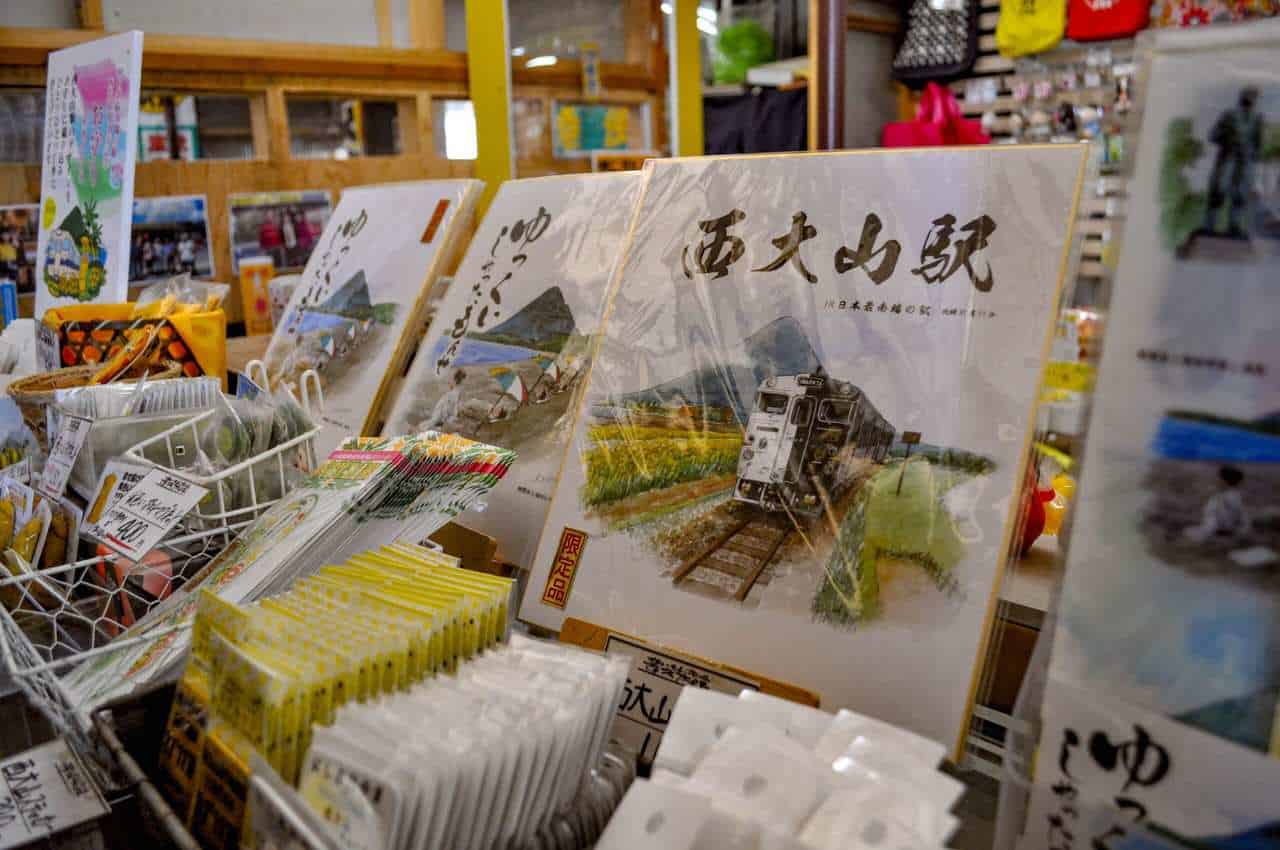
Cape Nagasakibana, birthplace of the Ryugu legend
At the end of the day, we headed to Cape Nagasakibana (長崎鼻), the southernmost point of the Satsuma Peninsula. Located on the coastline, it offers a breathtaking view of the East China Sea with its 11-meters high lighthouse, its stunning view of Mount Kaimondake, and its heart-shaped monument.
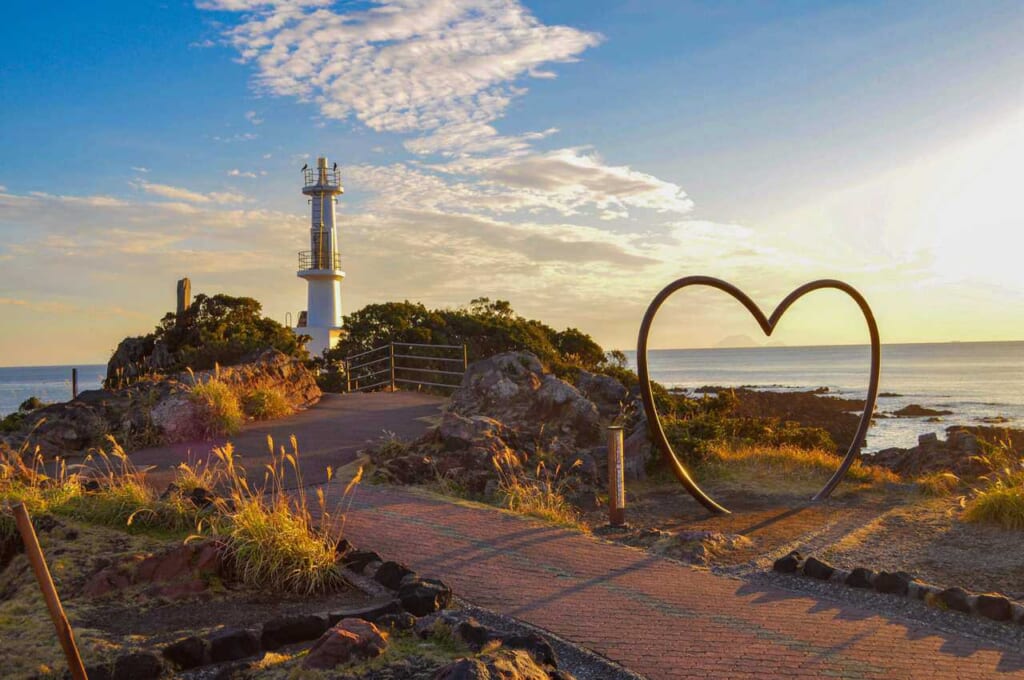
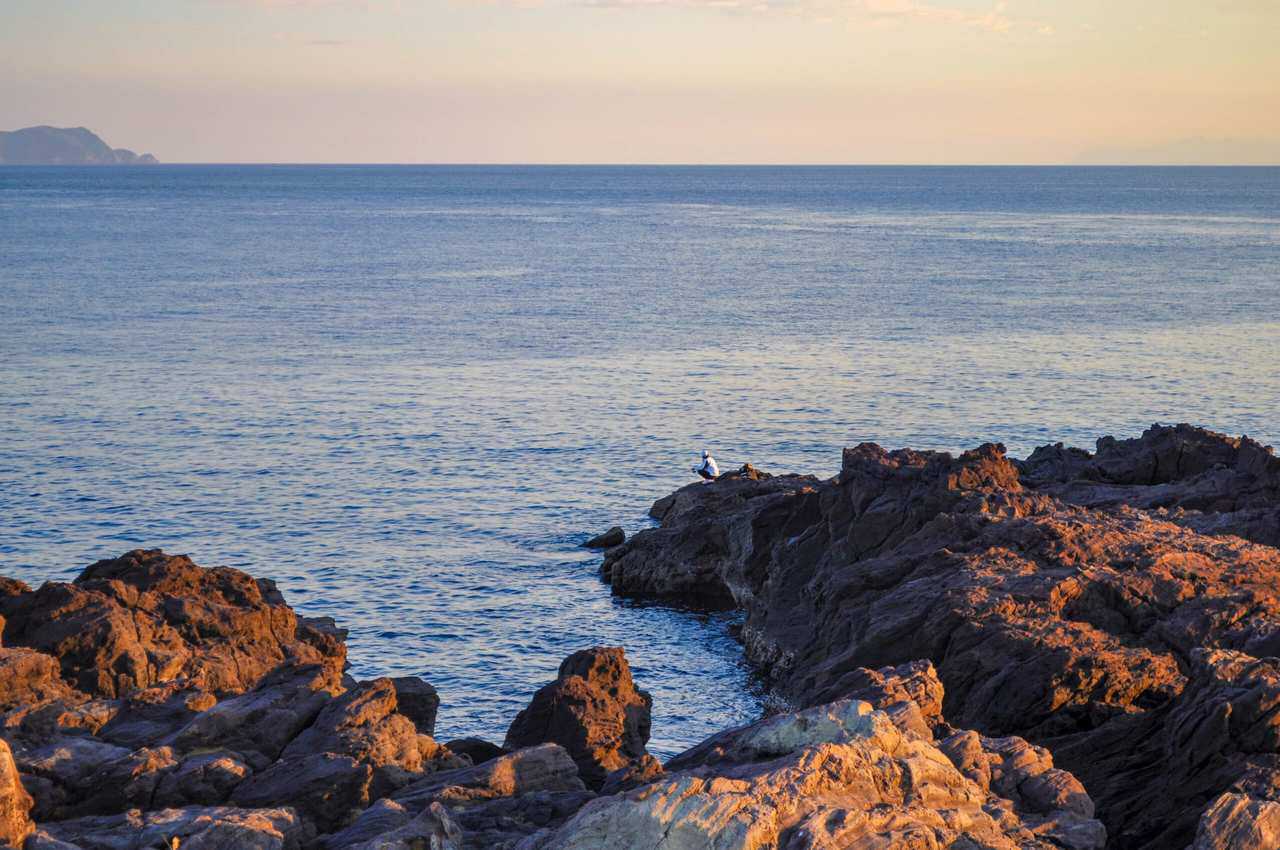
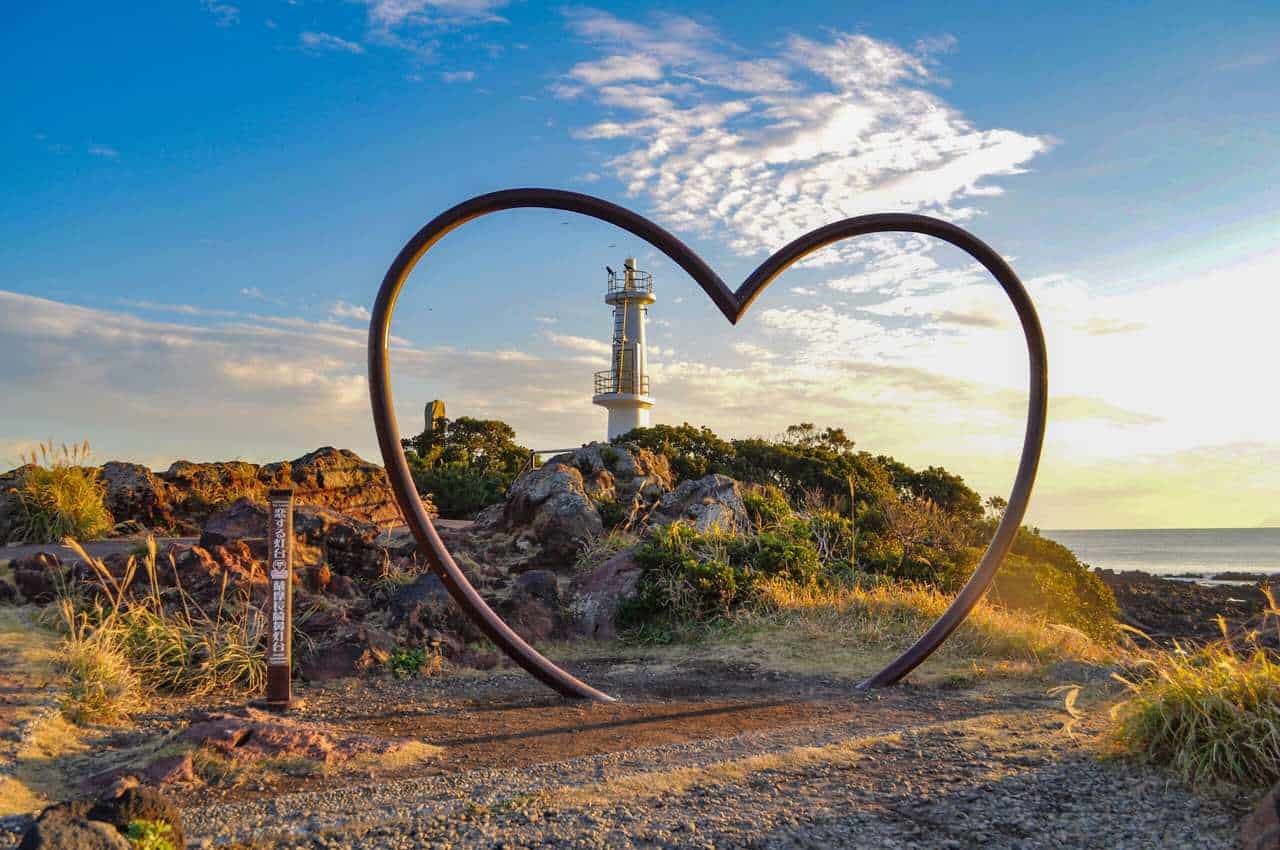
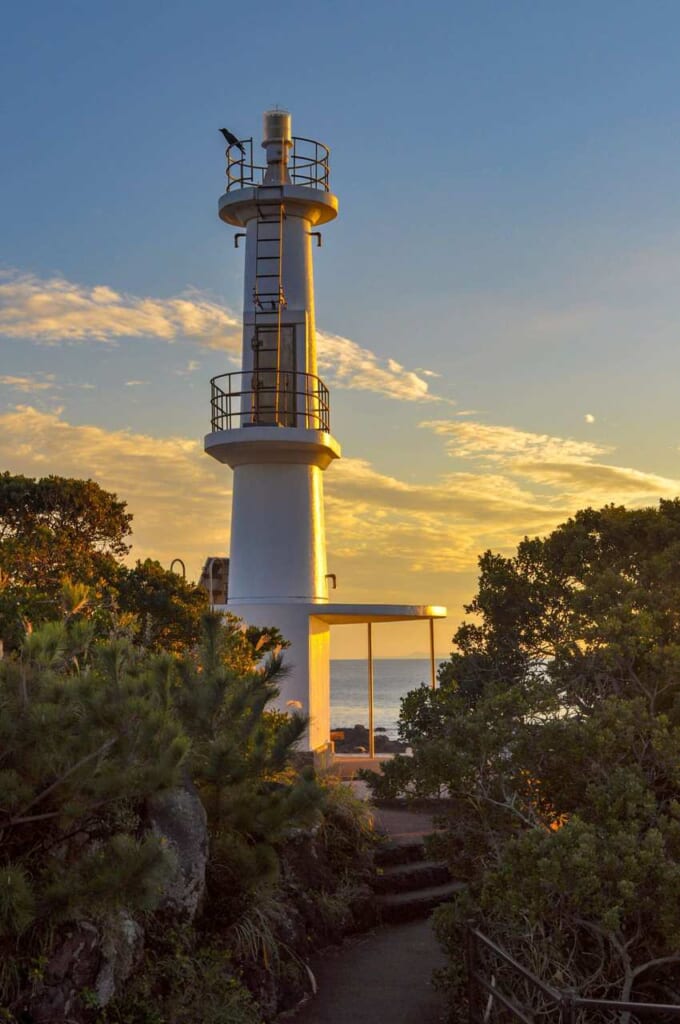
It is a famous meeting place for couples, and its romantic atmosphere attracts many visitors. During our visit, we had the chance to enjoy a clear sky and watch the sunset behind Mount Kaimondake. A colorful oasis that I will never forget!
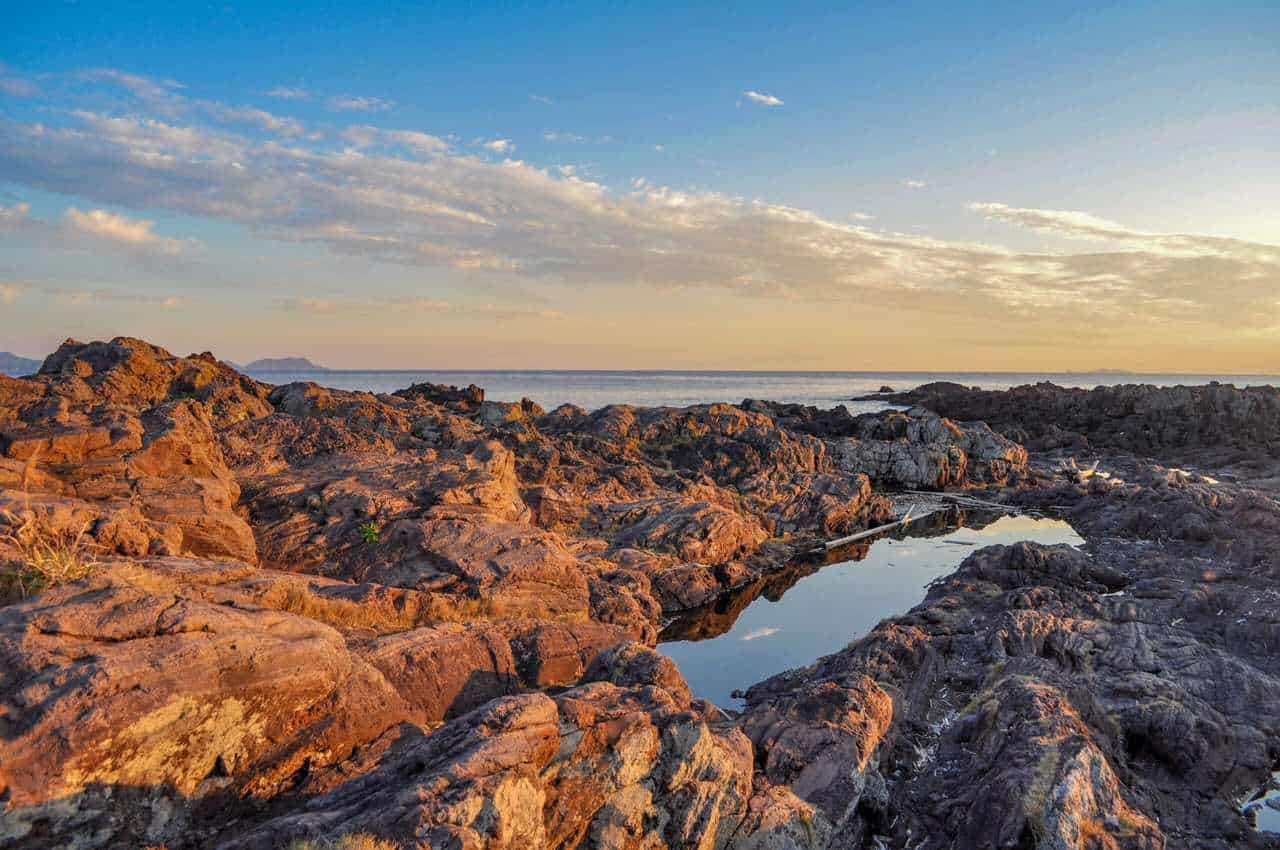
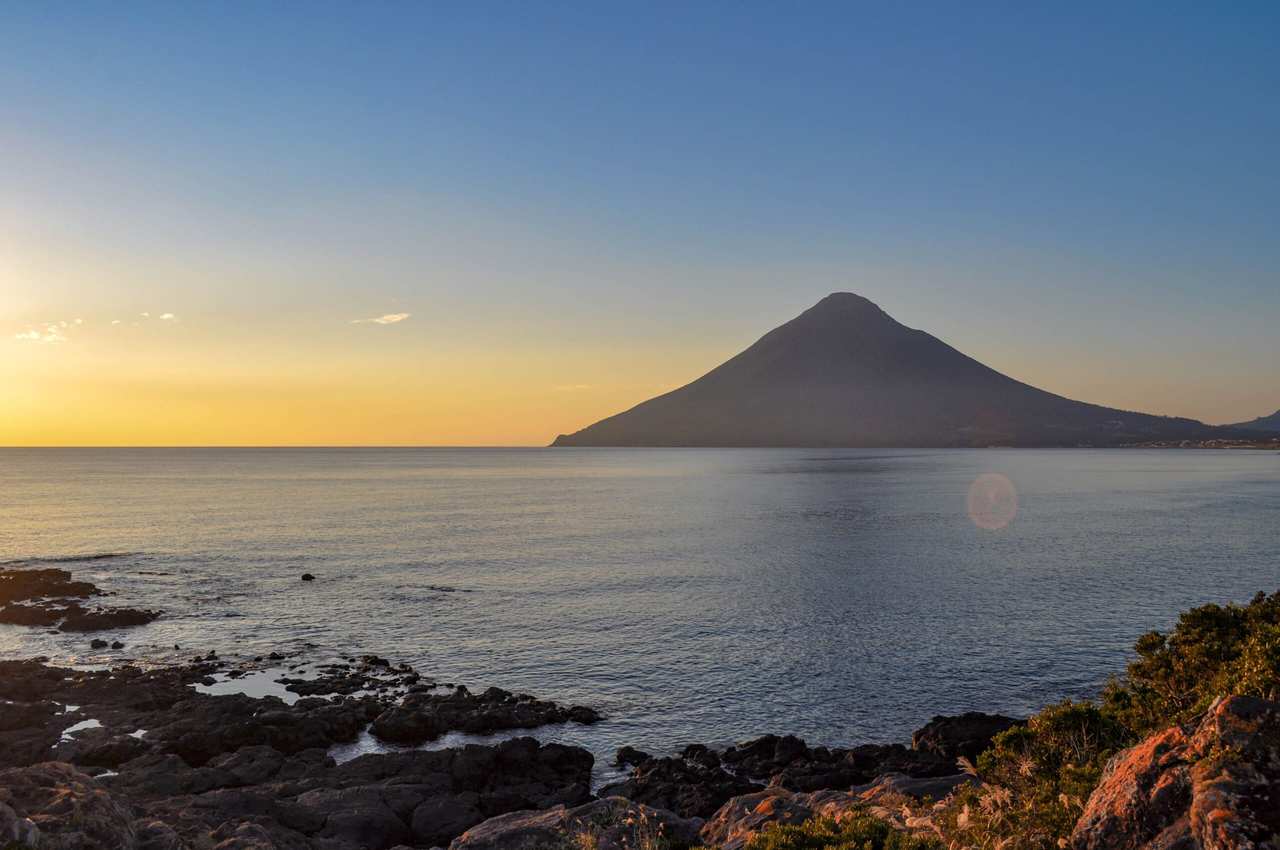
This cape is also related to the story of Urashima Taro, the hero of the oldest Japanese folk legend: the Ryugu legend.
The legend says that after having saved a sea turtle being troubled by children, Urashima Taro was invited by the turtle to ride on his back to Ryugu-jo, the castle of the Dragon King. There, he met princess Otohime who invited him to the celebrations of the castle. A few days later, Urashima Taro became homesick and told the princess that he was leaving. She sadly agreed and gave him a farewell present: a box that she strictly prohibited him to open.
When he came back home, Urashima Taro did not recognize anything of his former home. His home and relatives had disappeared. Centuries had actually passed since the beginning of his journey. He tried to call the turtle and the princess back, without any result. Despite the princess’s instructions, he opened the box, from which smoke escaped, transforming him into an old man.
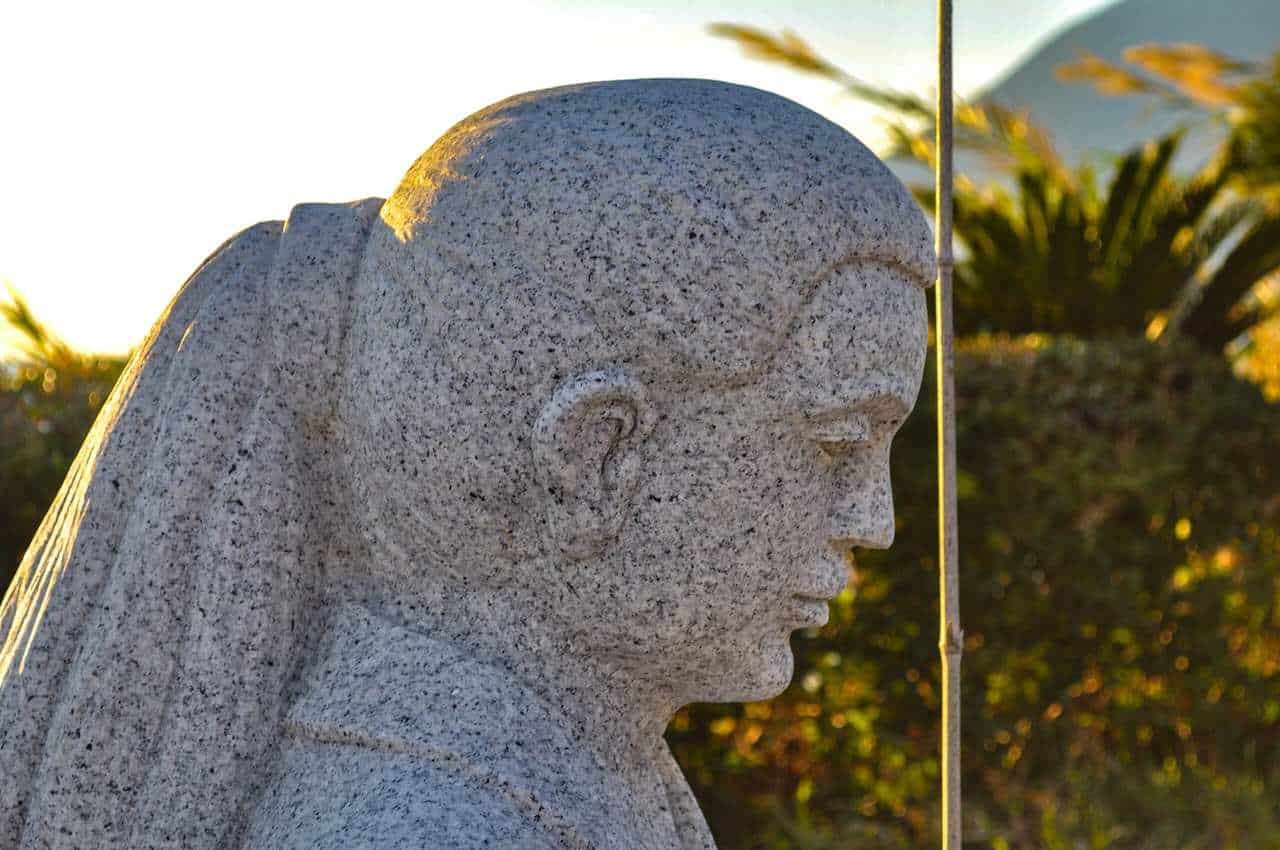
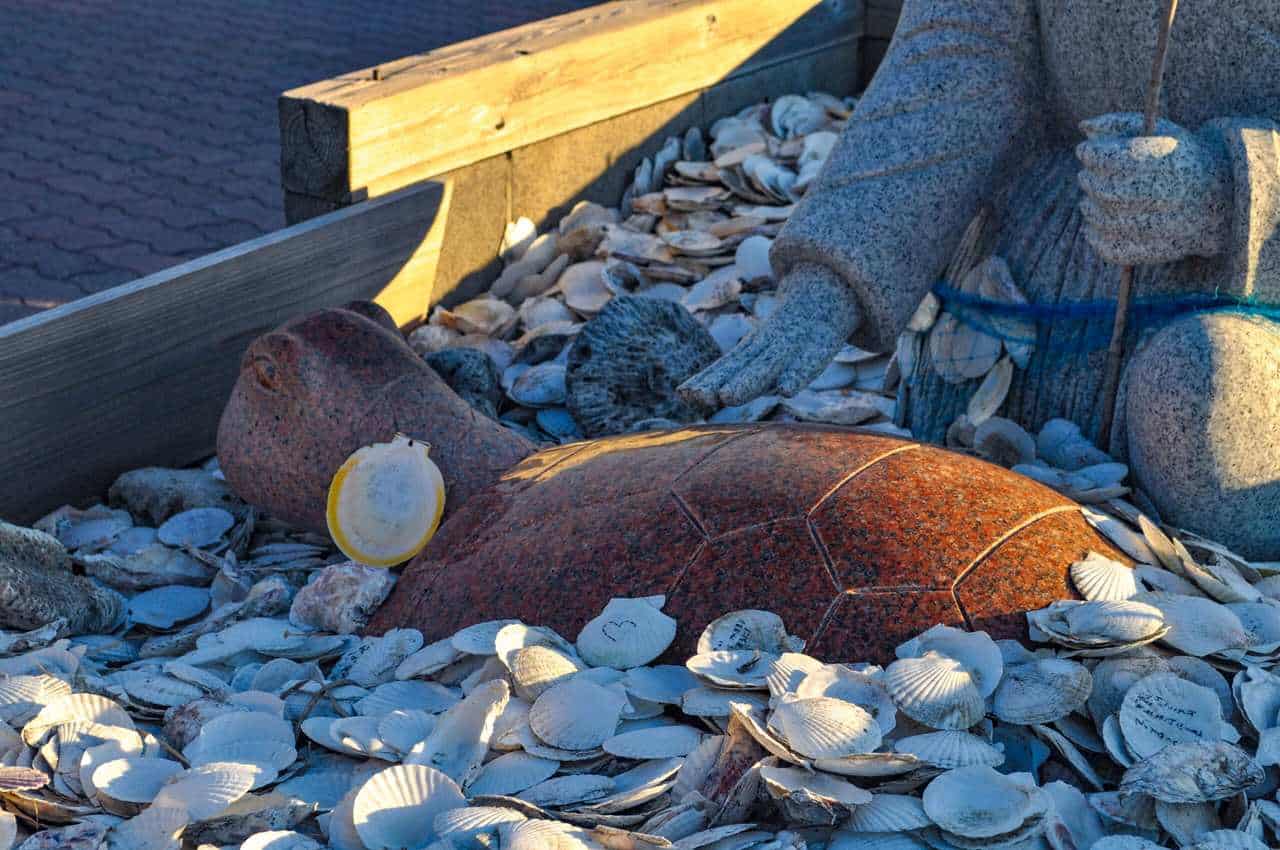
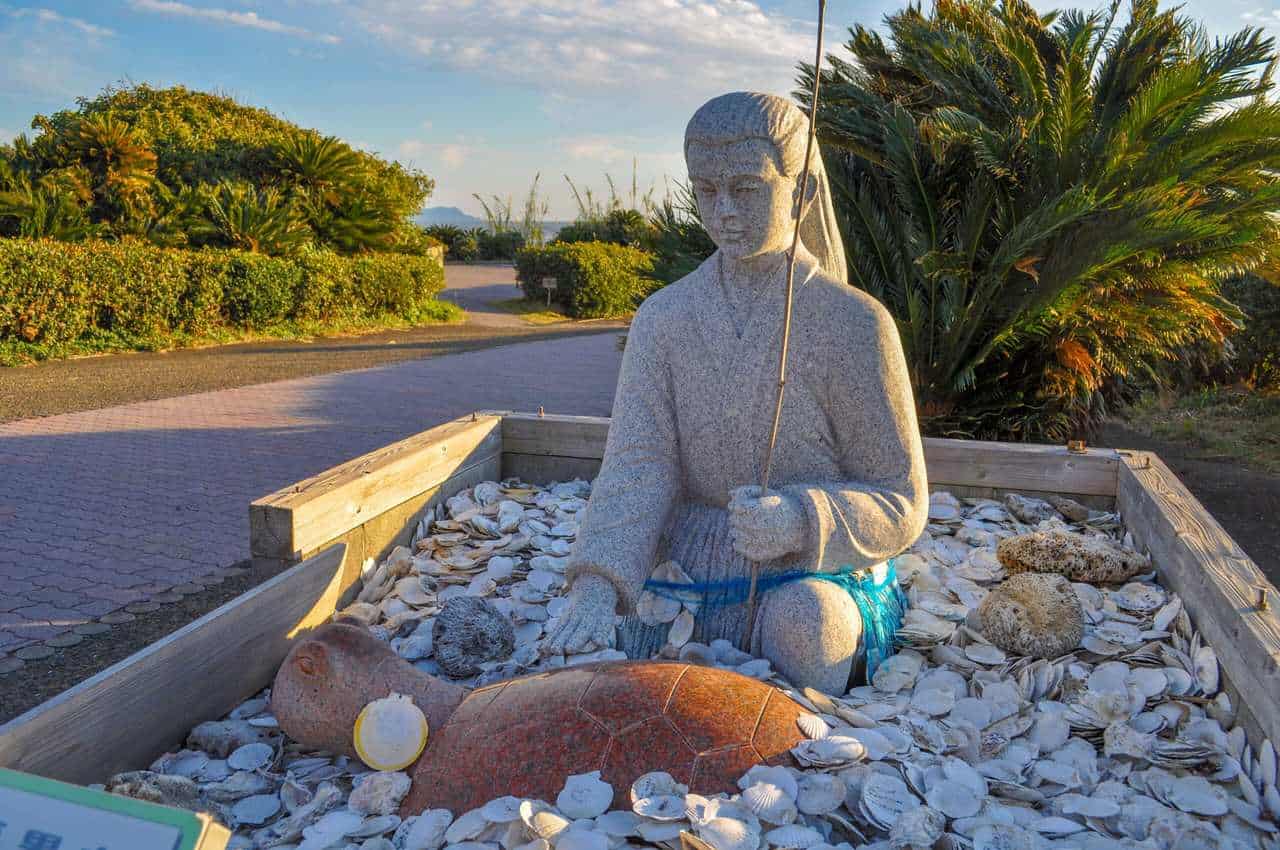
Cape Nagasakibana is the origin of several stories from Urashima Taro’s legend, so it is not surprising to find a statue of him and the turtle that took him on his legendary journey there. It is said that if you walk around the statue twice (to the left for men and to the right for women), you will meet your soulmate.
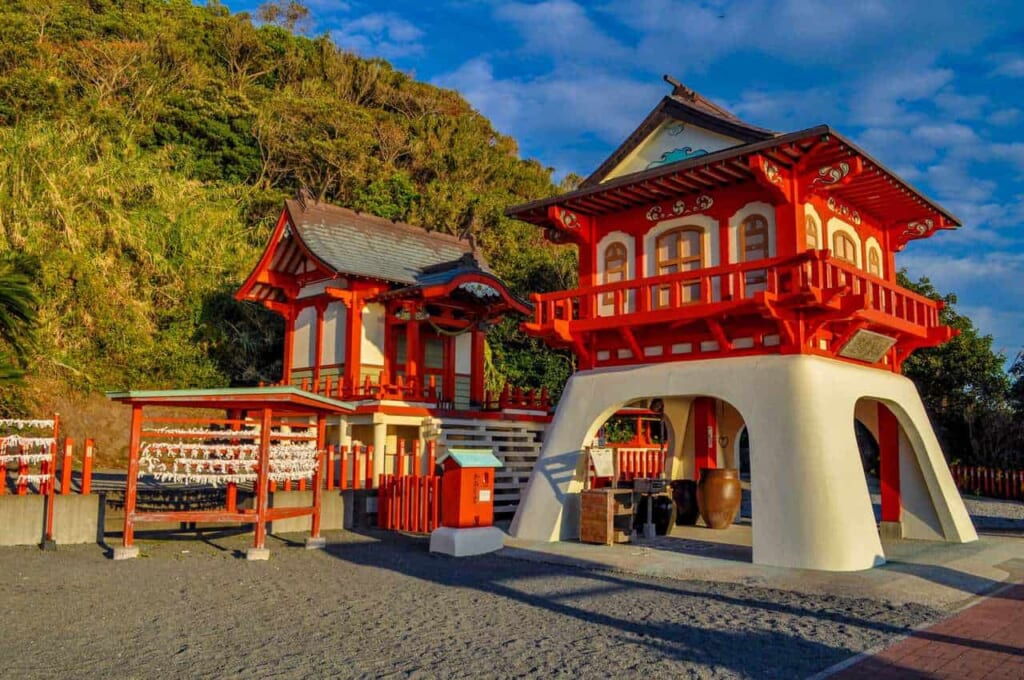
At Ryugu Shrine, you can get an unusual ema. These wish plaques are usually made of wood, but here you can write your wish on a seashell. Once written, put it among the other shells and hope that your wish will be heard by Otohime, the divinity of the shrine.
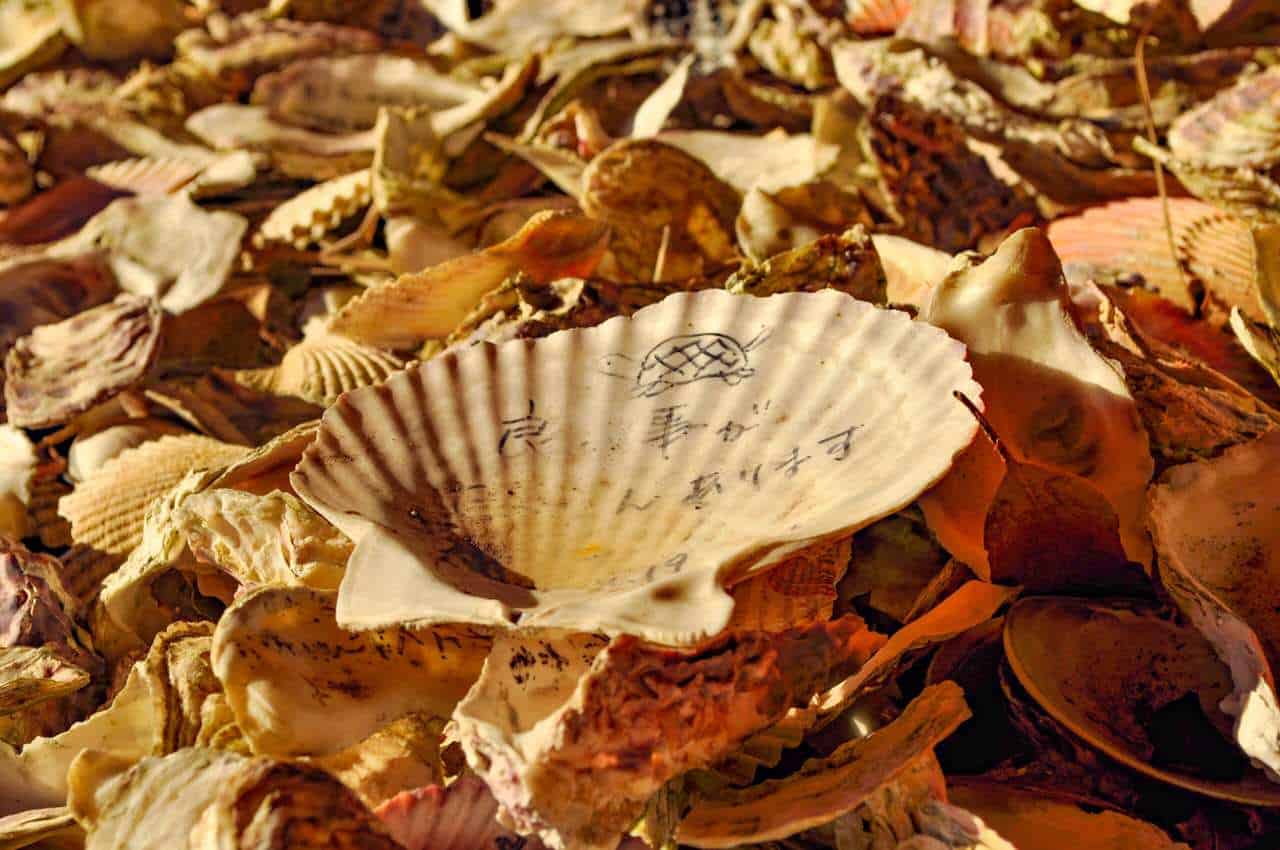

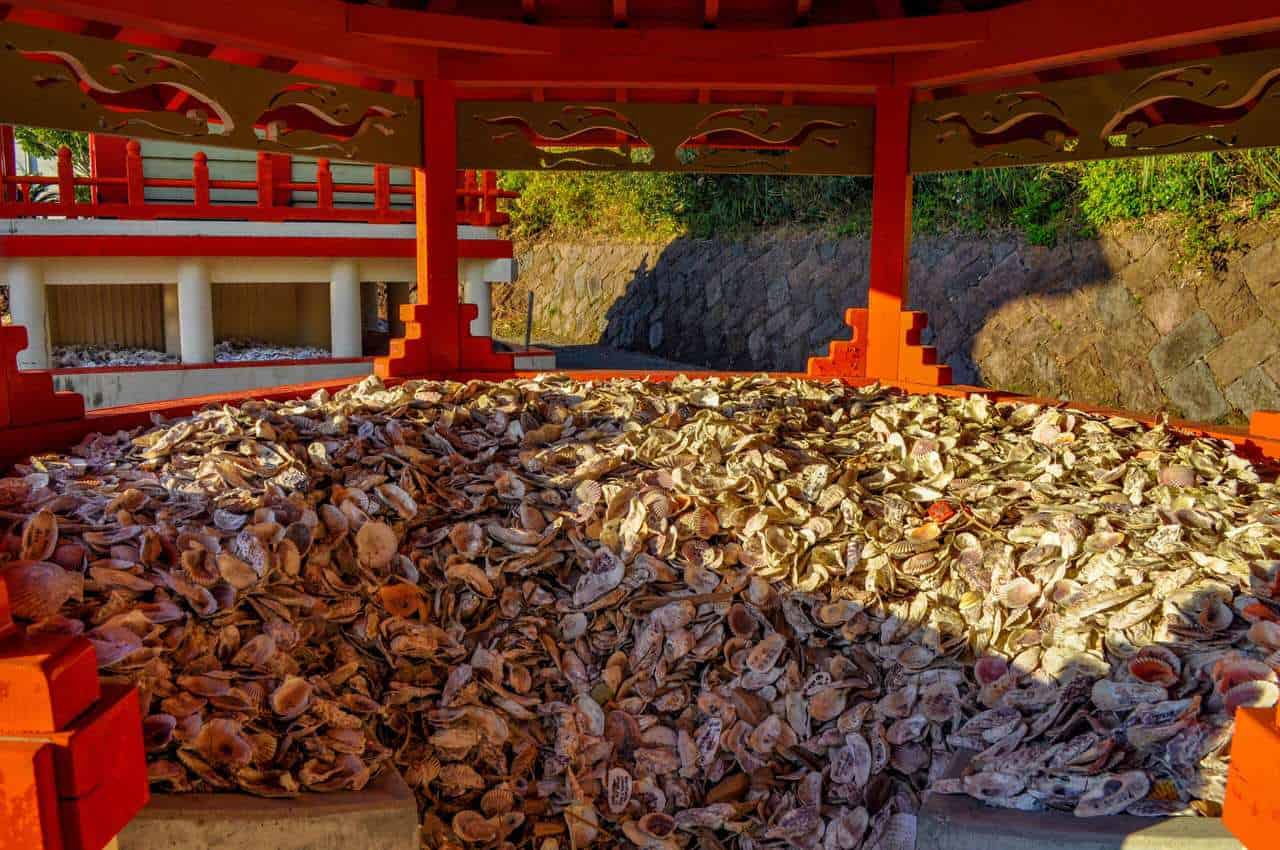
Ibusuki Hakusuikan, a ryokan that smells like beach
Once the night fell, I went to Ibusuki Hakusuikan, a 4-star ryokan where I was going to try an activity specific to Ibusuki: the hot sand baths.
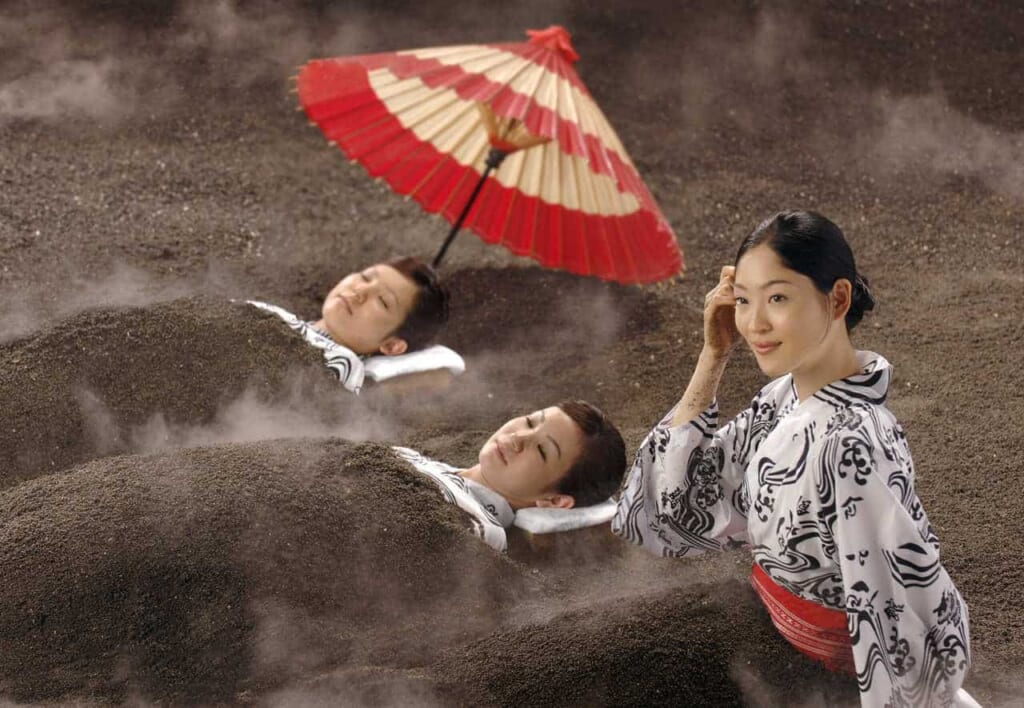
Called sunaburo (砂風呂) or sunamushi (砂むし), these are black sand baths reaching 50°C, famous for their healing properties. The experience involves being buried under the sand naturally heated by the volcanic hot springs of the area. It’s an unusual spa treatment very popular with the Japanese. Sunaburo baths can be found in other parts of Kyushu, but Ibusuki is the only place in the world to offer this kind of activity for more than three centuries!
Hot sand baths contain sodium chloride which helps blood circulation and calms nerve damage. They are particularly recommended for soothing joint and breathing disorders. Their detoxing properties are particularly appreciated by women because they have the particularity of beautifying the skin. However, they are not recommended for pregnant women and people with heart problems.
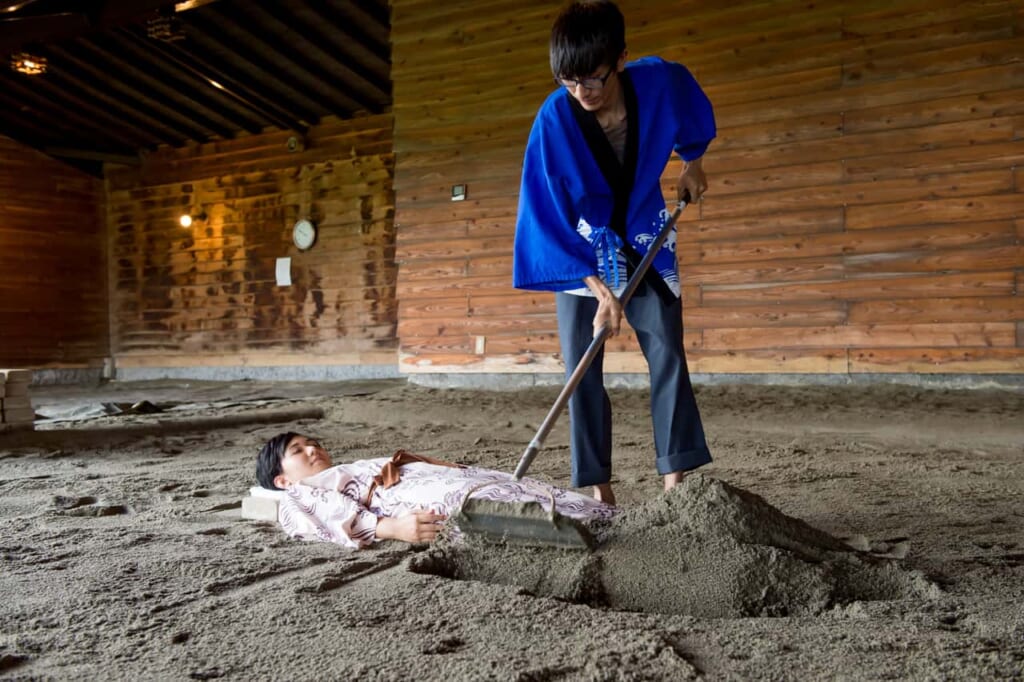
You start by putting on a yukata before lying down on the sand where the staff will cover you from neck to feet. Although I’m not claustrophobic, the first few minutes were difficult: I felt like a sweet potato as I was being buried. The weight of the sand felt heavy on my body and I could feel my heart rate rising. The staff was very attentive and suggested I move a bit. Once I did that, I was able to find a good balance and started to relax. The experience lasts between 10 and 15 minutes. Despite the surprise effect at the beginning, time flies without even realizing it!
Once the 15 minutes are over, take a well-deserved shower before relaxing in the onsen.
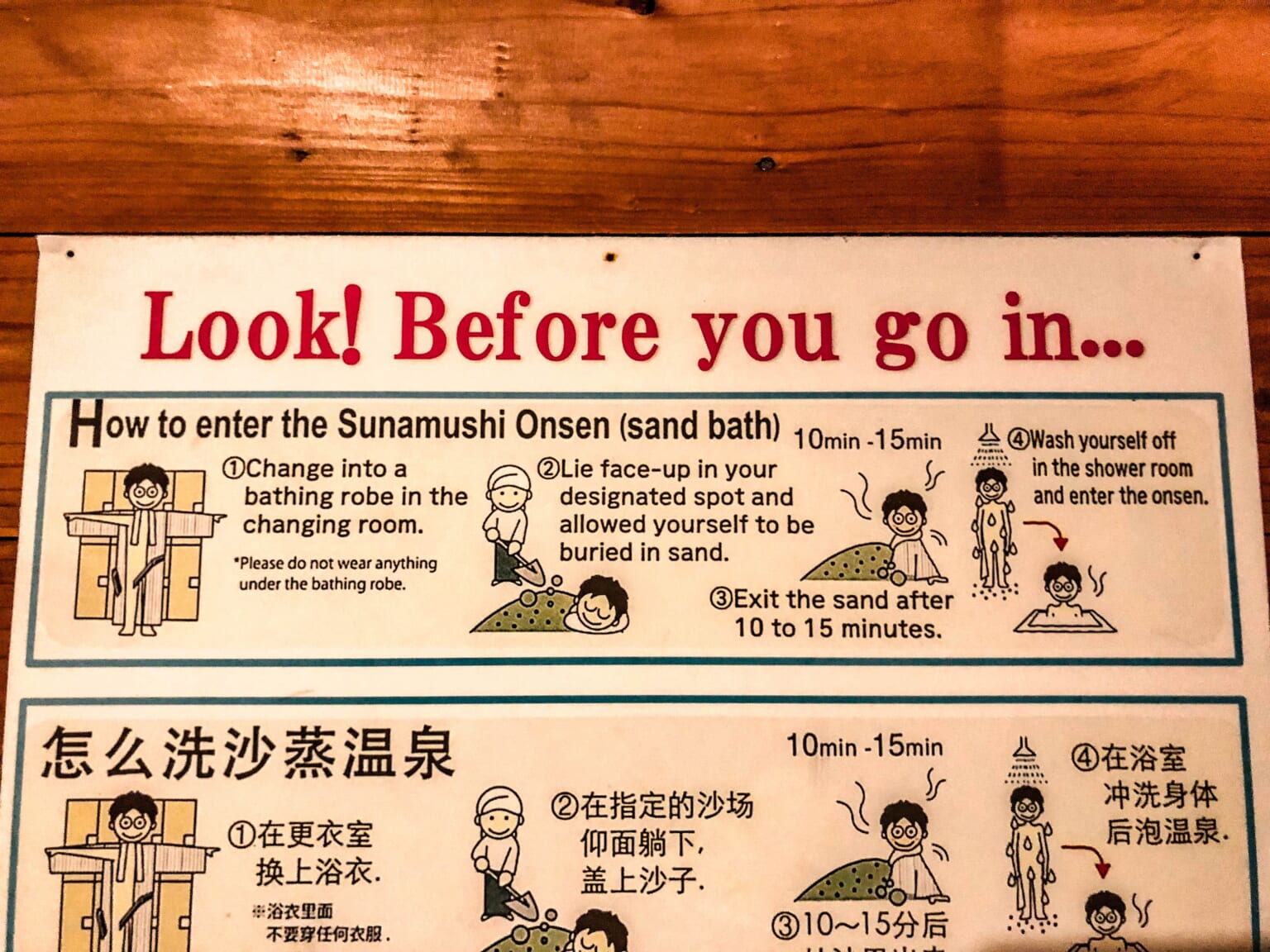
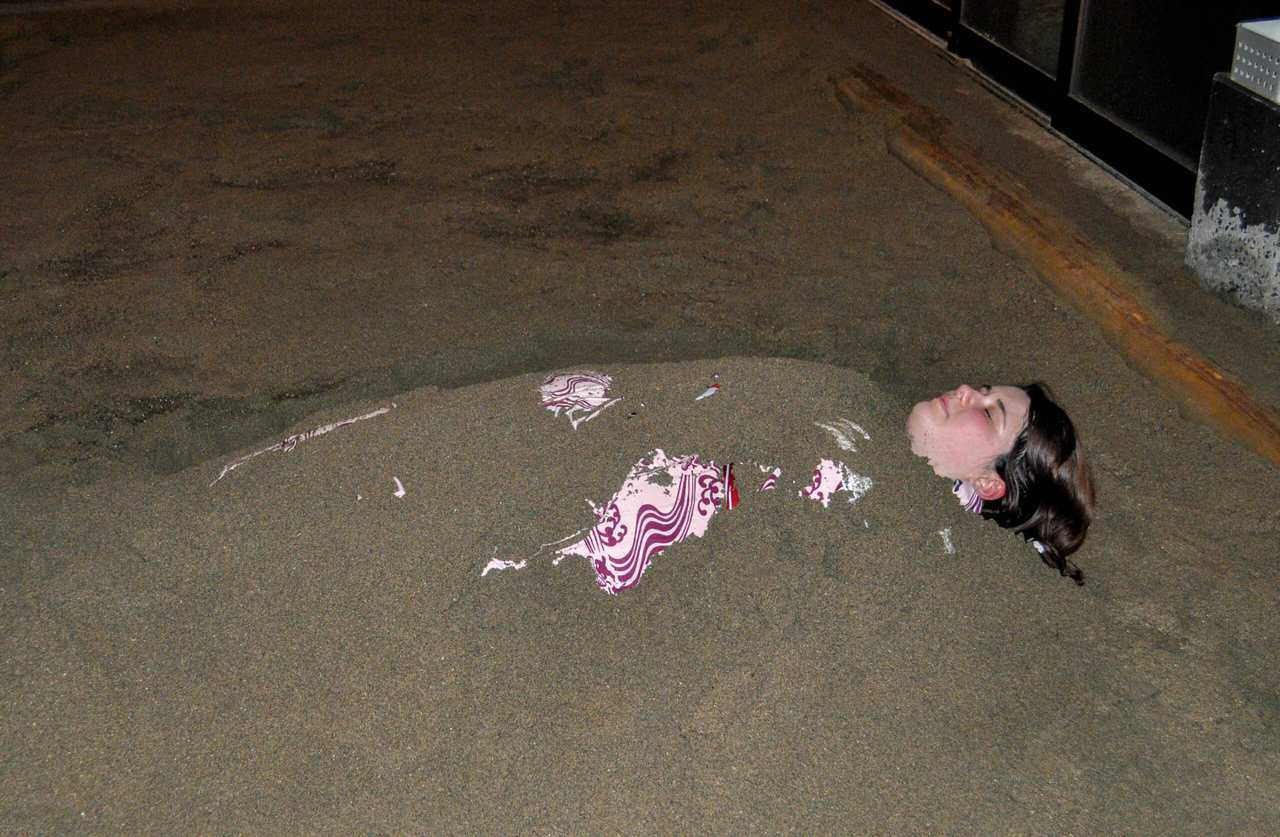
The Genroku bath of Hakusuikan was a great surprise! The place is huge, like the bathhouse of the Studio Ghibli animated film, Spirited Away. It is a reproduction of traditional baths of the Genroku era (1688-1703), a real thermal paradise with whirlpools, sauna, and outdoor onsen. This experience allowed me to better understand the famous “onsen culture” that the Japanese are so crazy about.
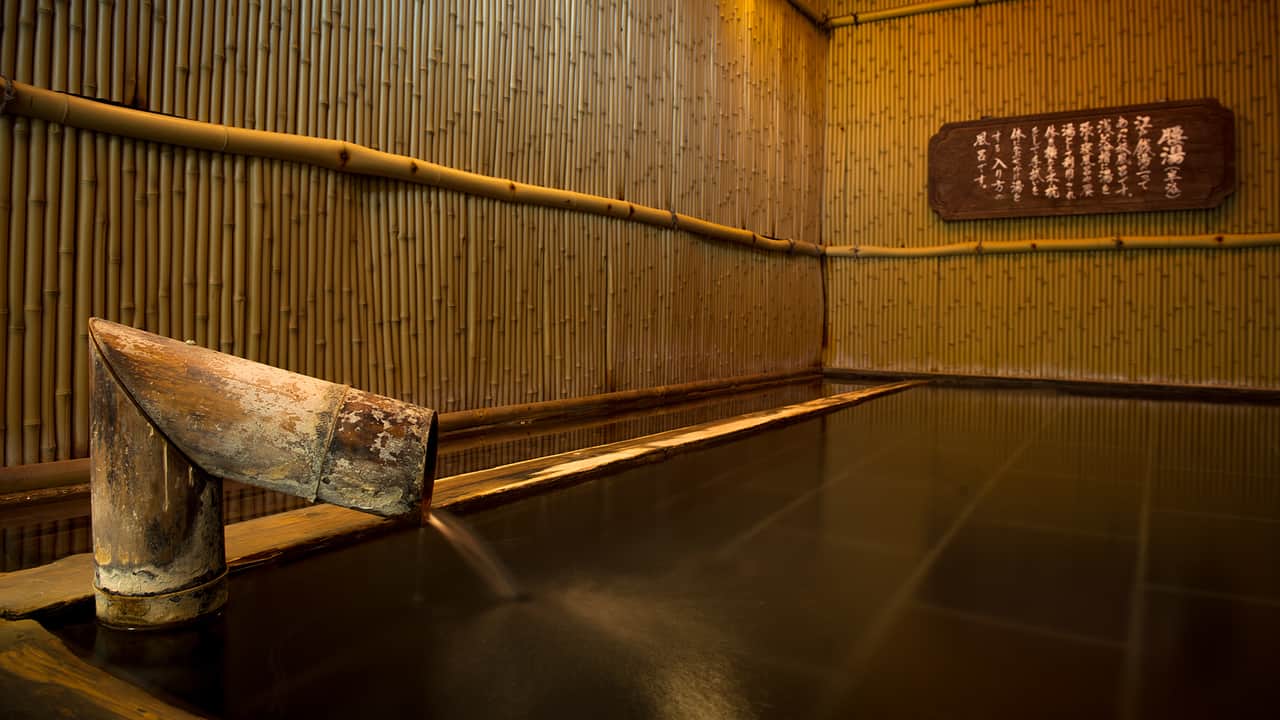
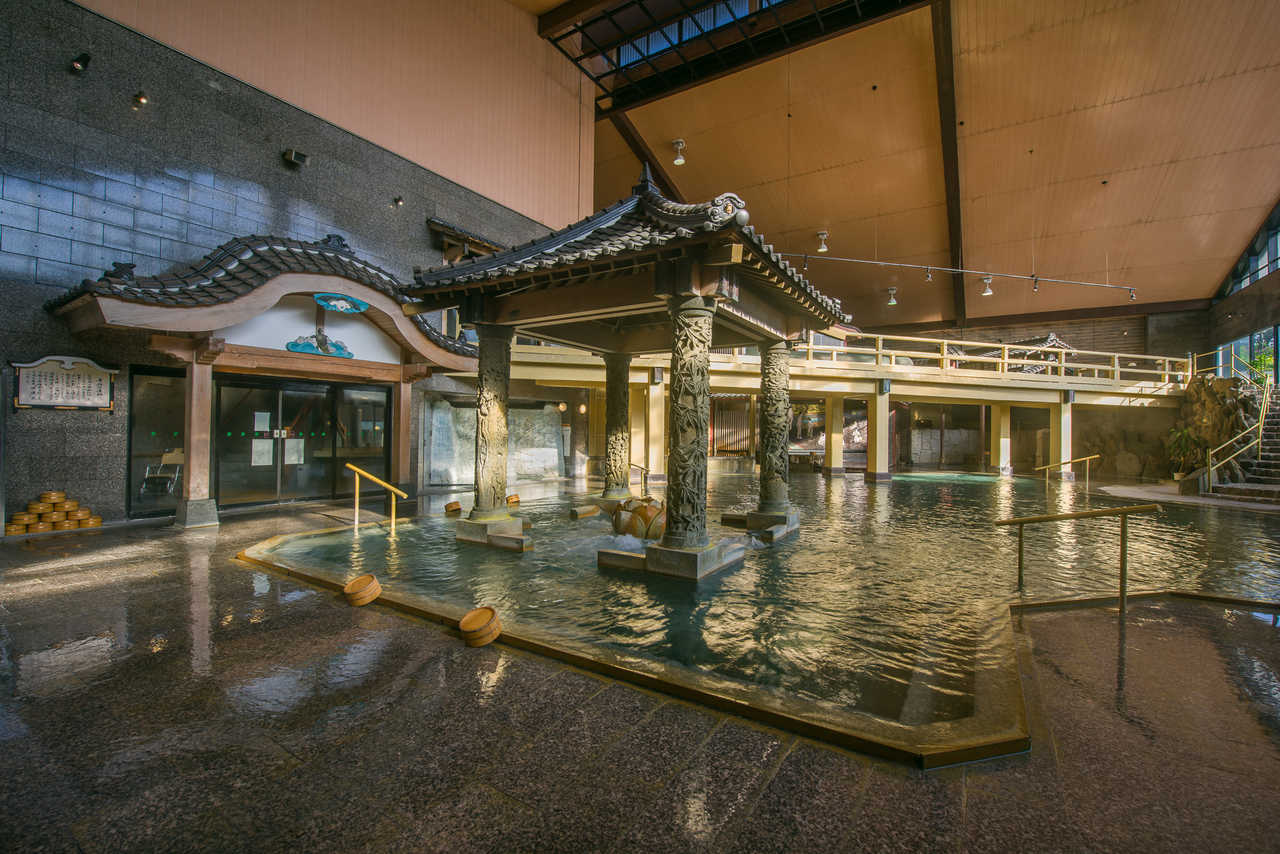
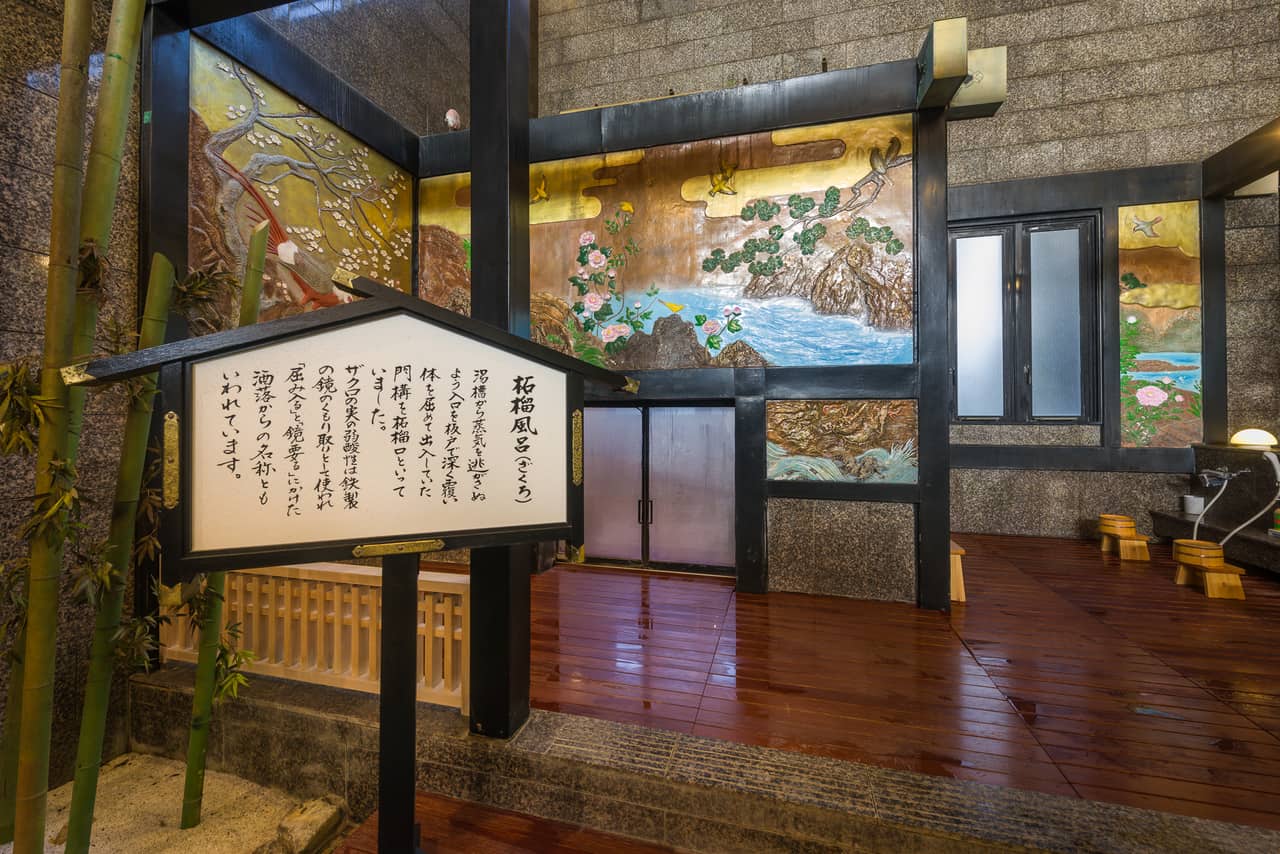
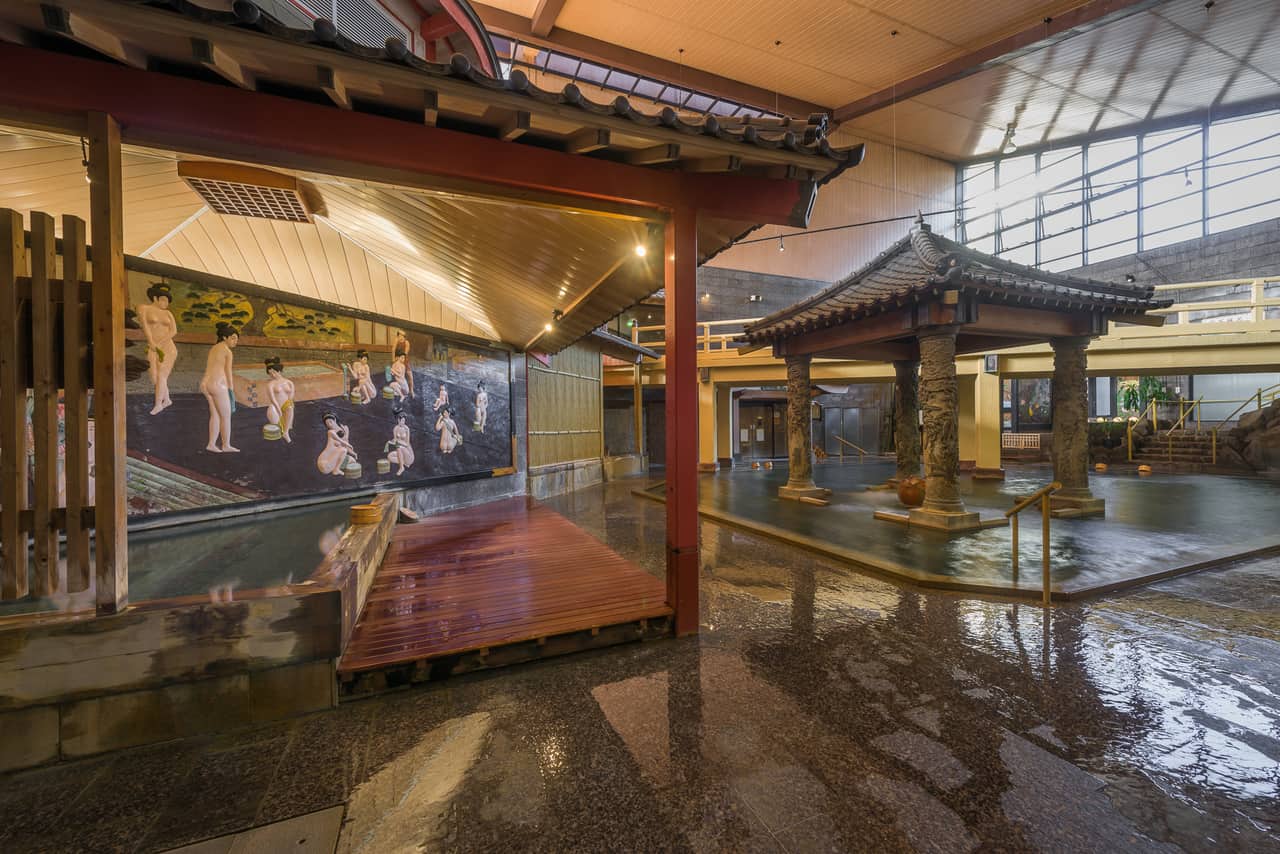
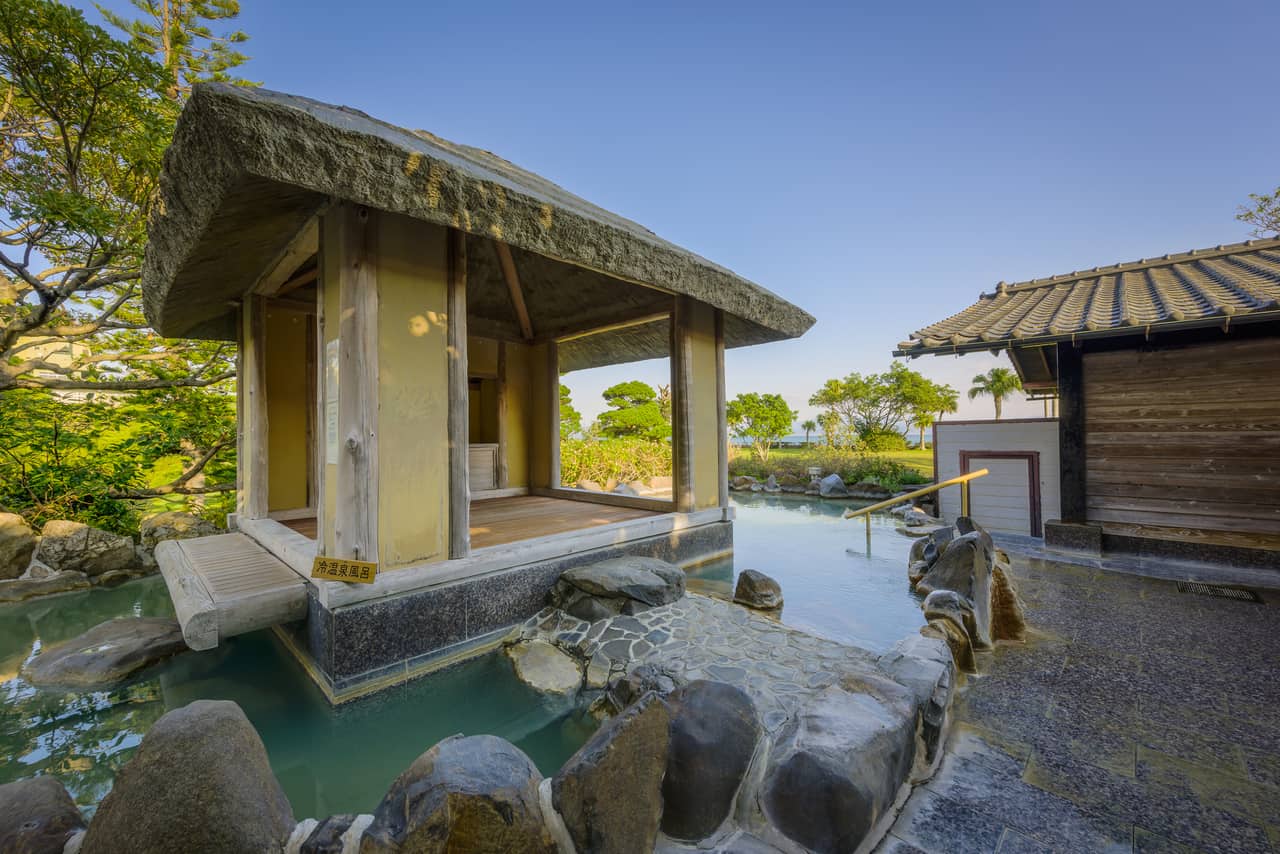
The dinner was just as magical. I had the chance to taste a kaiseki meal made from many small, seasonal dishes: Japanese gastronomy in its purest form! It is a cuisine based not only on taste but also on the harmony of shapes, textures, and colors. It is a true art and only a few great restaurants know how to prepare it.
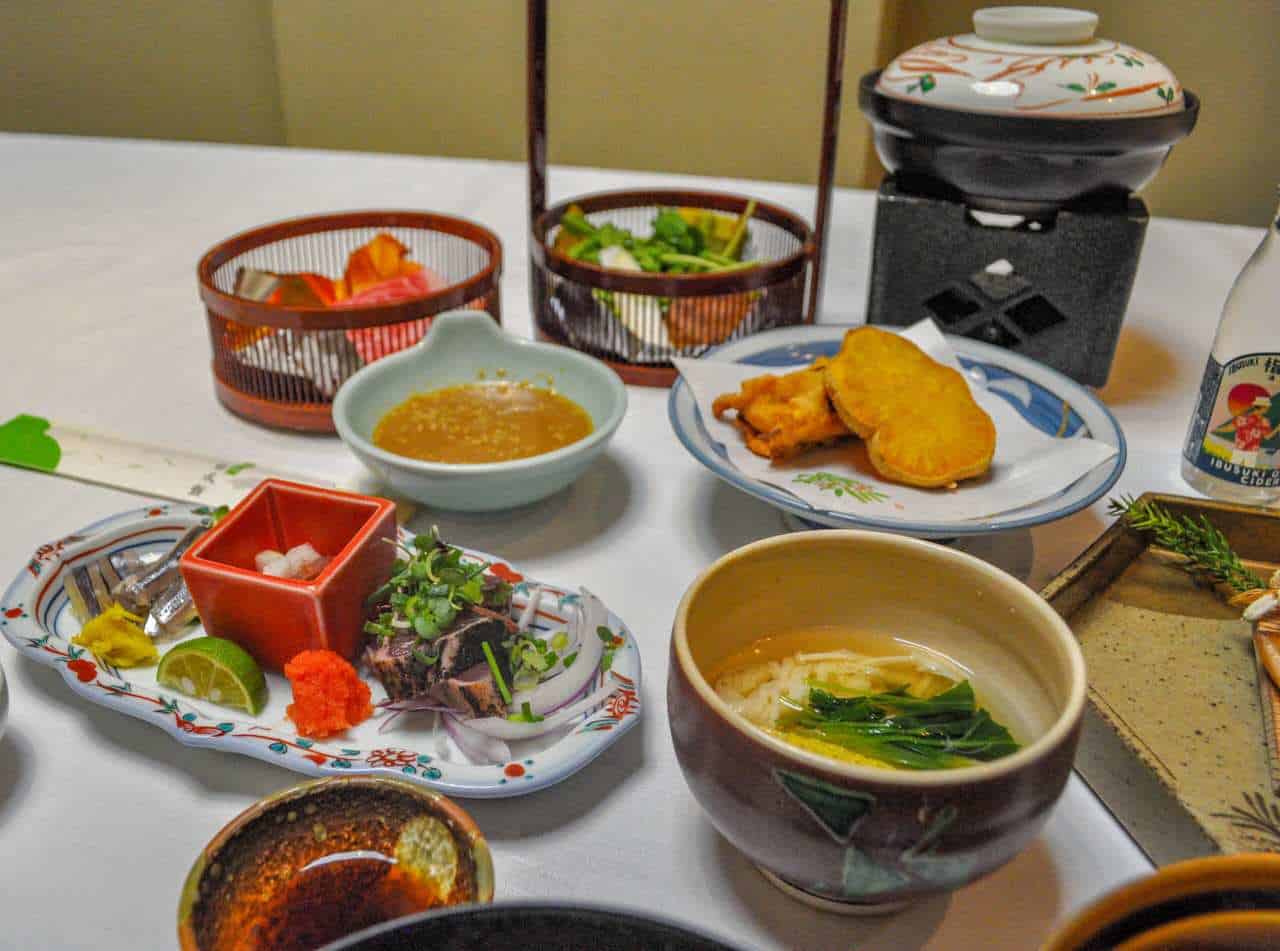
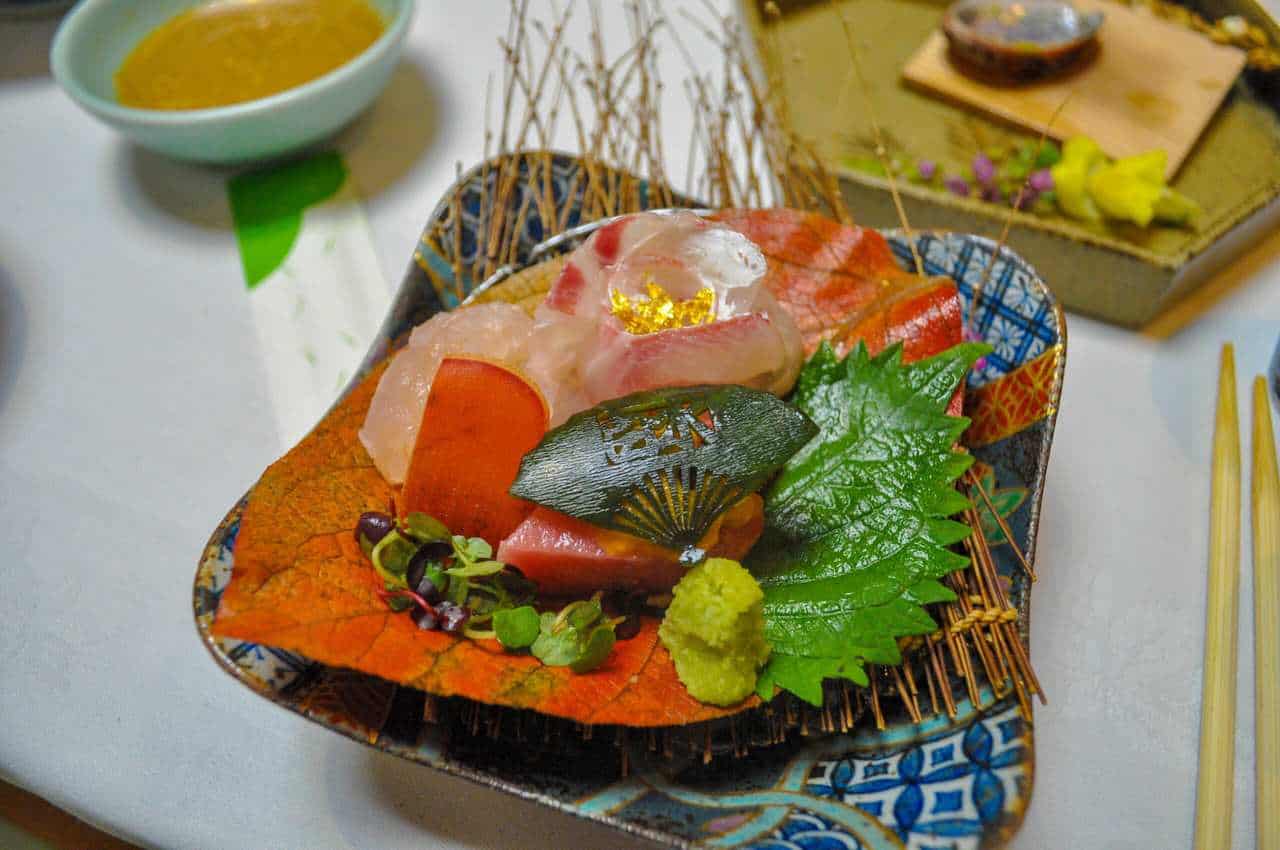
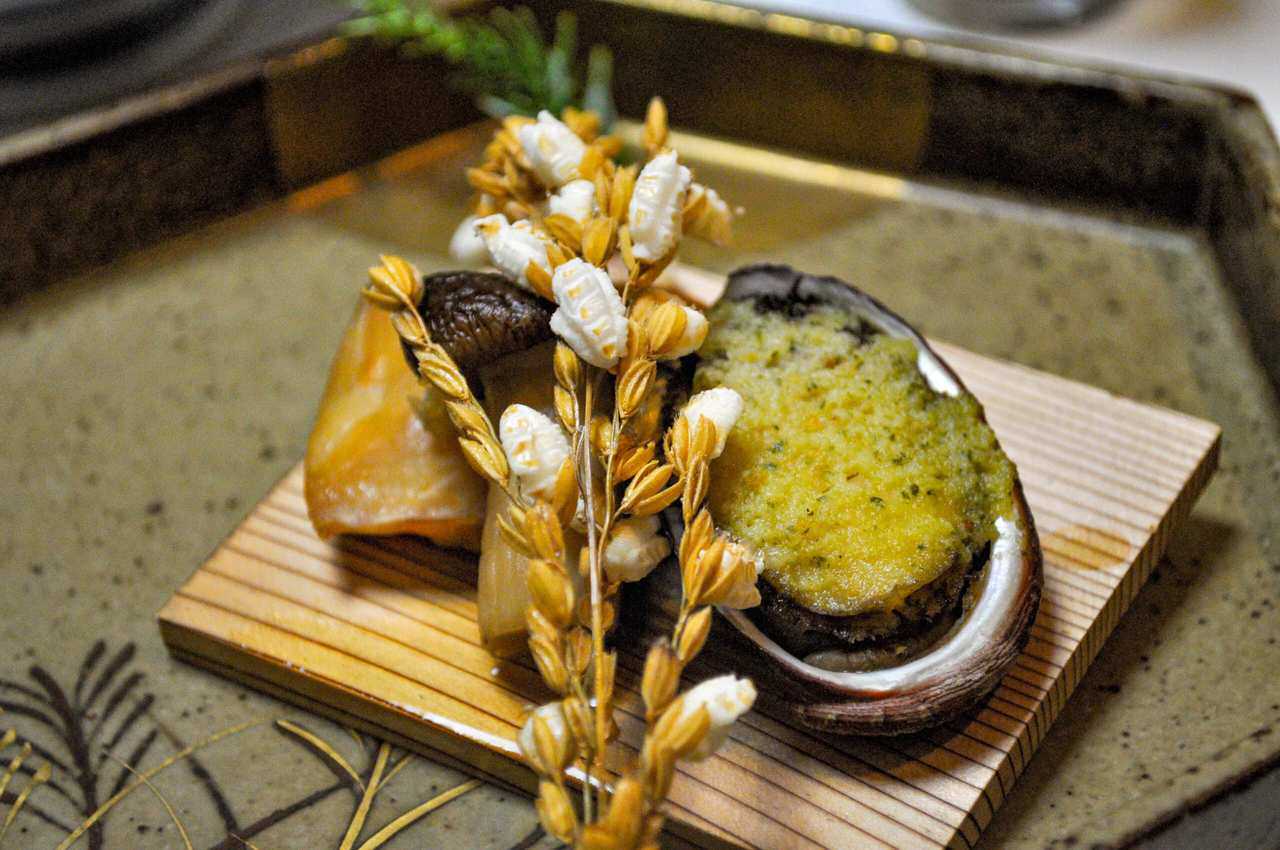
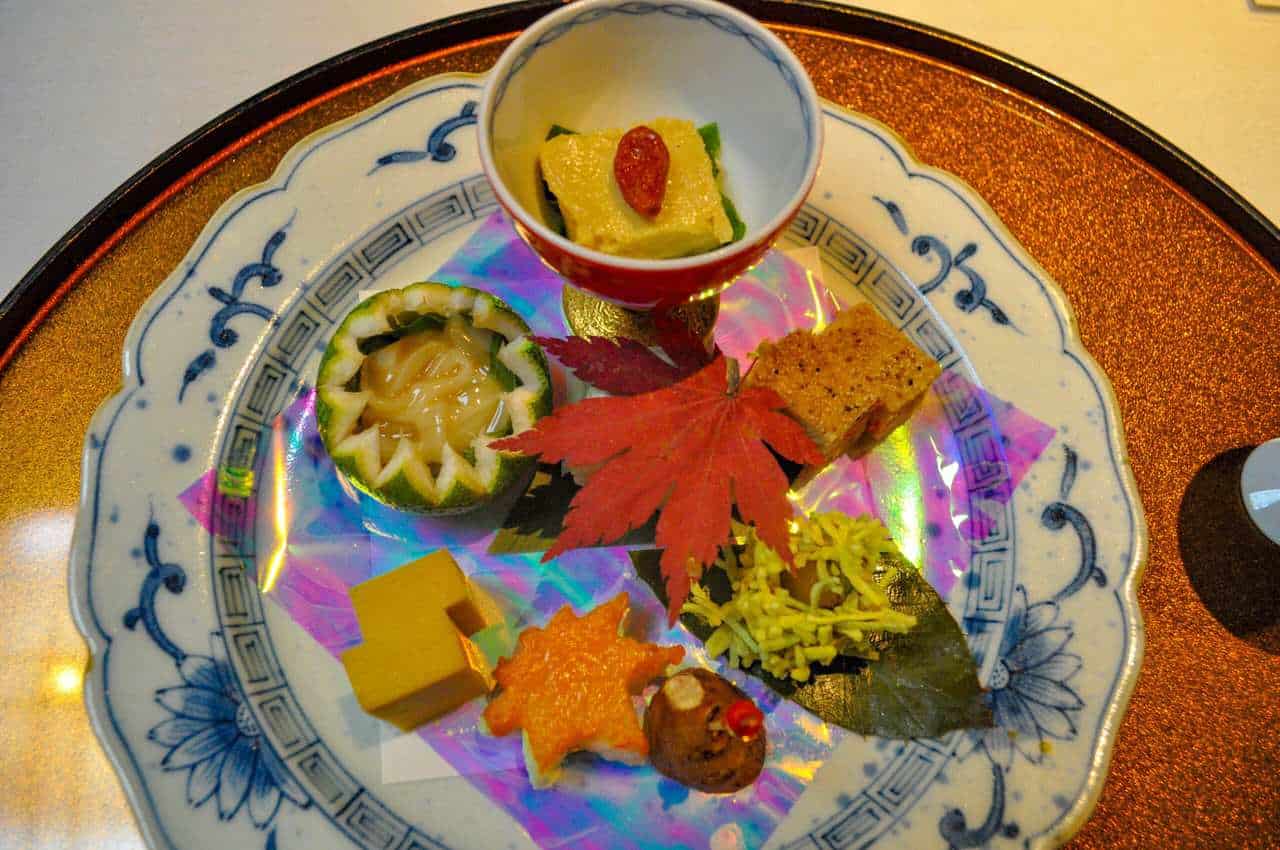
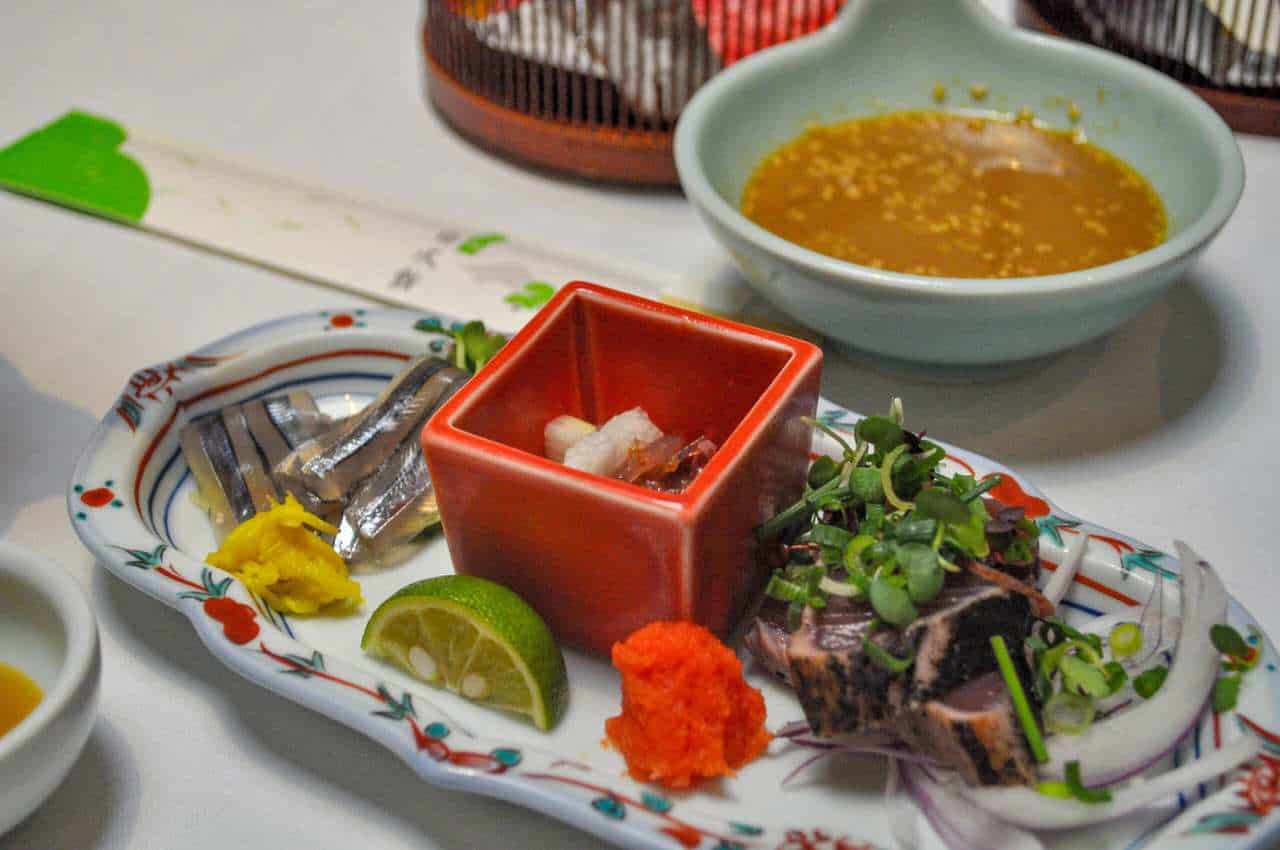
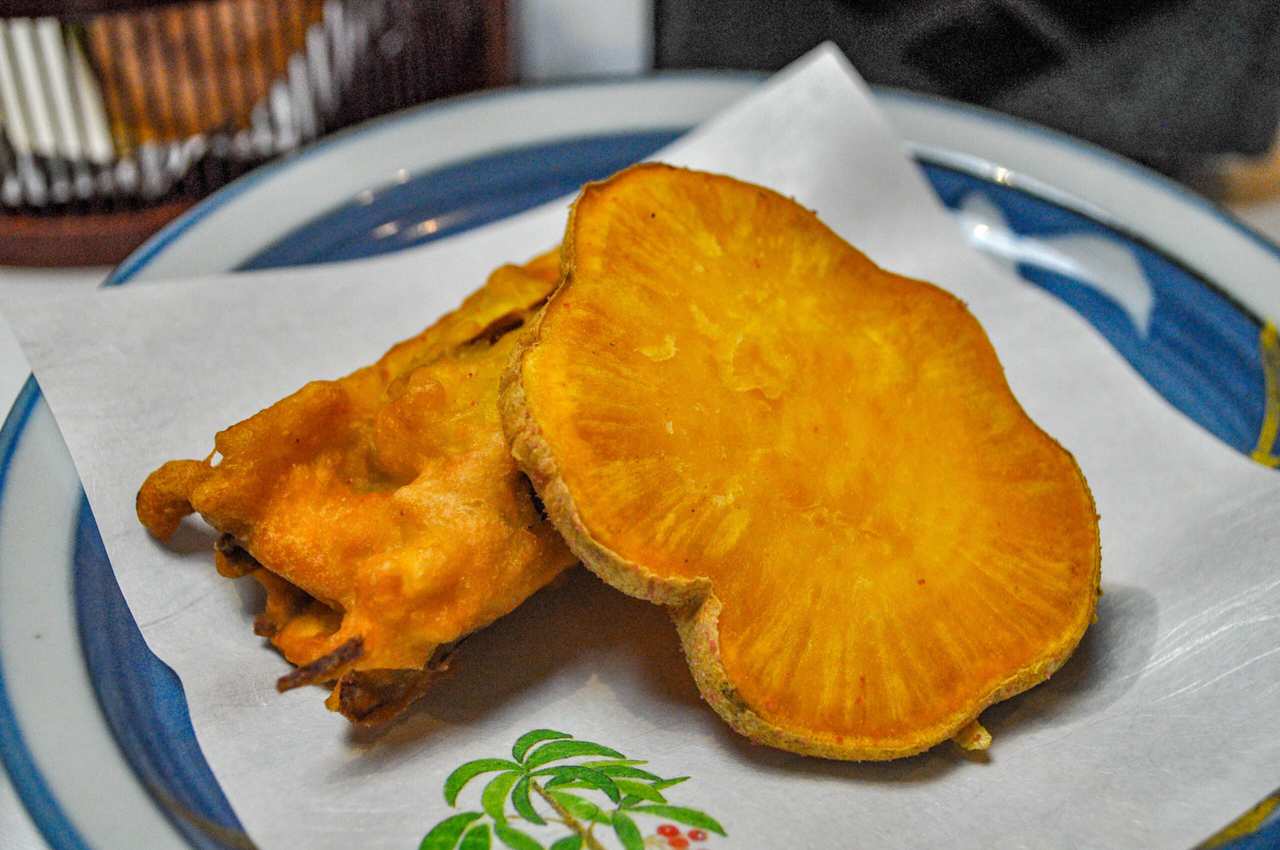
It would be difficult to tell you about each of the 13 dishes. However, some dishes surprised me more than others, starting with the sea bream sashimi covered with gold leaf. So elegant! Although the gold has no particular taste, it brings a unique elegance. I was able to discover some local dishes, such as grilled sweet potato or bonito tataki. But the star of the dinner was without any doubt the wagyu beef shabu-shabu. Kagoshima is famous for its wagyu beef which is certified for its authenticity. This Japanese-style fondue includes cooking various ingredients in a dashi broth. A tasty dish that will warm your heart during cold winter evenings.
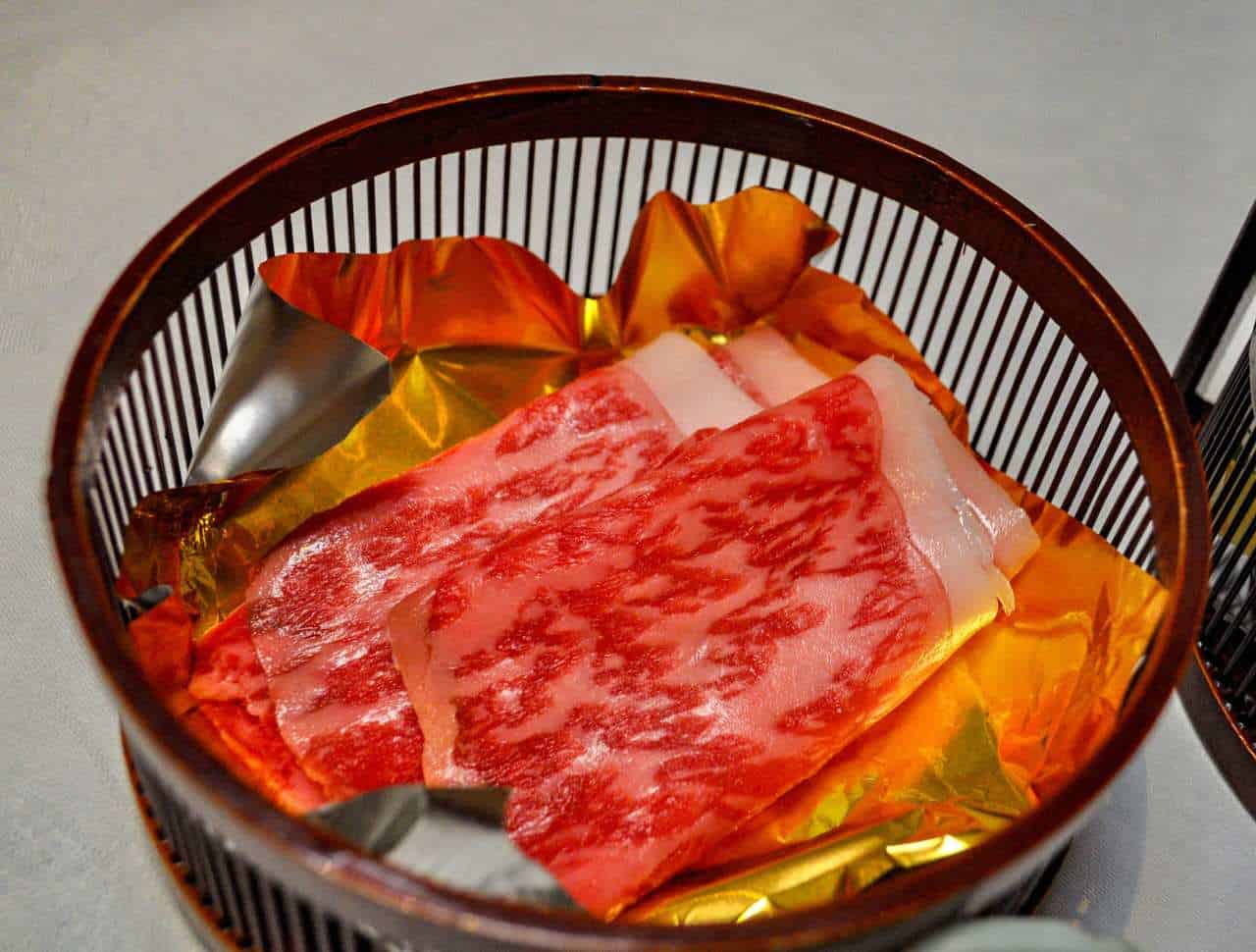
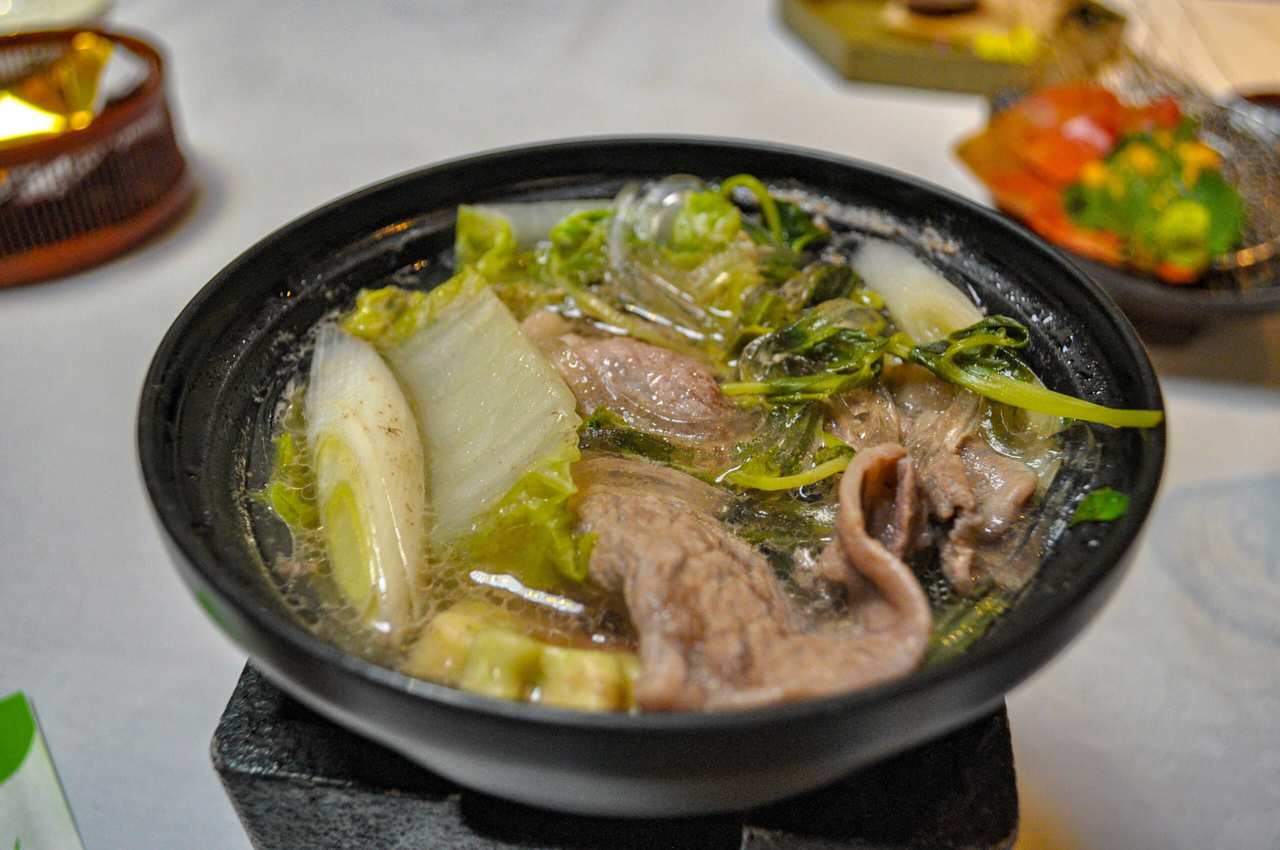
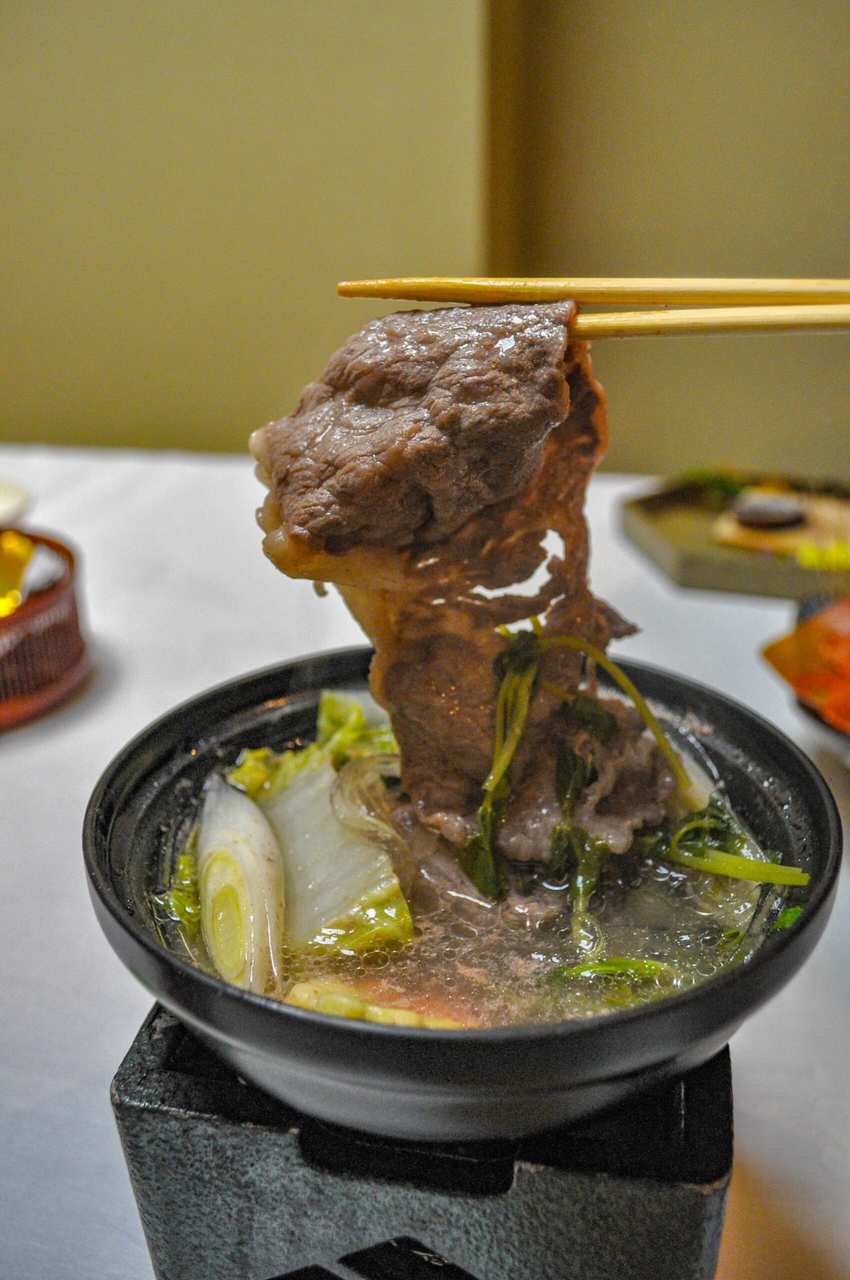
To digest such a feast, I visited the hotel after dinner. The ryokan Ibusuki Hakusuikan is a famous place: there is the Satsuma Denshokan Museum, and also shops, gardens, karaoke, restaurants, and even an outdoor swimming pool.
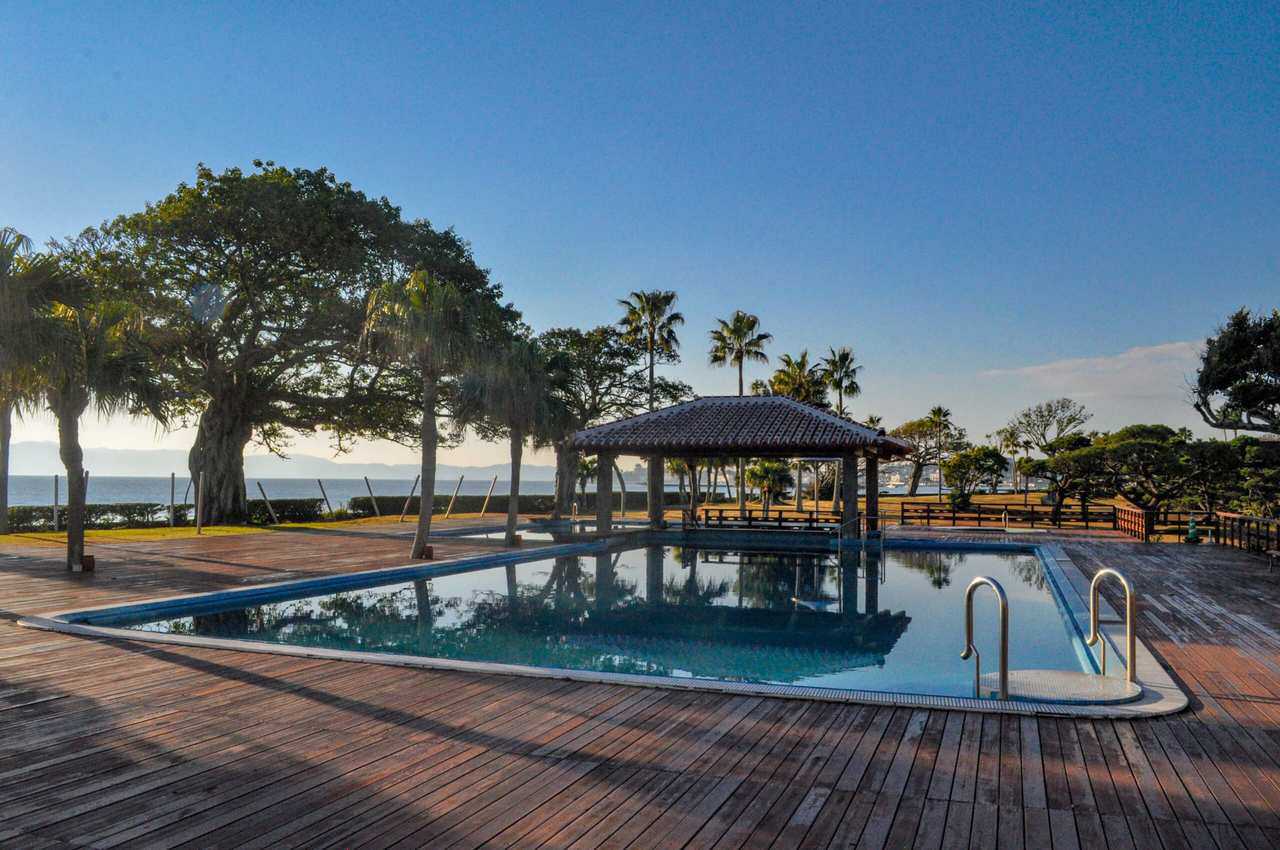
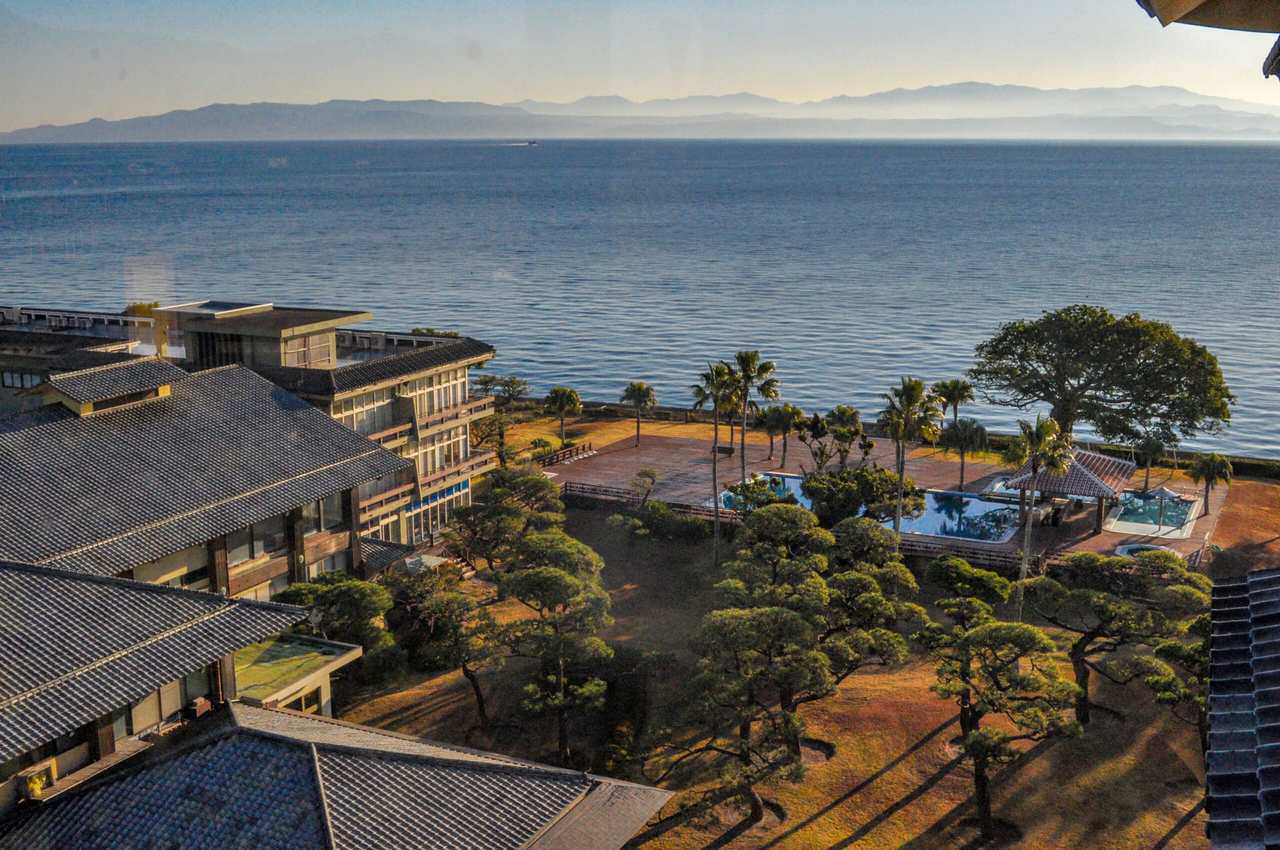
There is also a shochu bar, offering a wide variety of choices. This sweet potato liquor, deliciously flavored, is a specialty of Kyushu. The Shochu Dojo allows you to taste different shochu, and there is a store where you can buy a bottle, a perfect souvenir to bring back from Ibusuki for your family and friends.
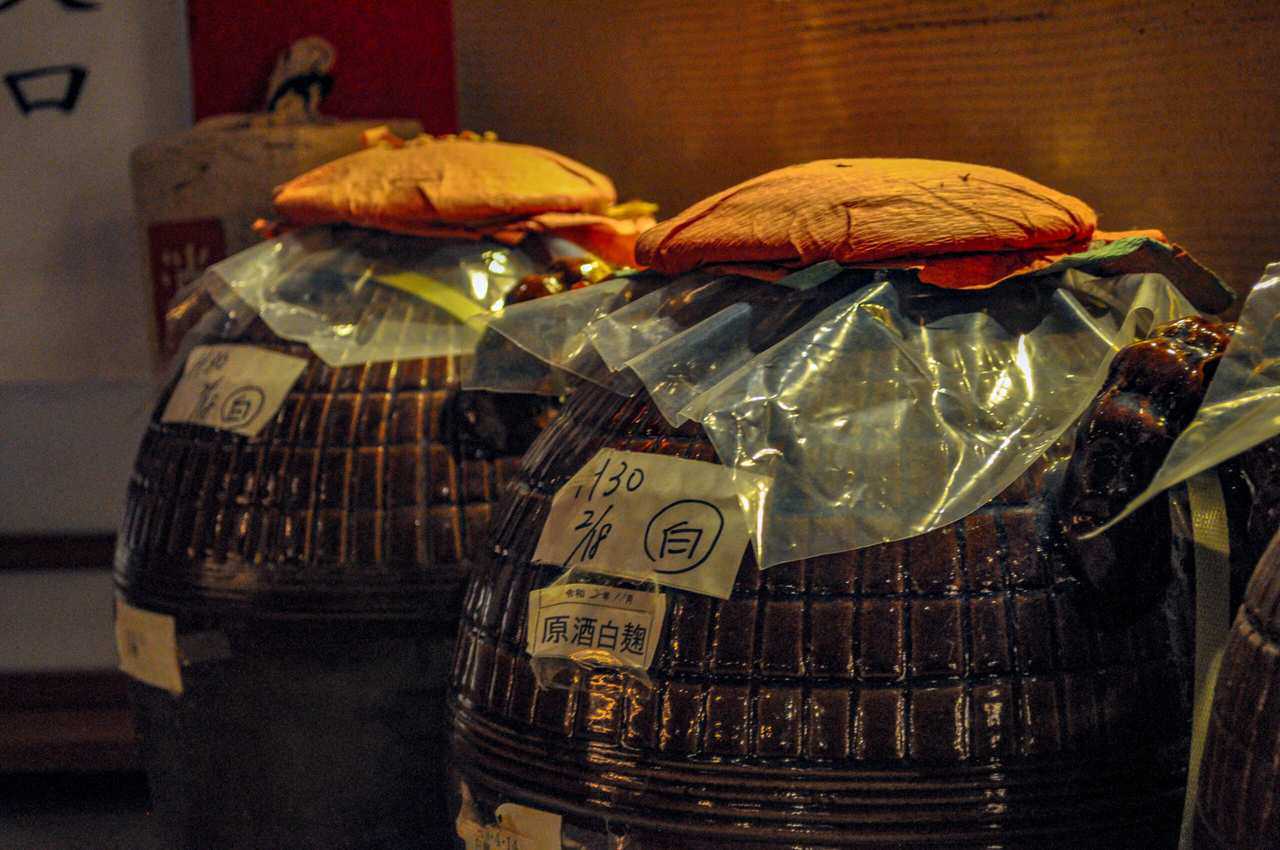
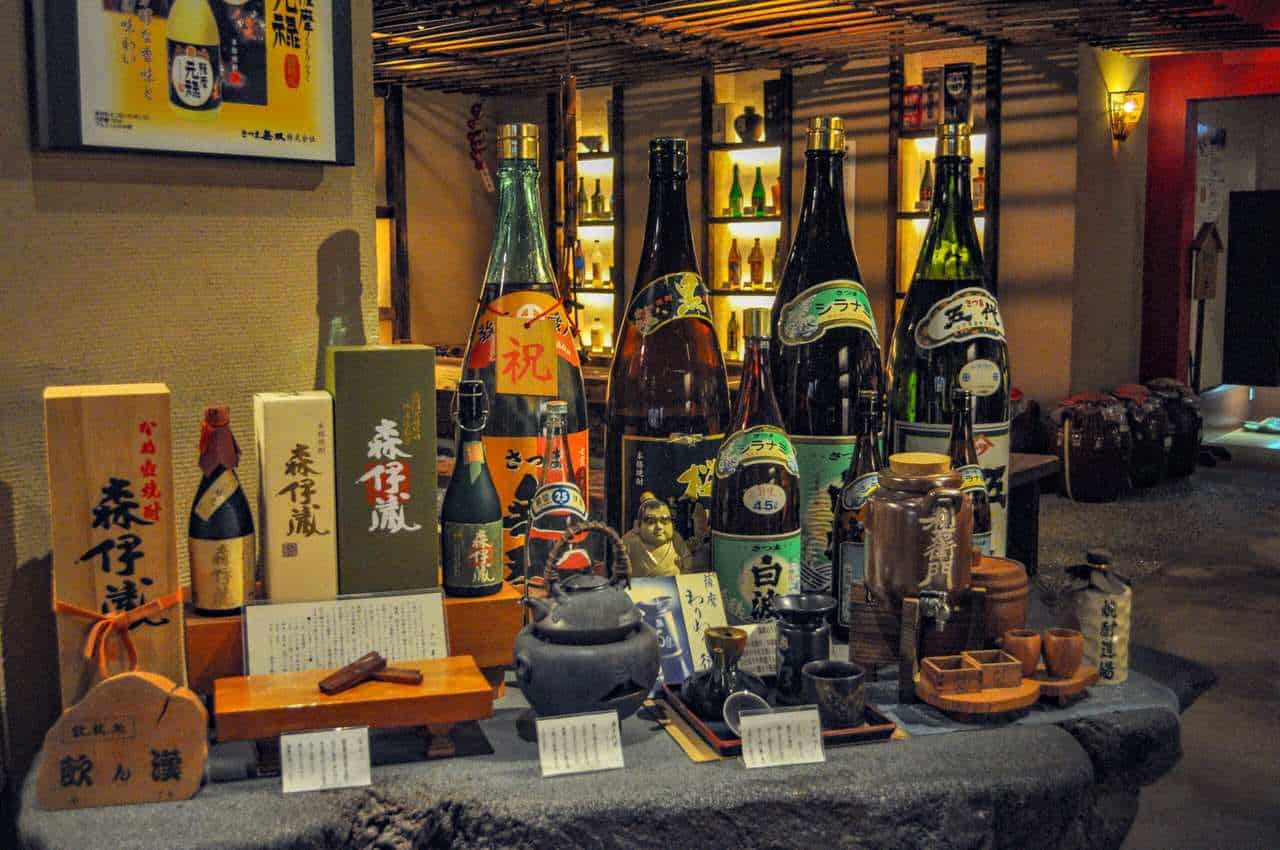
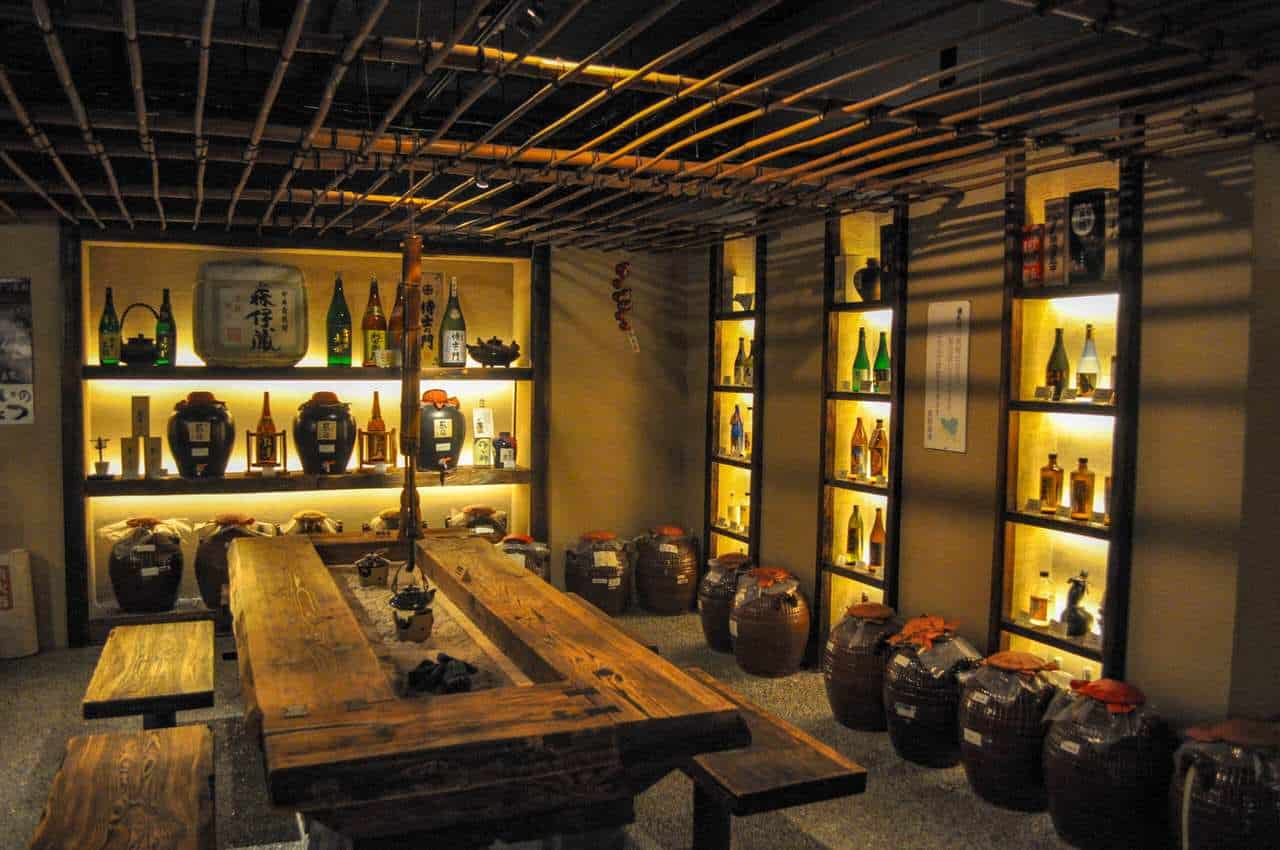
As for my room, it gave me the impression of living in a real palace. It mixed western comfort with the charm of traditional Japanese rooms. Each room has a balcony with a breathtaking view of the sea. It was without a doubt the most beautiful ryokan I have stayed in Japan.
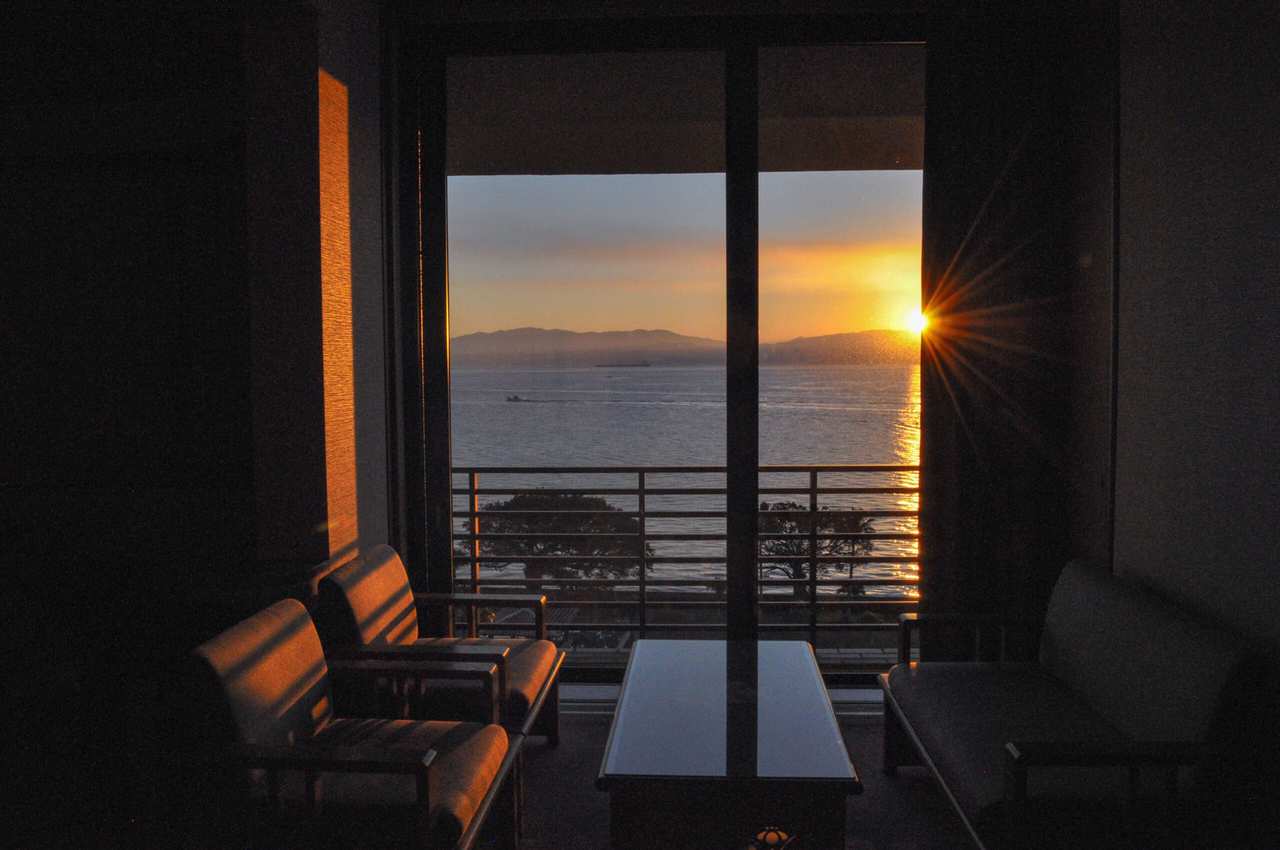
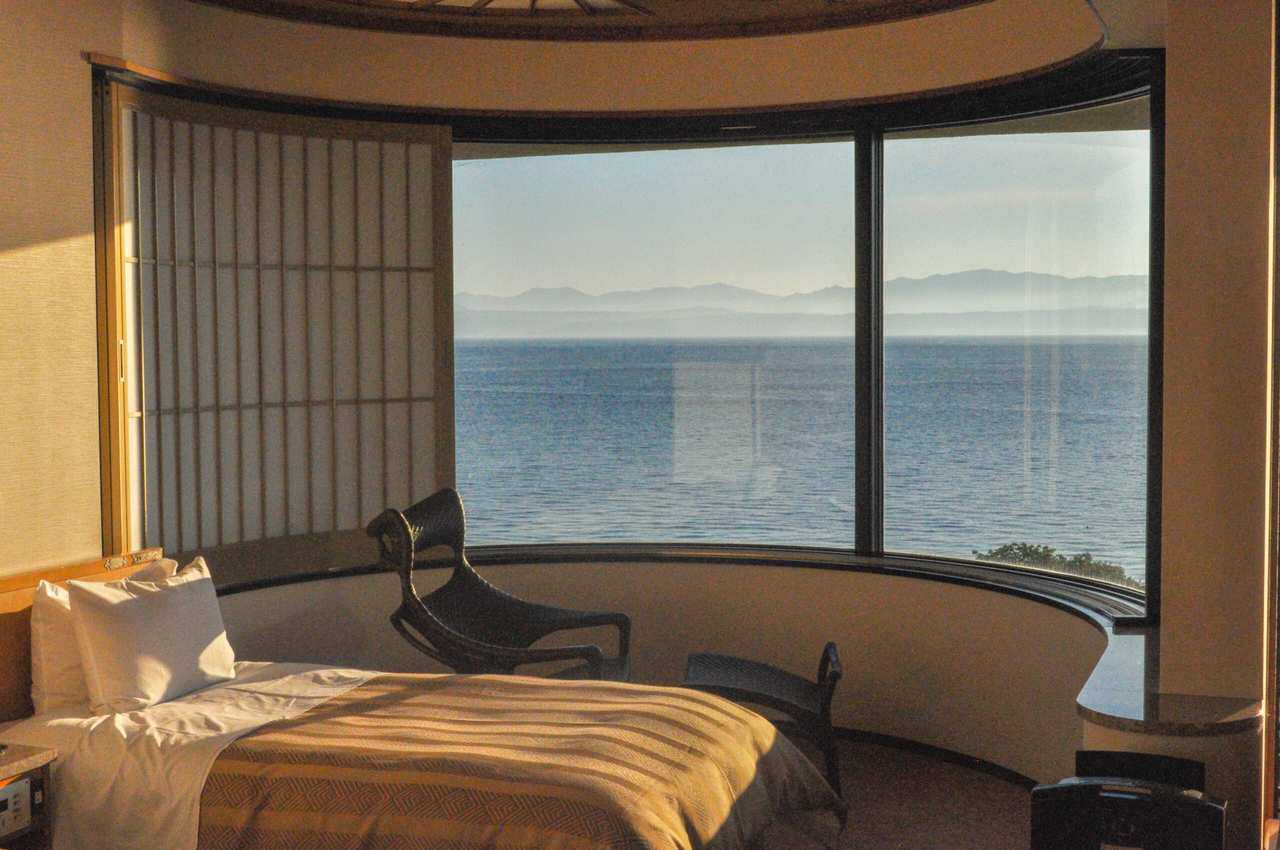
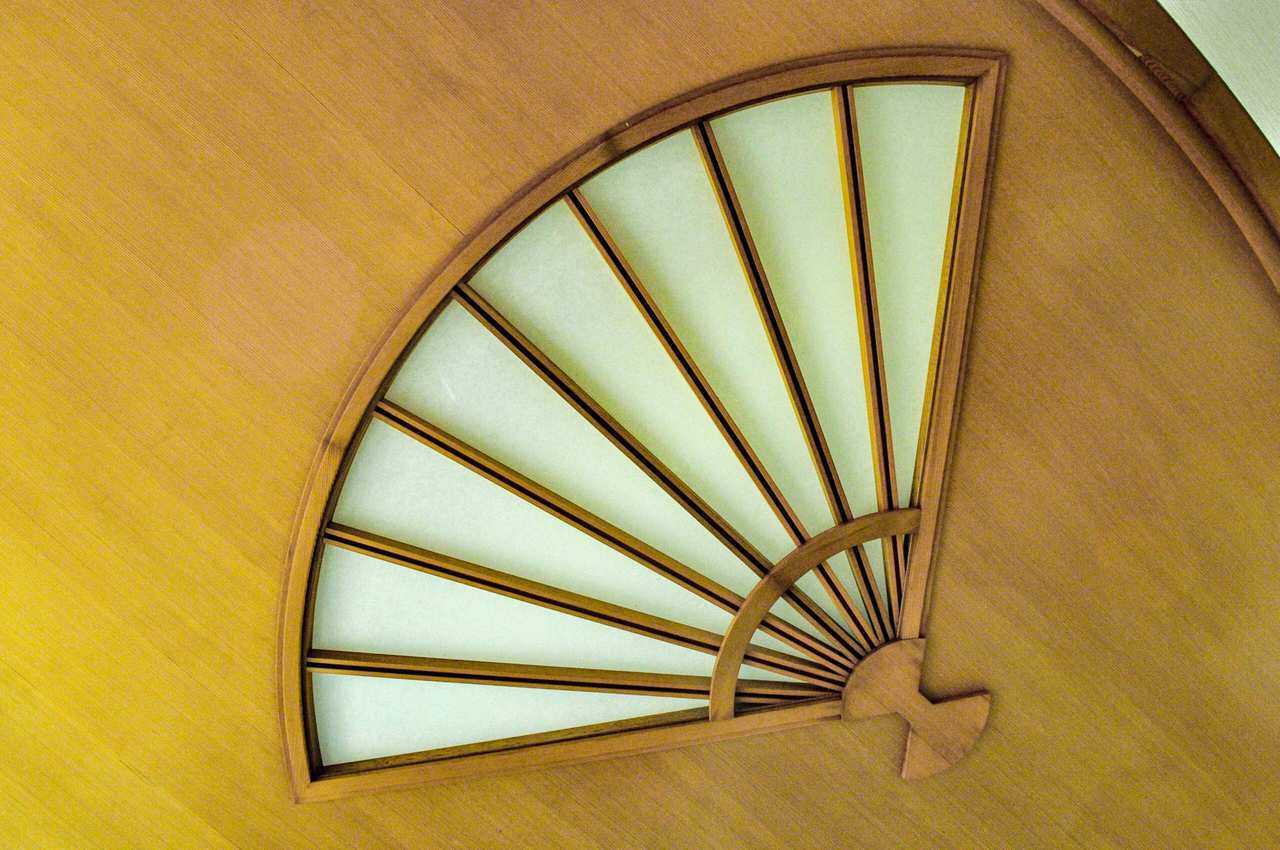
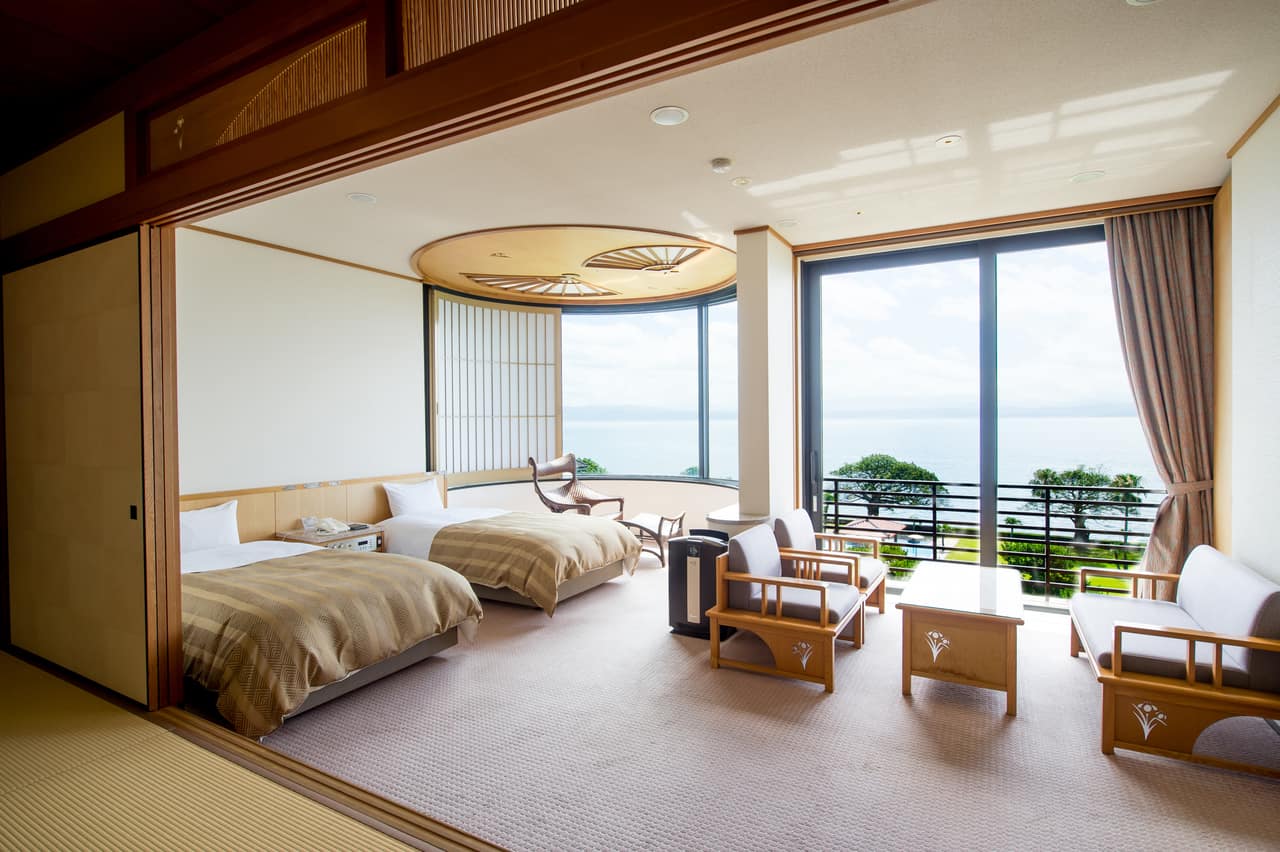
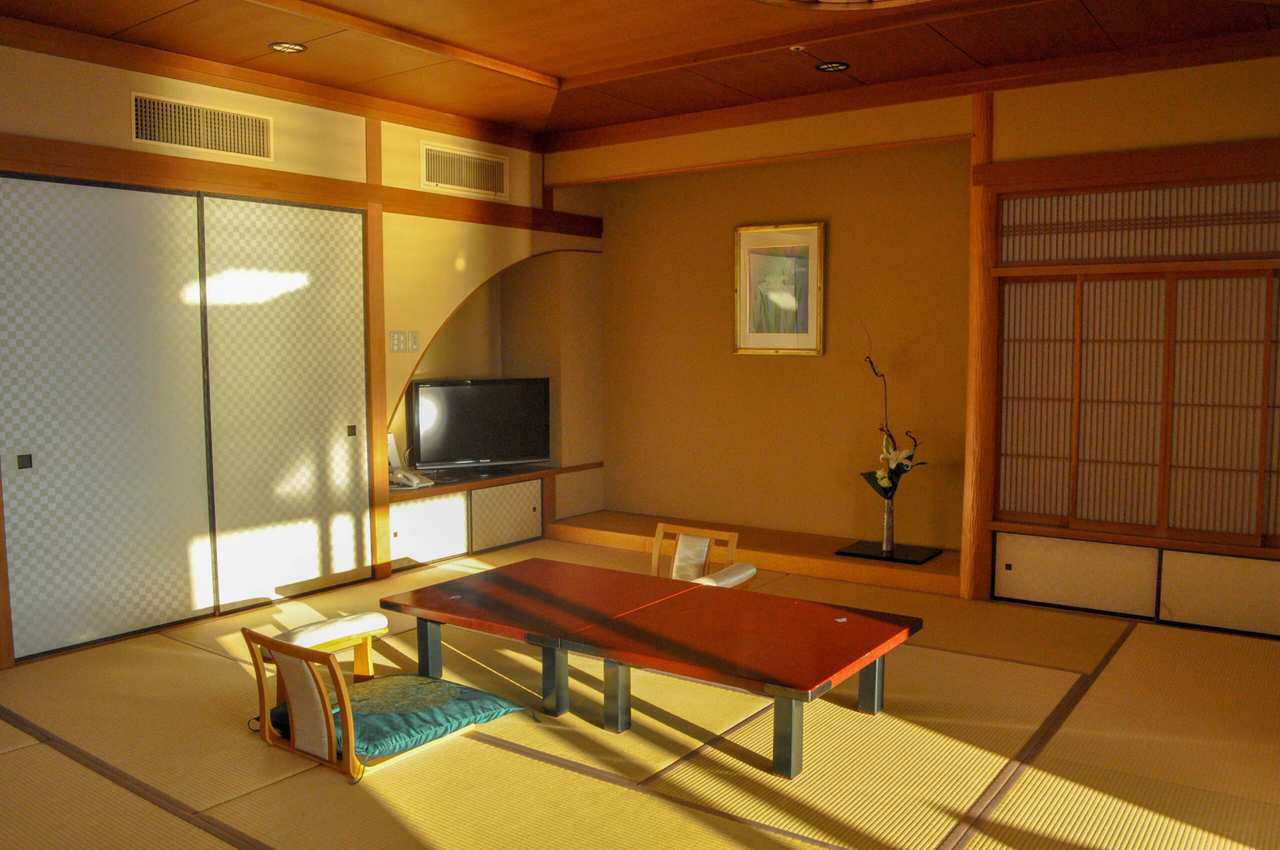
Katsuo-bushi, Ibusuki’s pink treasure
Now, let’s go and discover another local specialty of Ibusuki: dried bonito (katsuobushi 鰹節). You might not recognize this ingredient in your meals; however, one of the staples of Japanese cuisine is dashi broth, which is made of dried bonito.
Let’s go to Yamakawa, a fishing and trading port in Kinko Bay that has been thriving since the Meiji era (1868-1912). The secret of dried bonito production is a tradition inherited from generation to generation. Ibusuki is famous for its production of Honkare Honbushi (本枯本節), a local product that accounts for about 80% of the national market.
Arriving at Yamakawa port, we met Hamamura-san who opened his doors to us at Daimaru Katsuobushi limited company (大丸鰹節), in operation since 1946.
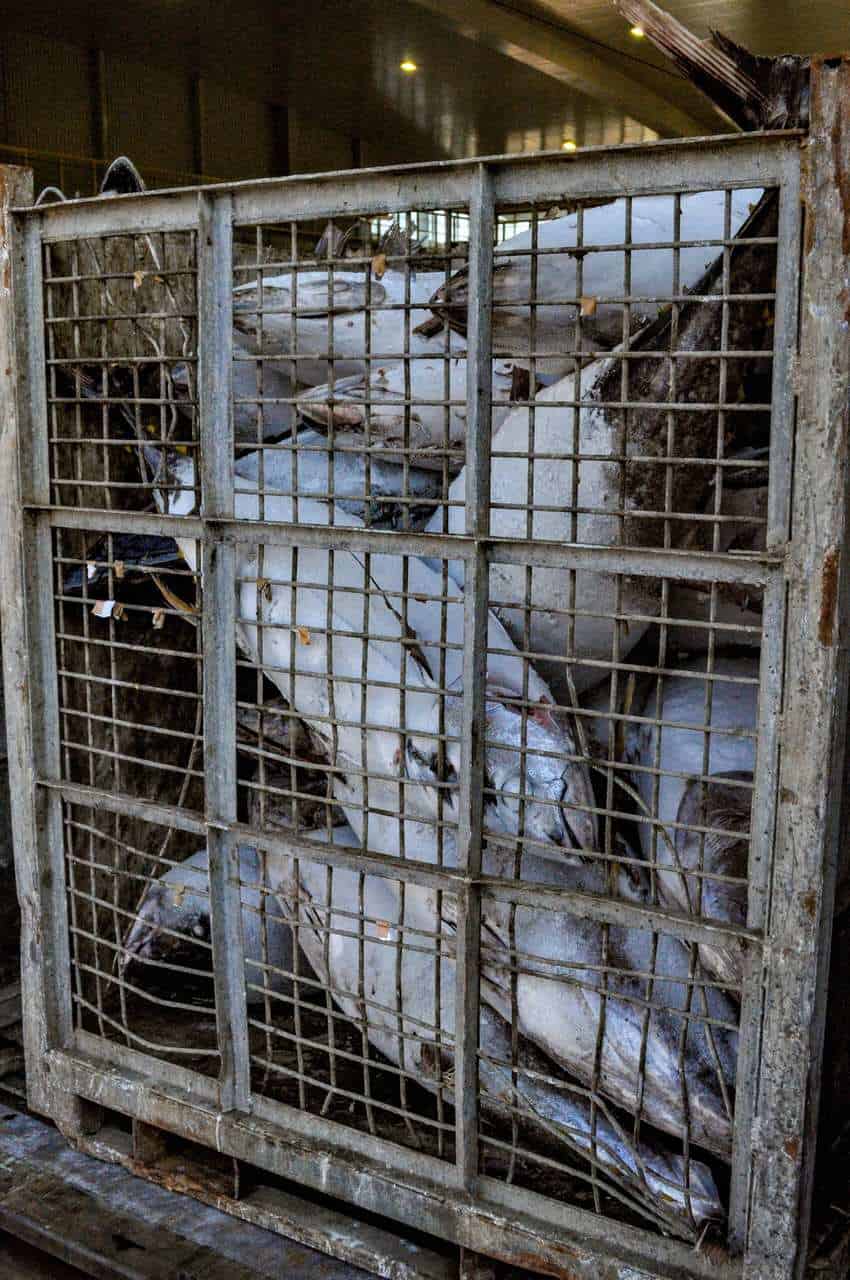
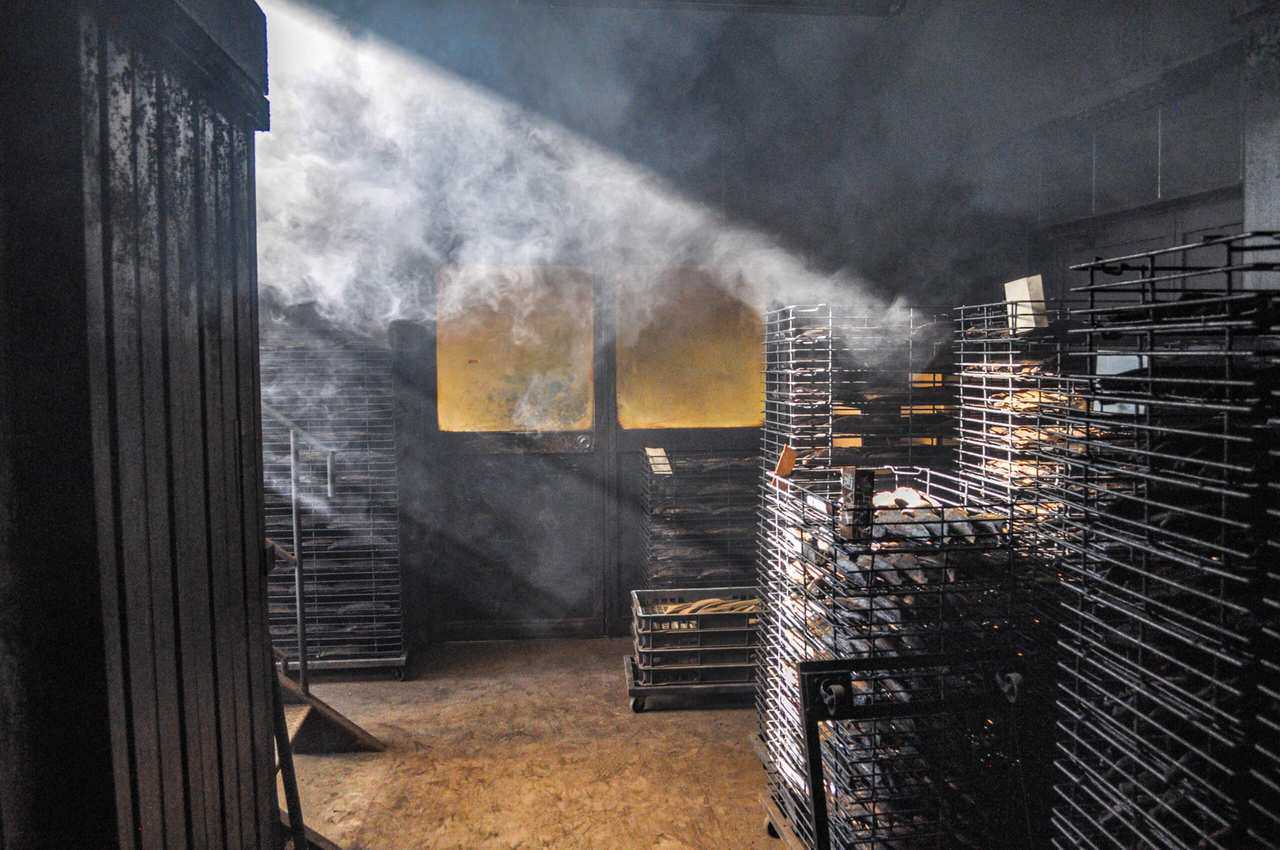
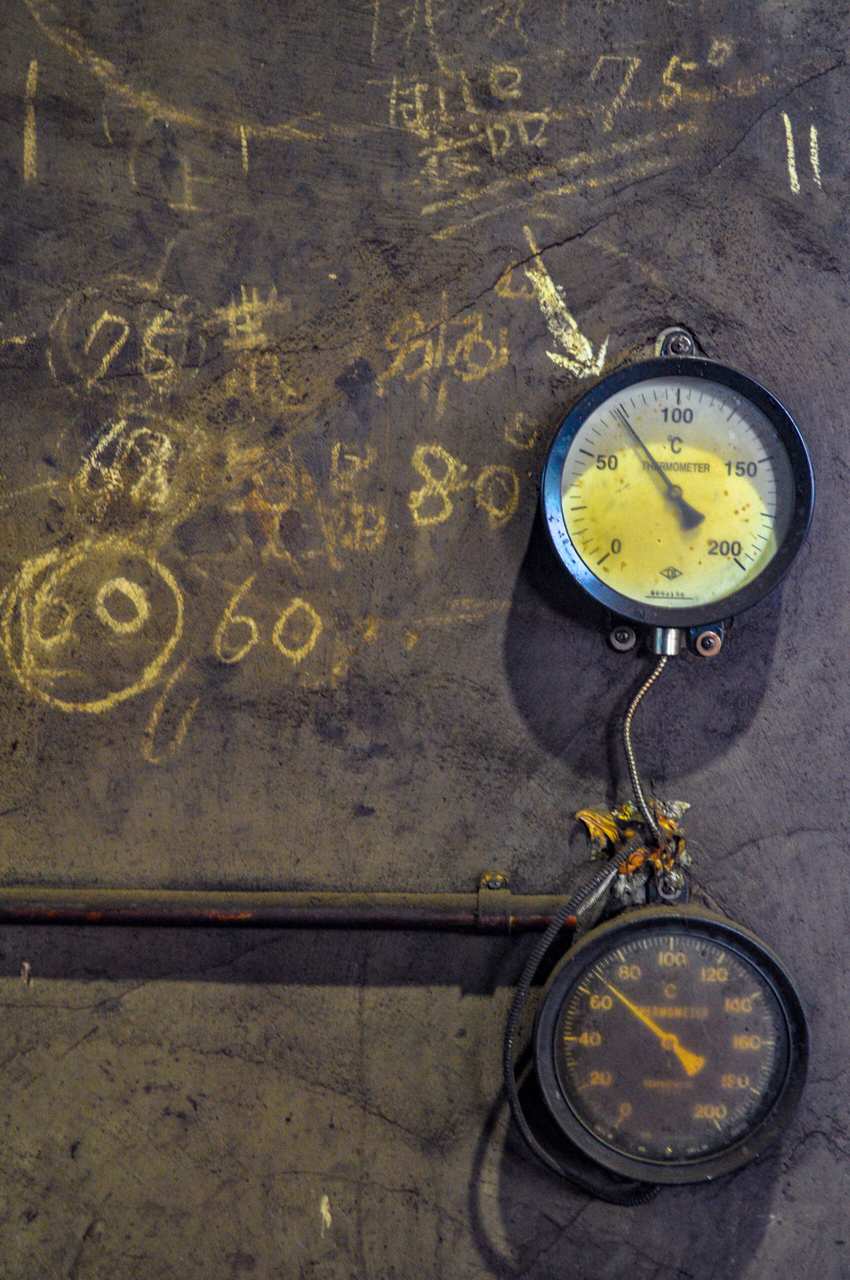
With his guidance, we discovered the manufacturing process of the dried bonito. This process takes 4 to 6 months and follows several steps according to tradition.
- Namagiri cutting (生切り). After cutting the head of the bonito and gutting it, the fish is cut into 4 equal parts. The leftovers will be used to make animal feed.
- Shajuku cooking (煮熟). The fish is boiled for 2 hours 15 minutes to 2 hours 40 minutes.
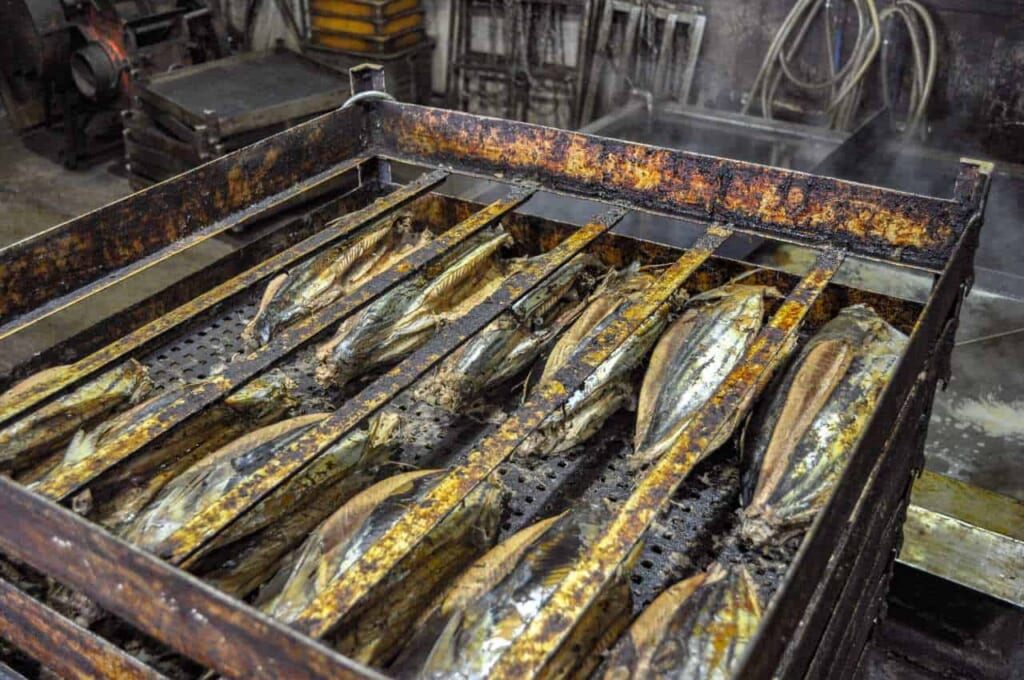
- Honenuki boning (骨抜き). With a quick movement, we remove the backbone and the bones.
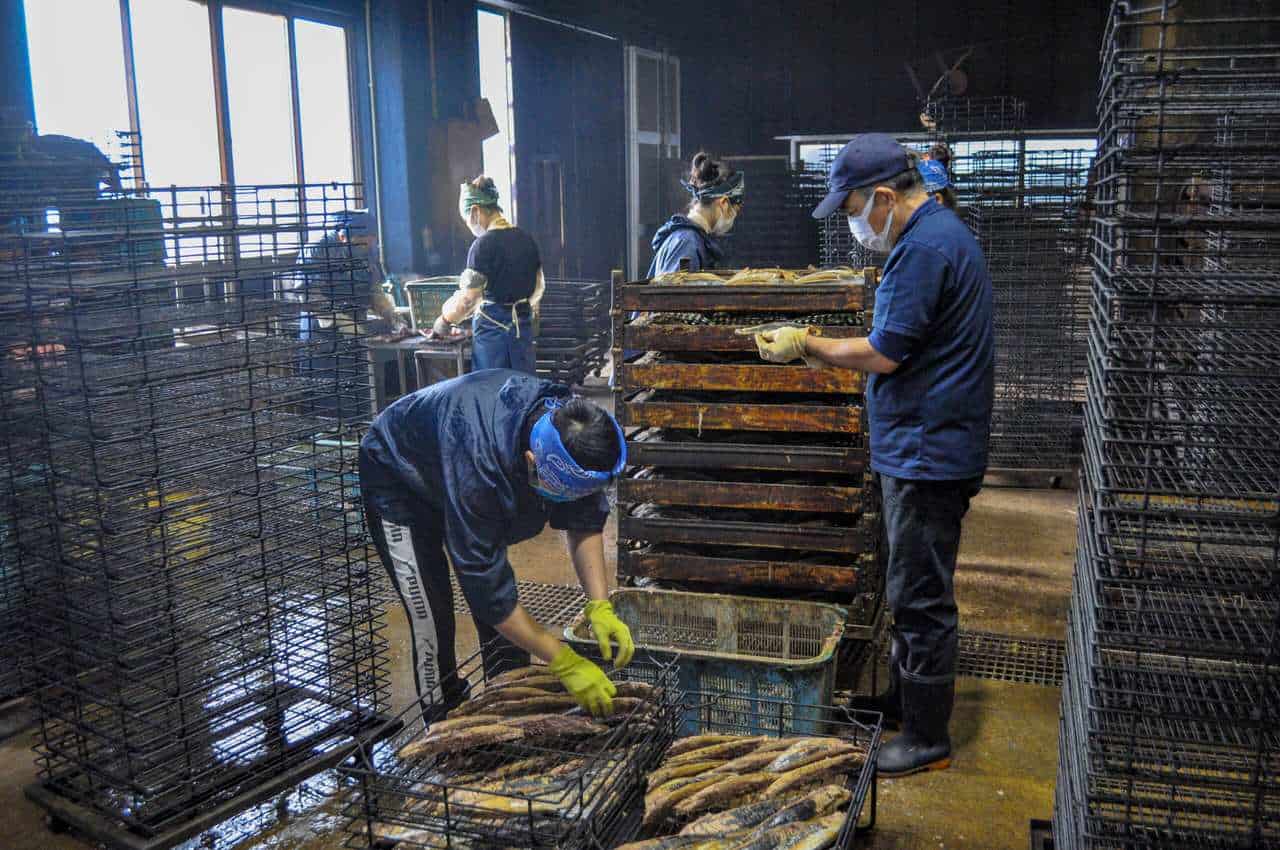
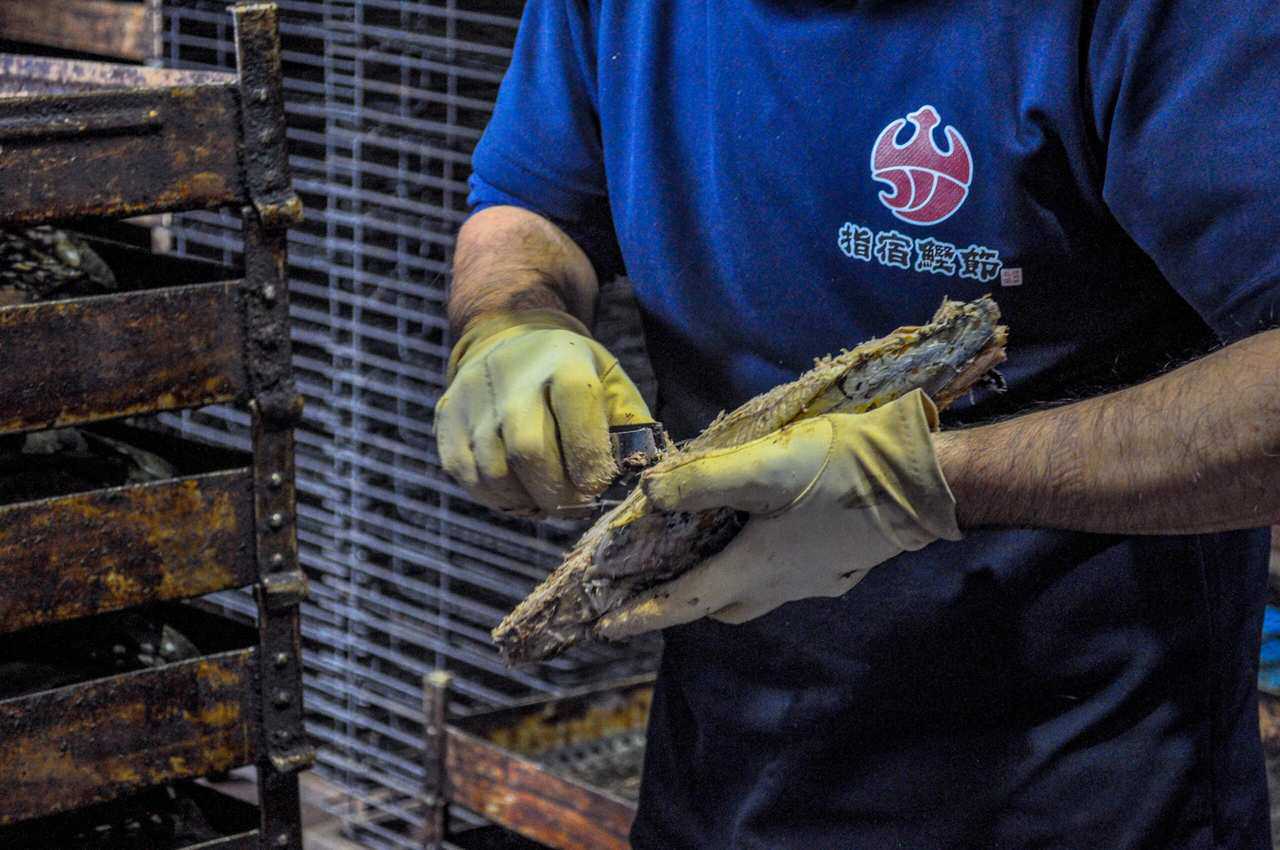
- Baikan smoking (焙乾). The meat is smoked and dried in a large drying room. This is a stage that lasts between 3 to 4 weeks depending on the size of the bonito.
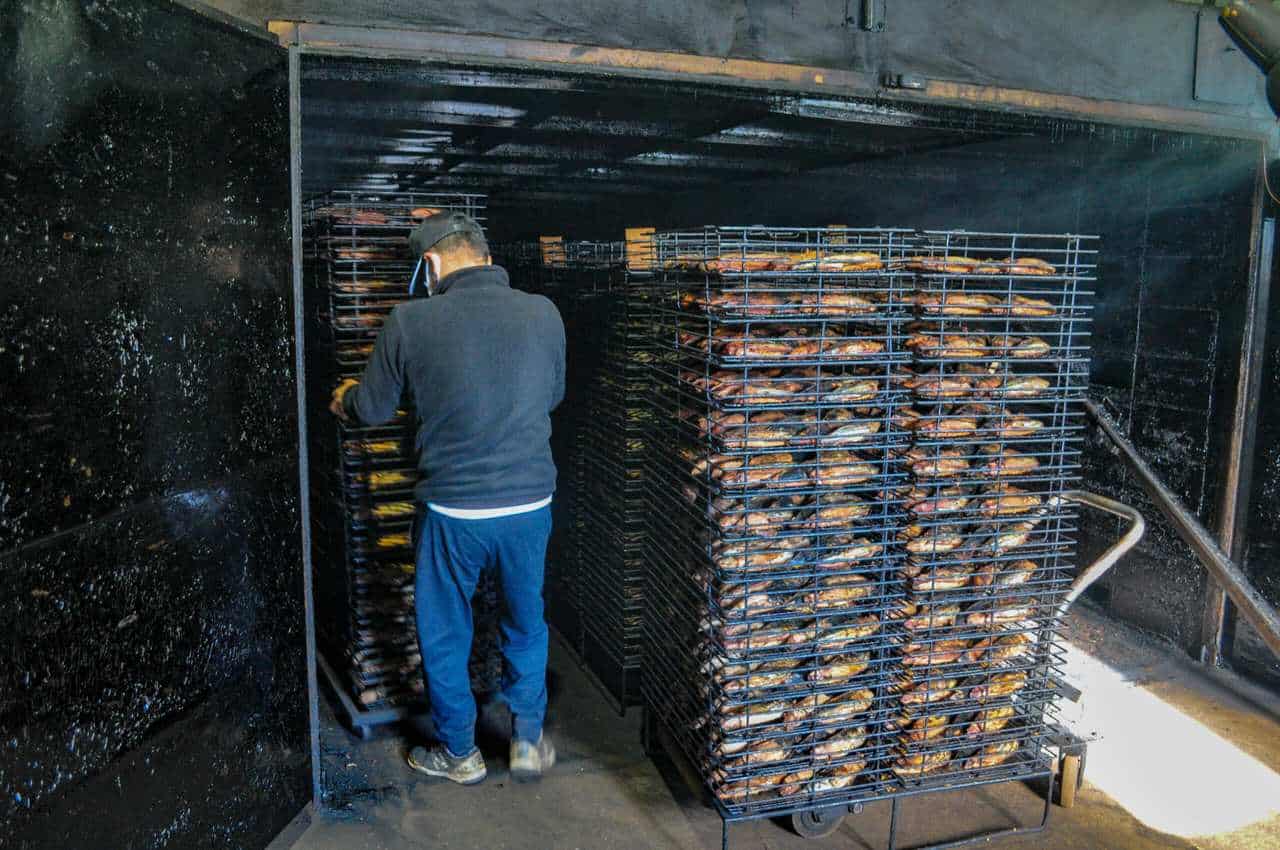
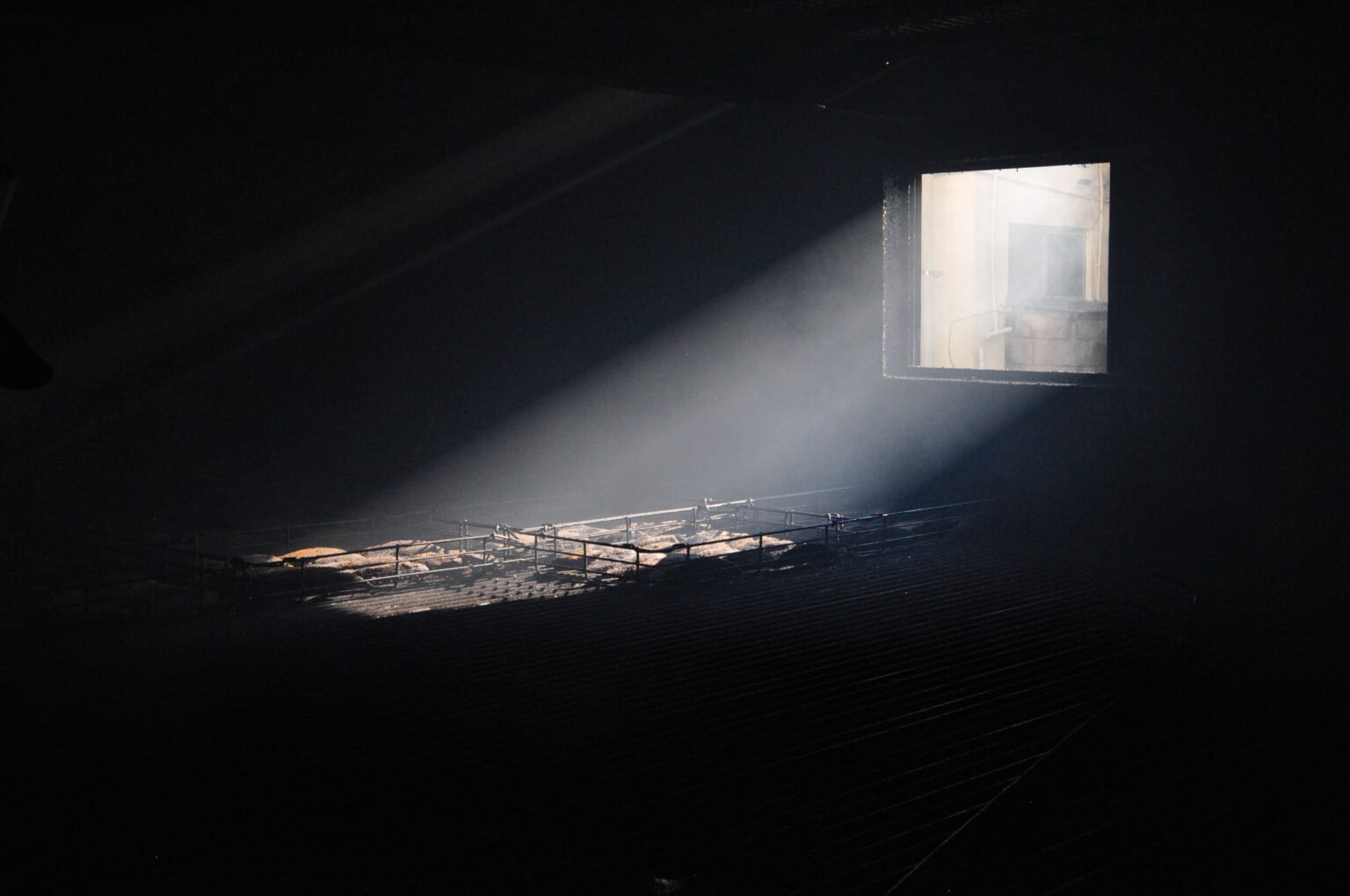
- The hyomen kezuri polishing (表面削り). With the smoking step, marks of soot have covered the flesh of the fish. Then, we polish the surface of the fish with a scraper made with sanding paper.
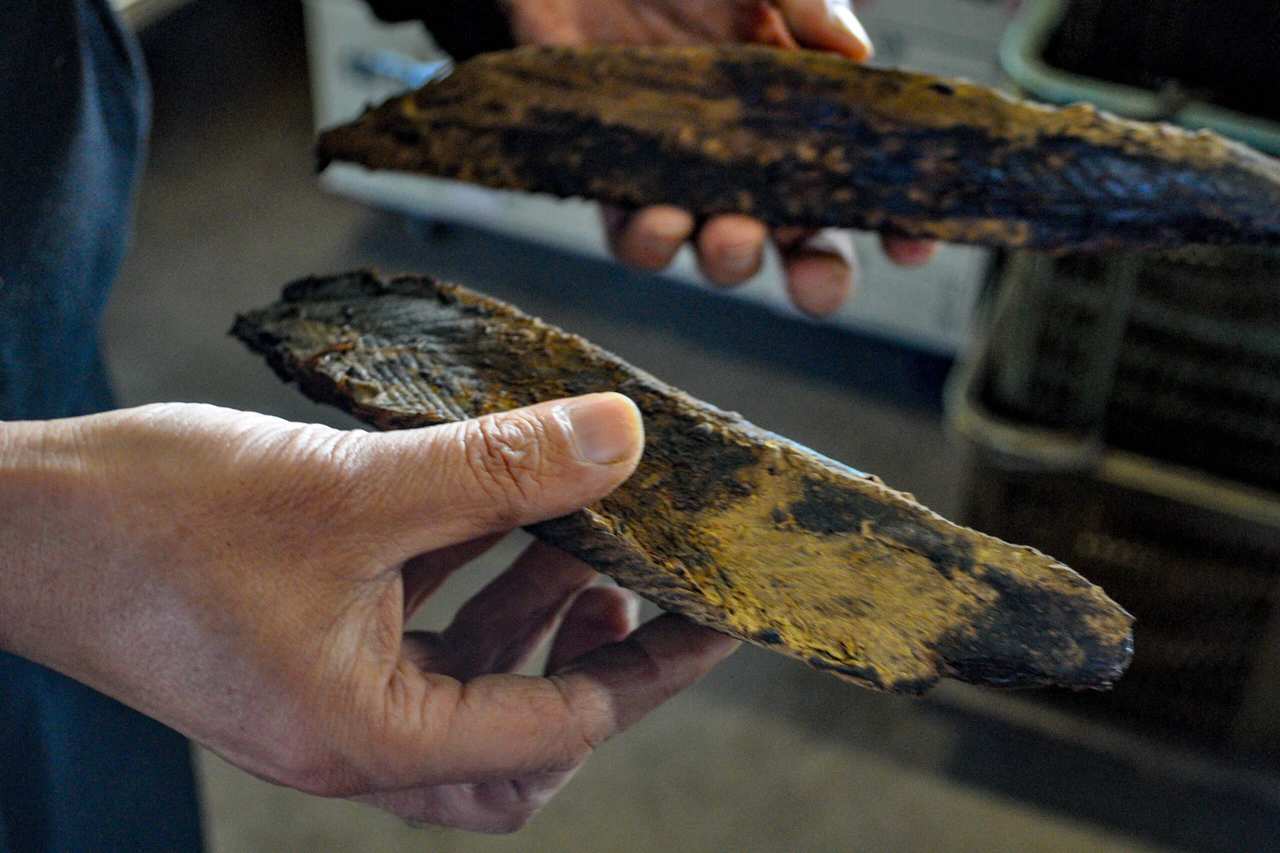
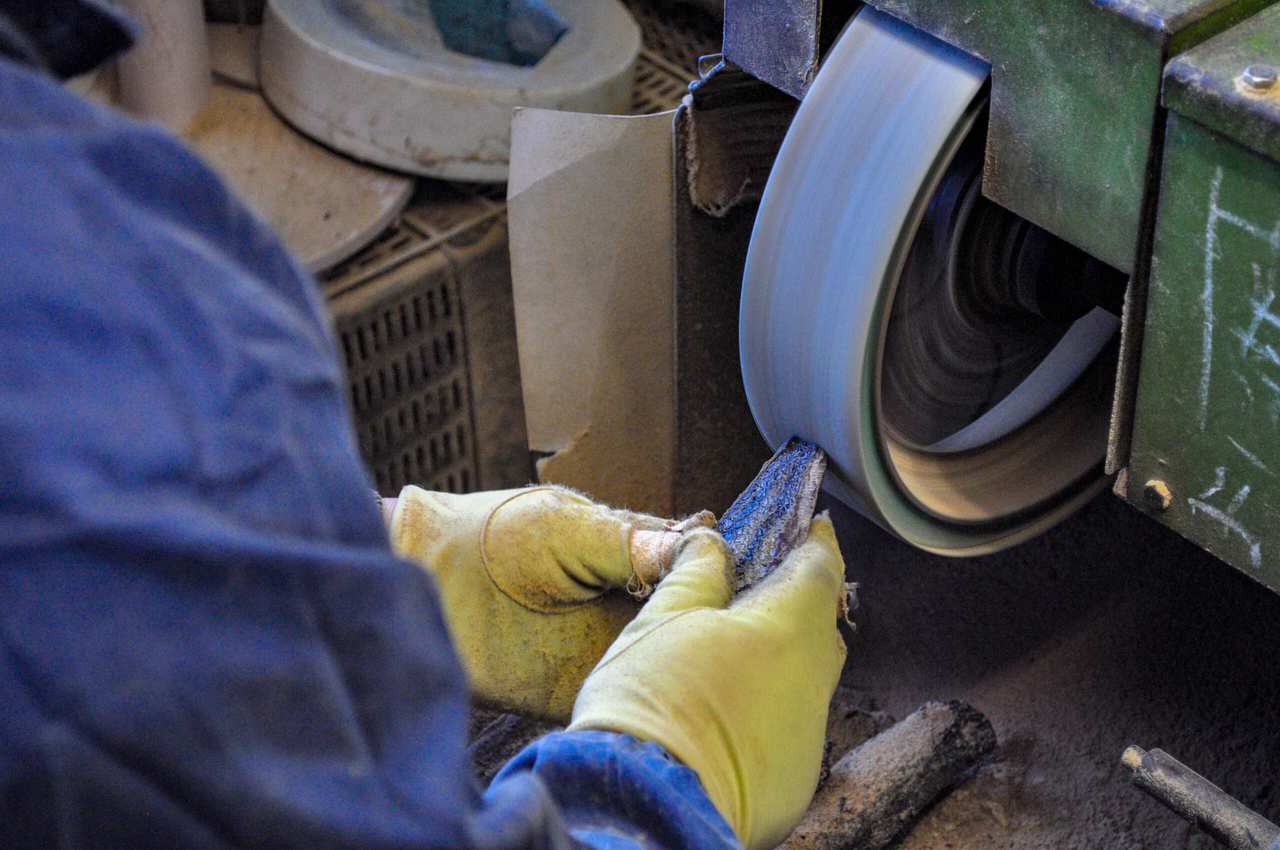
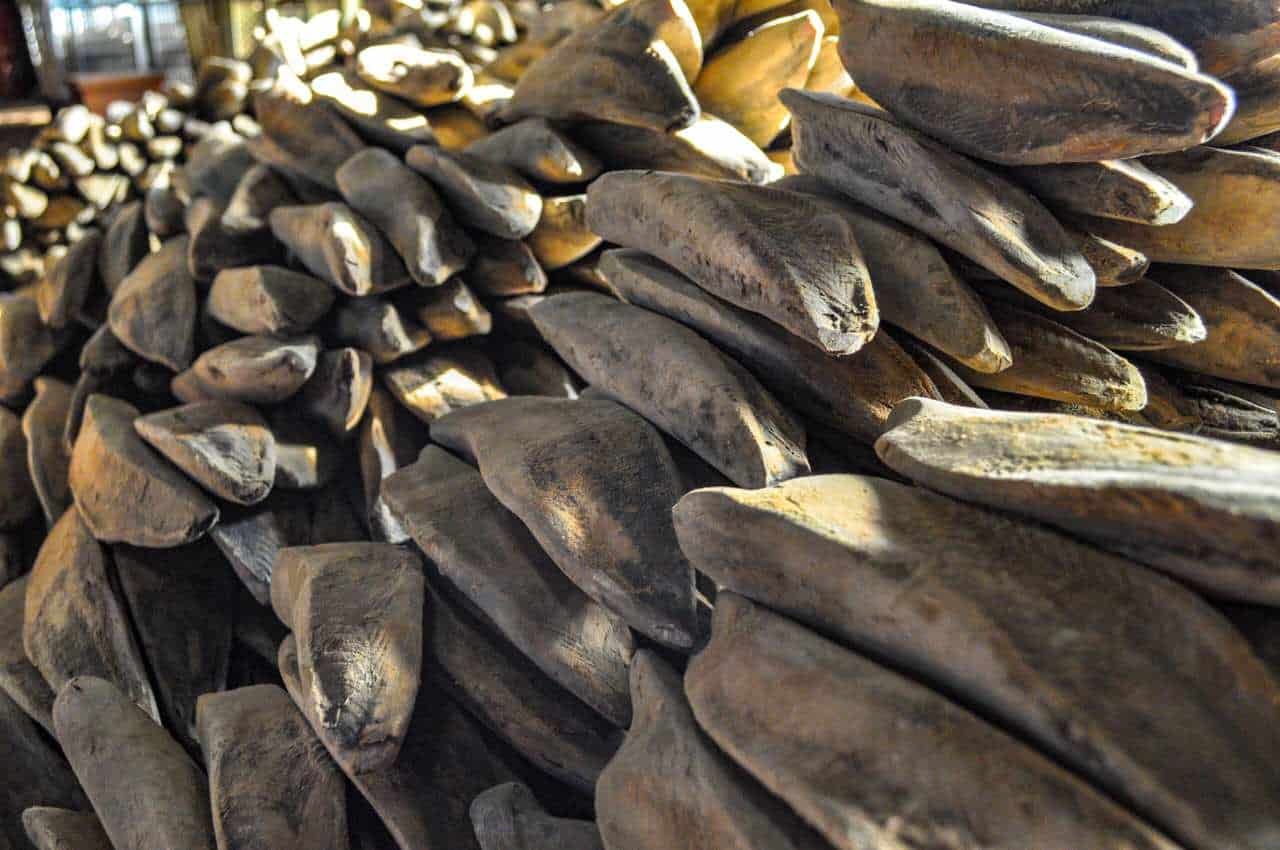
- The addition of a fungus (カビ付け). Bonito are placed in a specific room where they are sprinkled with the germs of a microscopic fungus that, as it grows, helps to dry out their flesh.
- Sun drying tenpi boshi (天日干し). After about a month, the growth of the fungus is stopped by placing the fish in the sun. The fish then goes back to the previous room to let the fungus grow. A round trip repeated between three and four times.
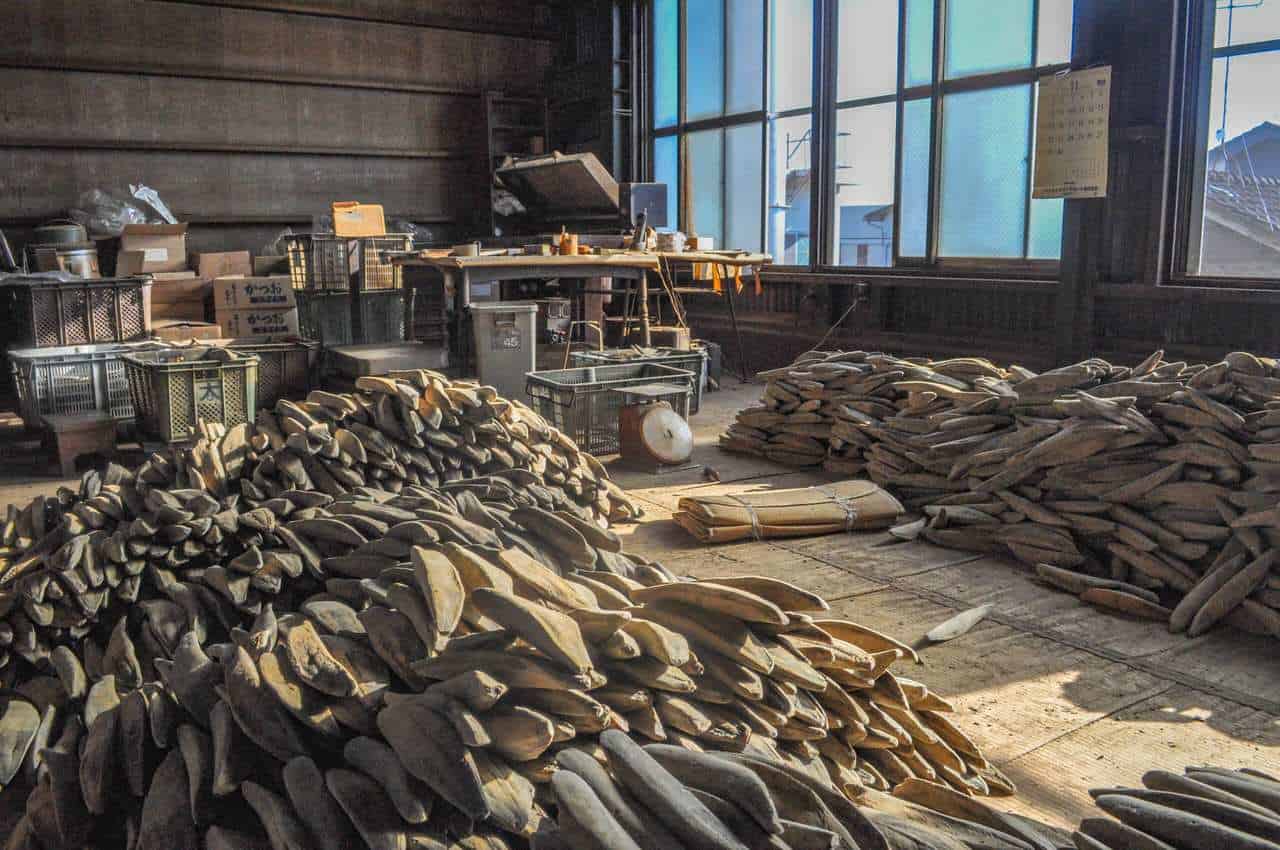
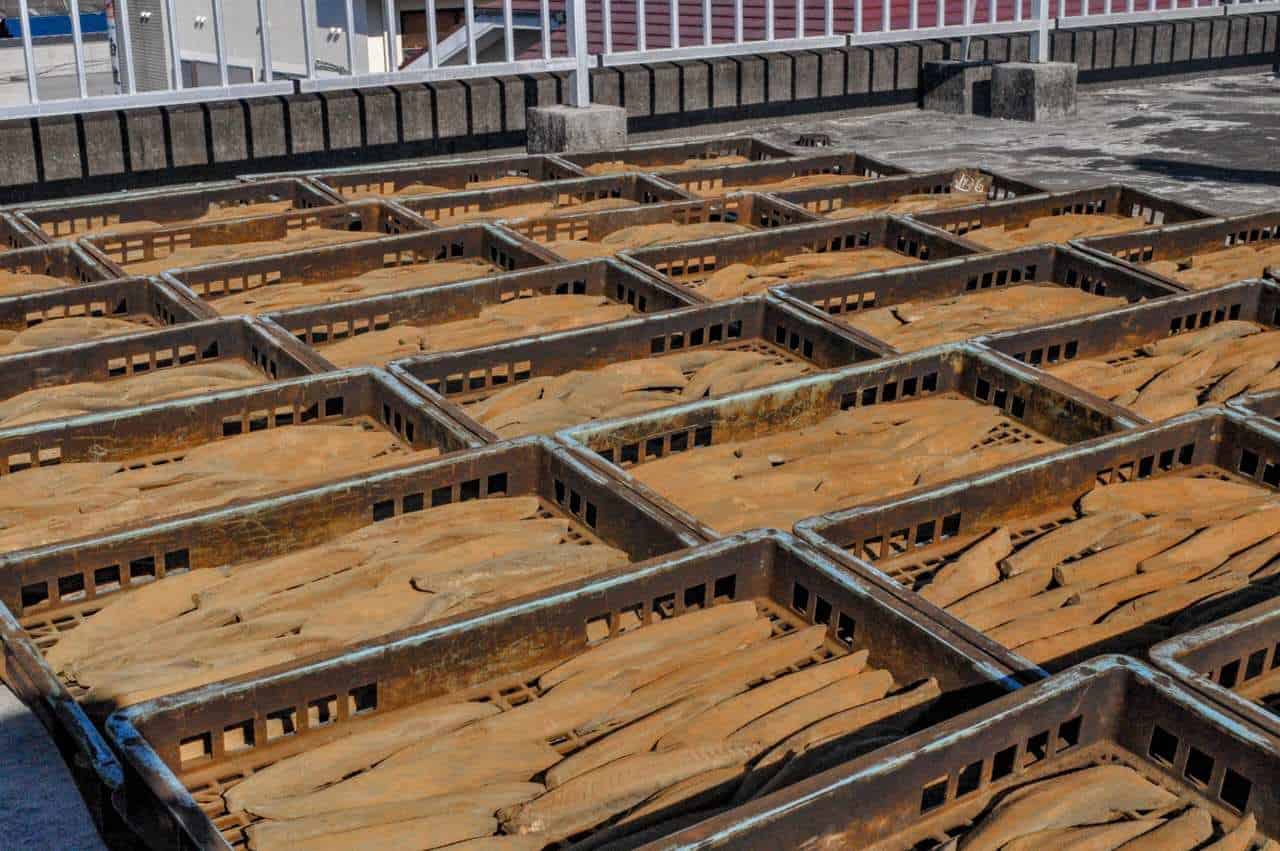
The process is finally completed. The only thing left to do is to turn the flesh into shavings. When done, the precious dried bonito can be used.
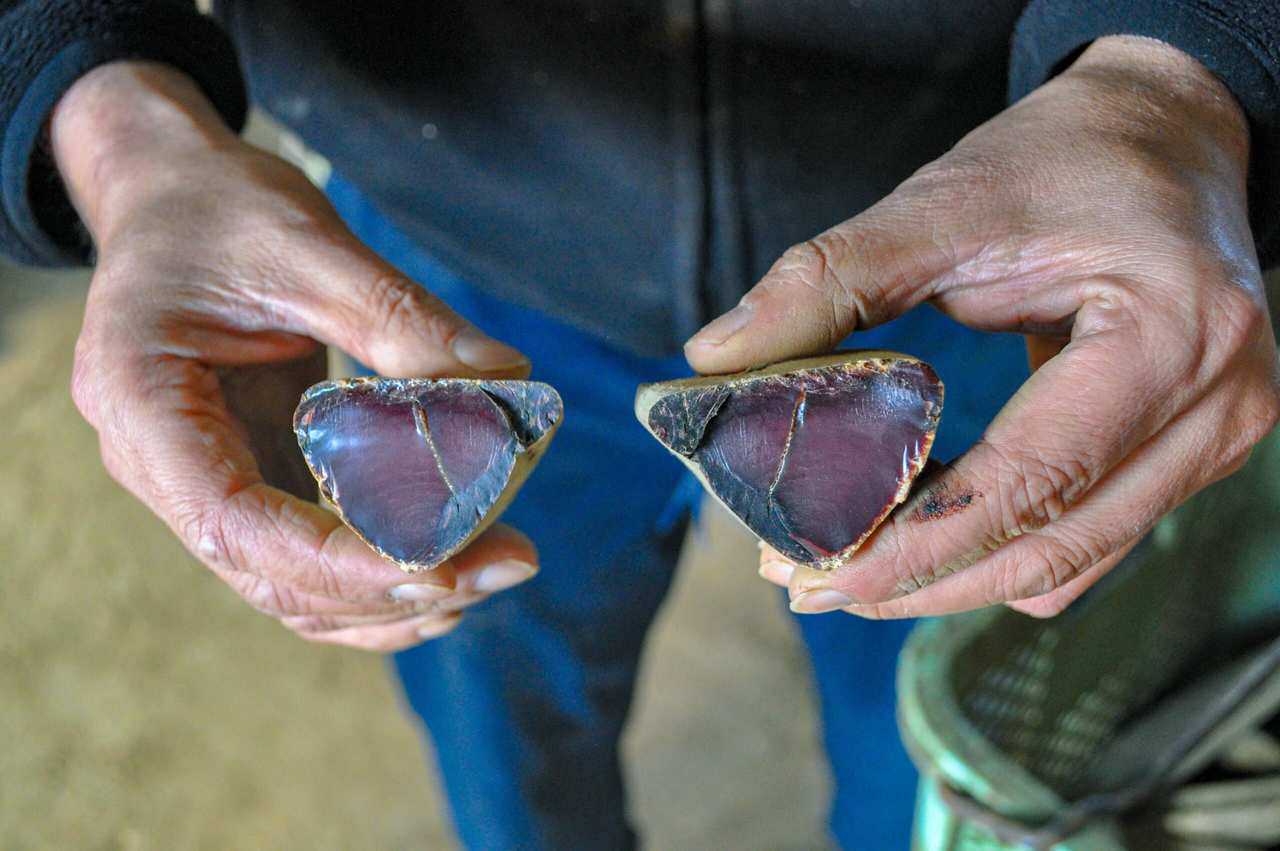
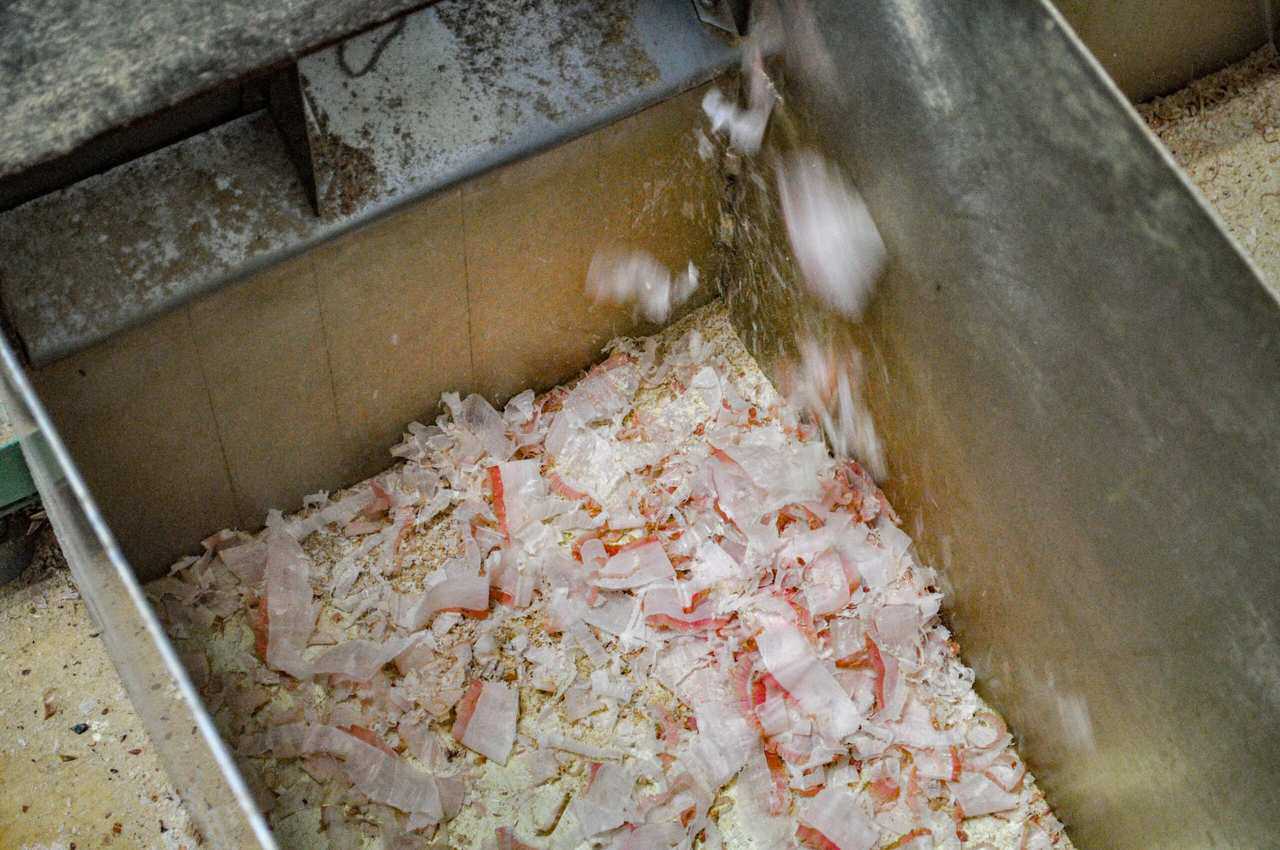
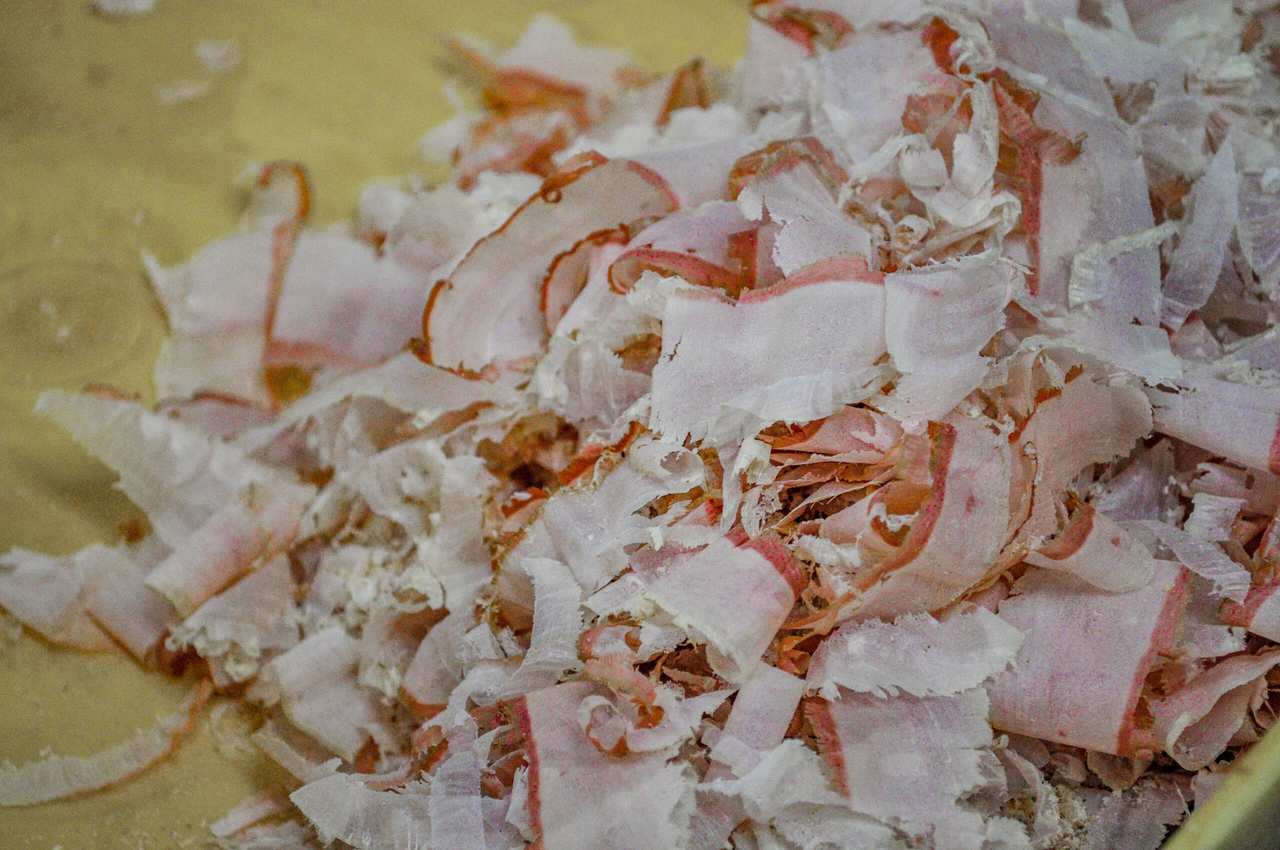
Near the factory, you can find the company’s small store where you can taste different types of dried bonito freshly made into shavings. Some have a more strong or sweet taste than others. You can buy dried bonito in individual bags, but also some local products such as bonito with miso or soy sauce, dashi broth, or spicy bonito sauce. There is something for everyone!
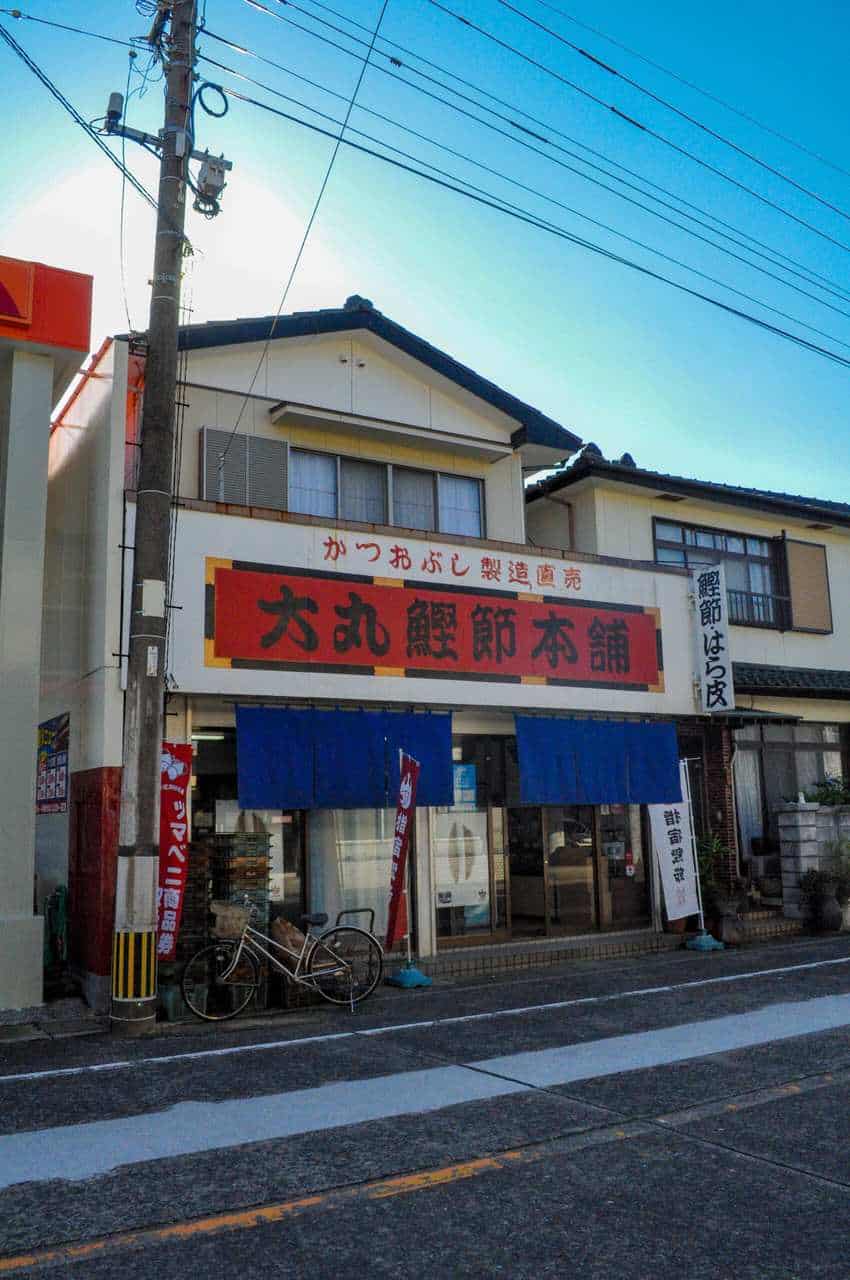
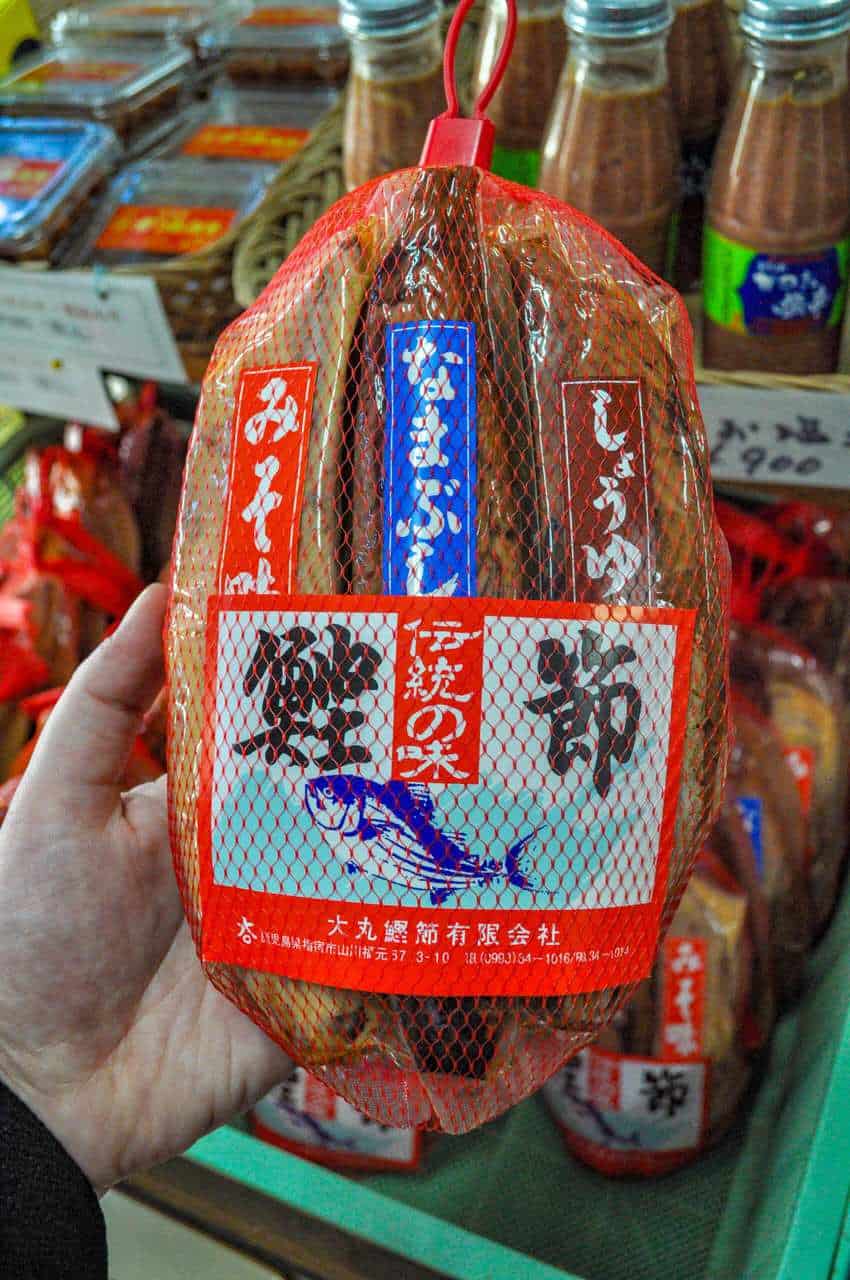
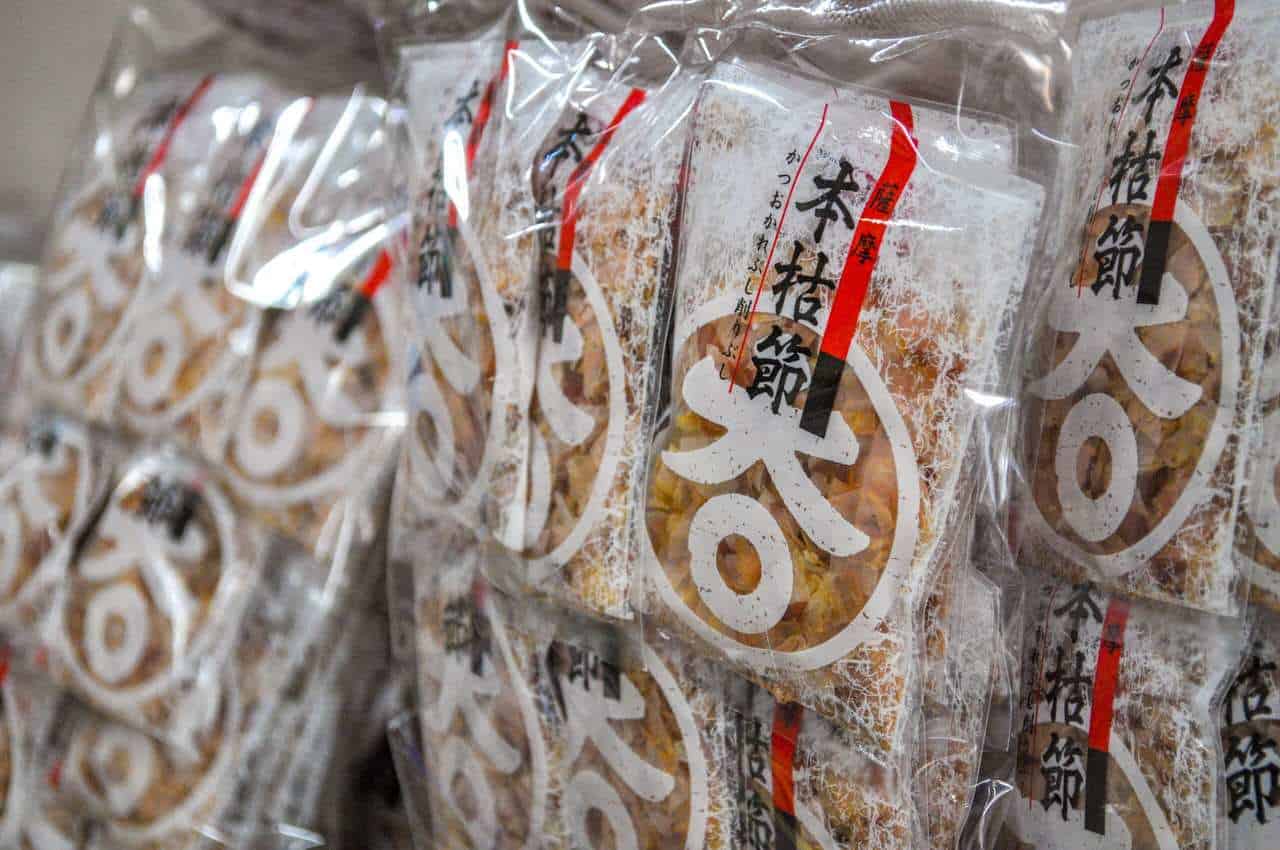
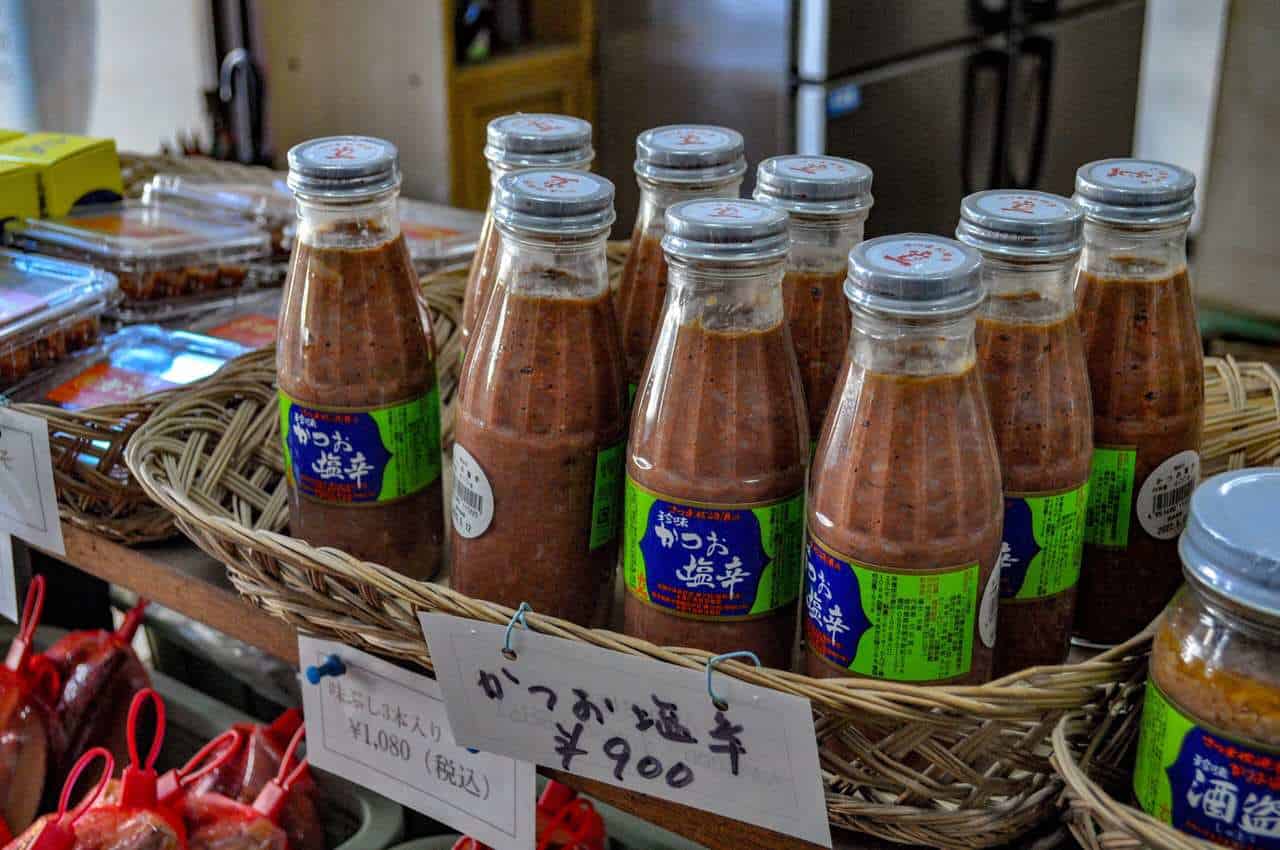
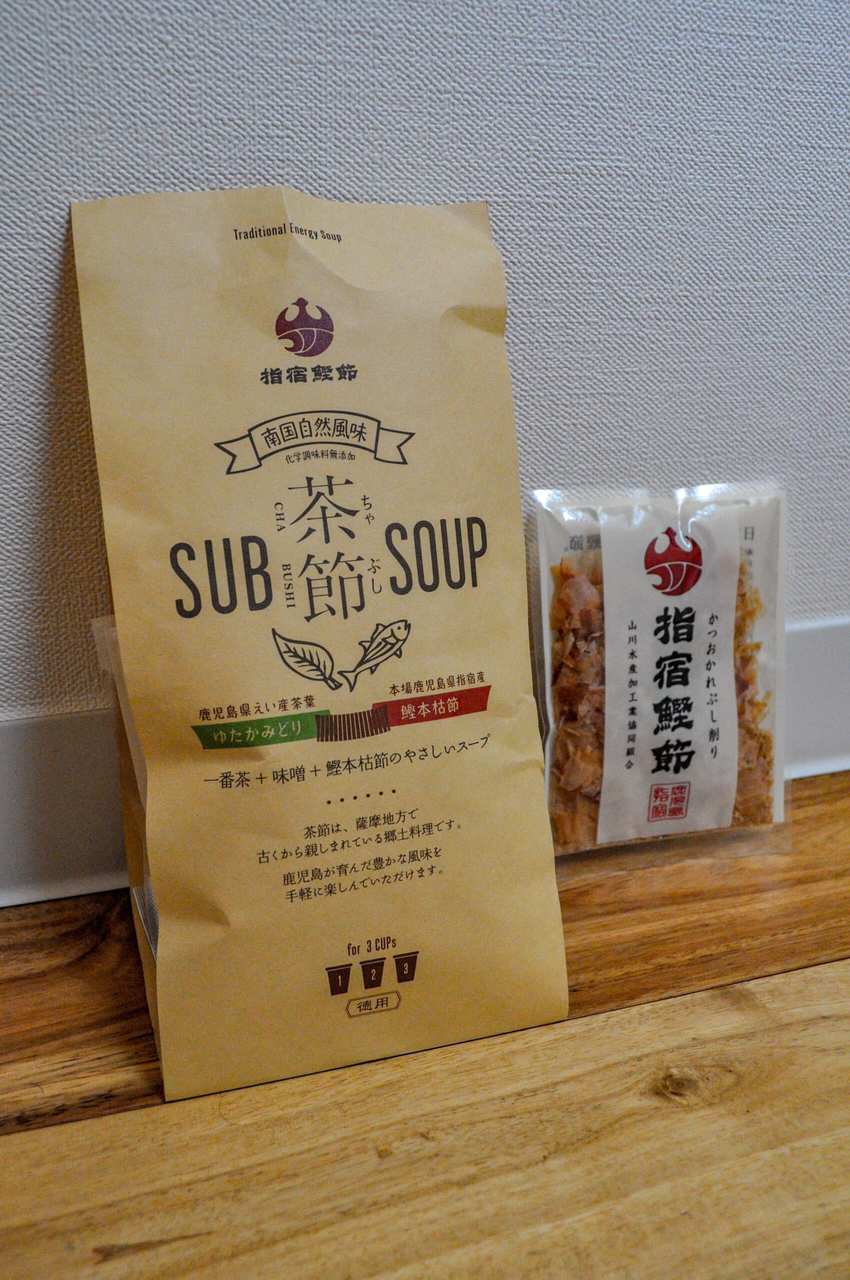
Floating noodle fishing
The next location will delight noodle lovers. Head to Tosenkyo Somen Nagashi (唐船峡そうめん流し), a nagashi-somen restaurant that is all the rage in Ibusuki.
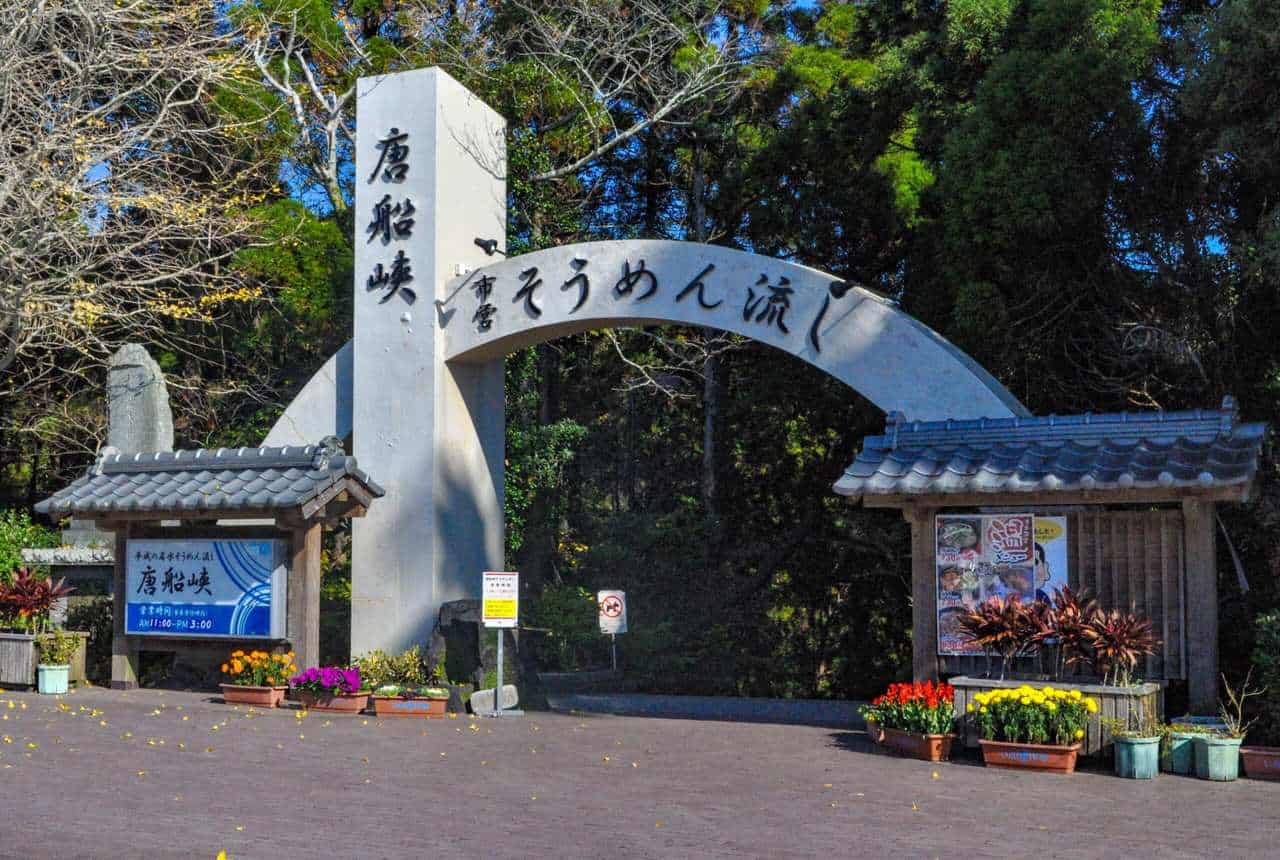
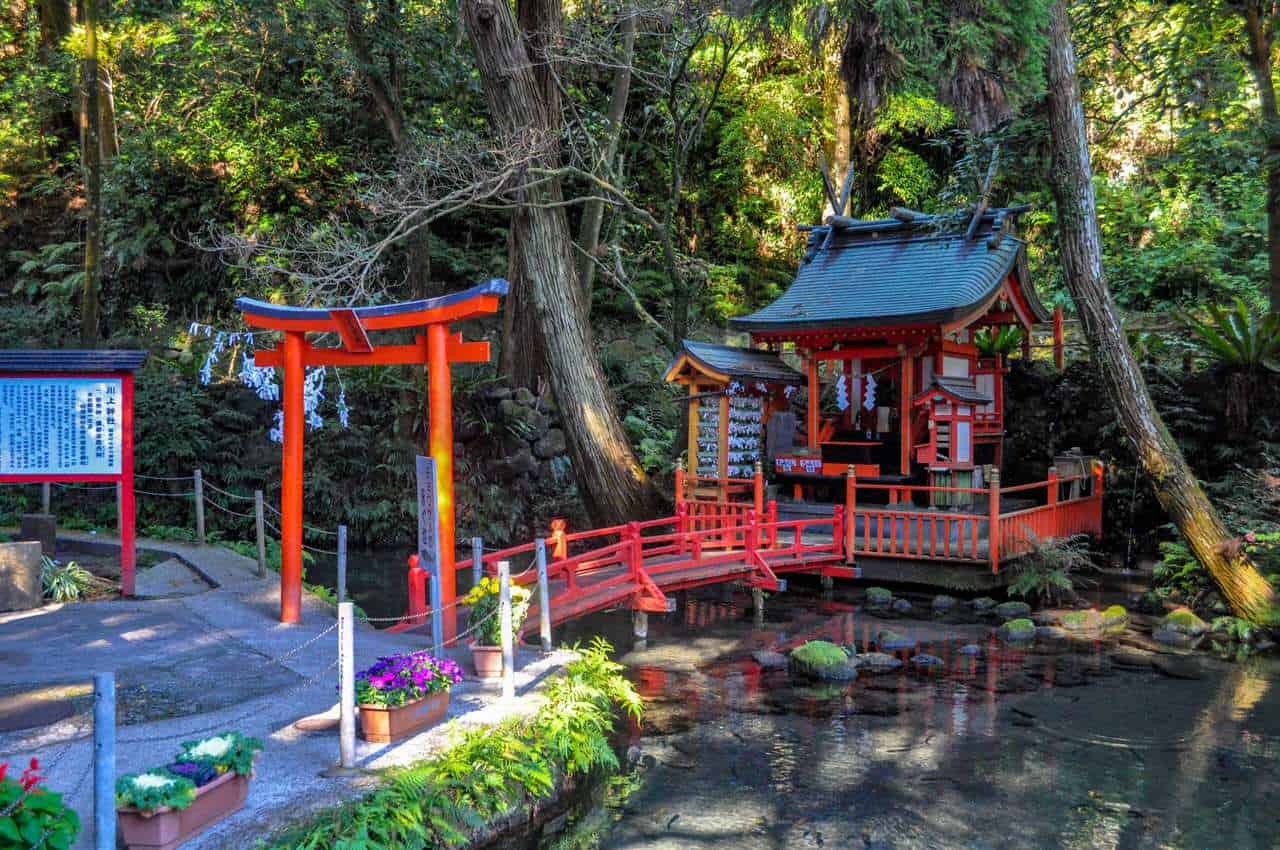
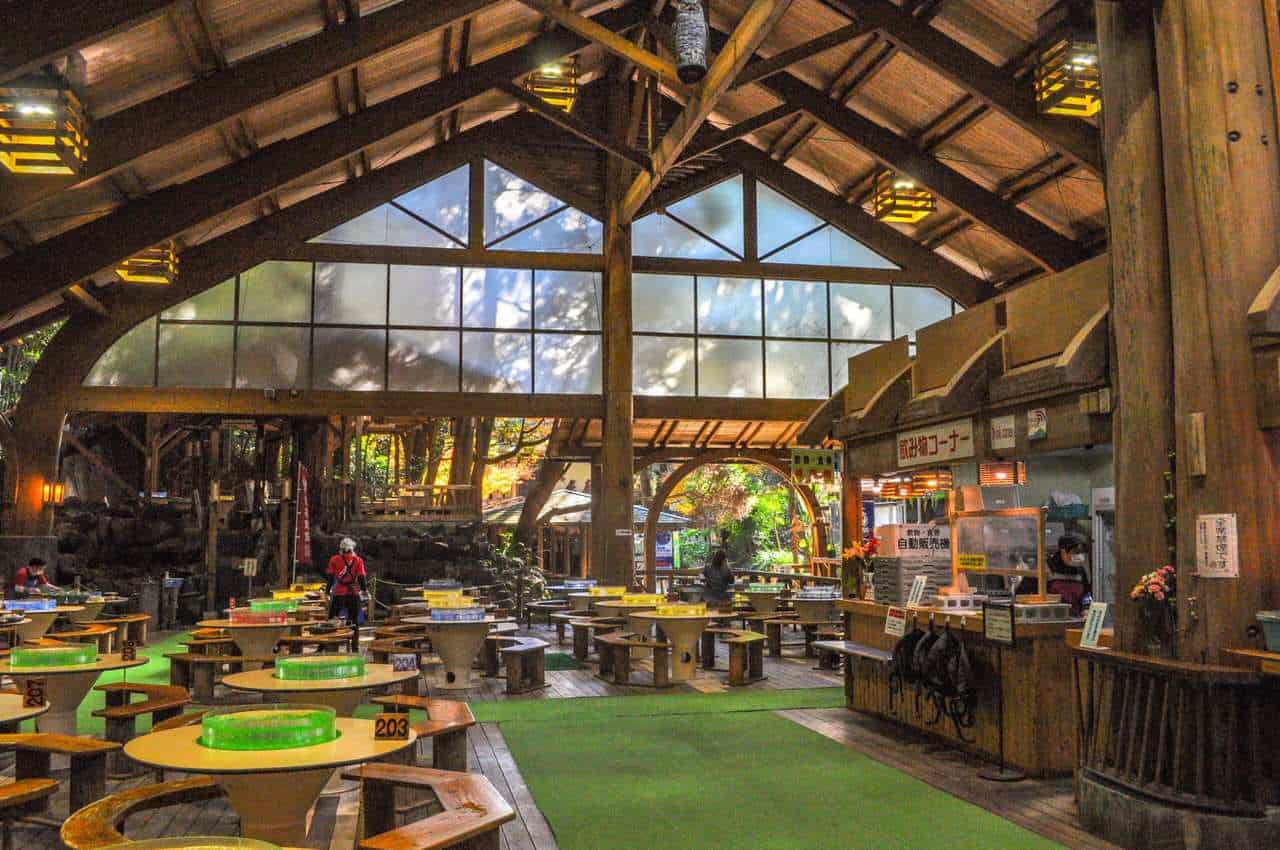
Traditional nagashi-somen (流しそうめん) are based on a peculiar concept: they are noodles floated down half of a bamboo stick that you have to catch along their journey down. So you have to be handy with your chopsticks, which is not easy for everyone.
But Tosenkyo Somen Nagashi found the solution and adapted the concept by putting the noodles in a circular bowl. No more risk of missing your catch! This circular style of nagashi-somen was born right here in Tosenkyo Gorge, which is ranked among the 100 most beautiful springs in Japan and whose water is famous for its quality.
The noodles are served in a stream of fresh water coming from the Tosenkyo Gorge at a temperature of 13°C. For the noodles to do their dance, no electricity is needed, the stream from the spring is enough. It is normally a summer dish that Japanese people eat in summer to cool down, but it is possible to eat it all year round here.
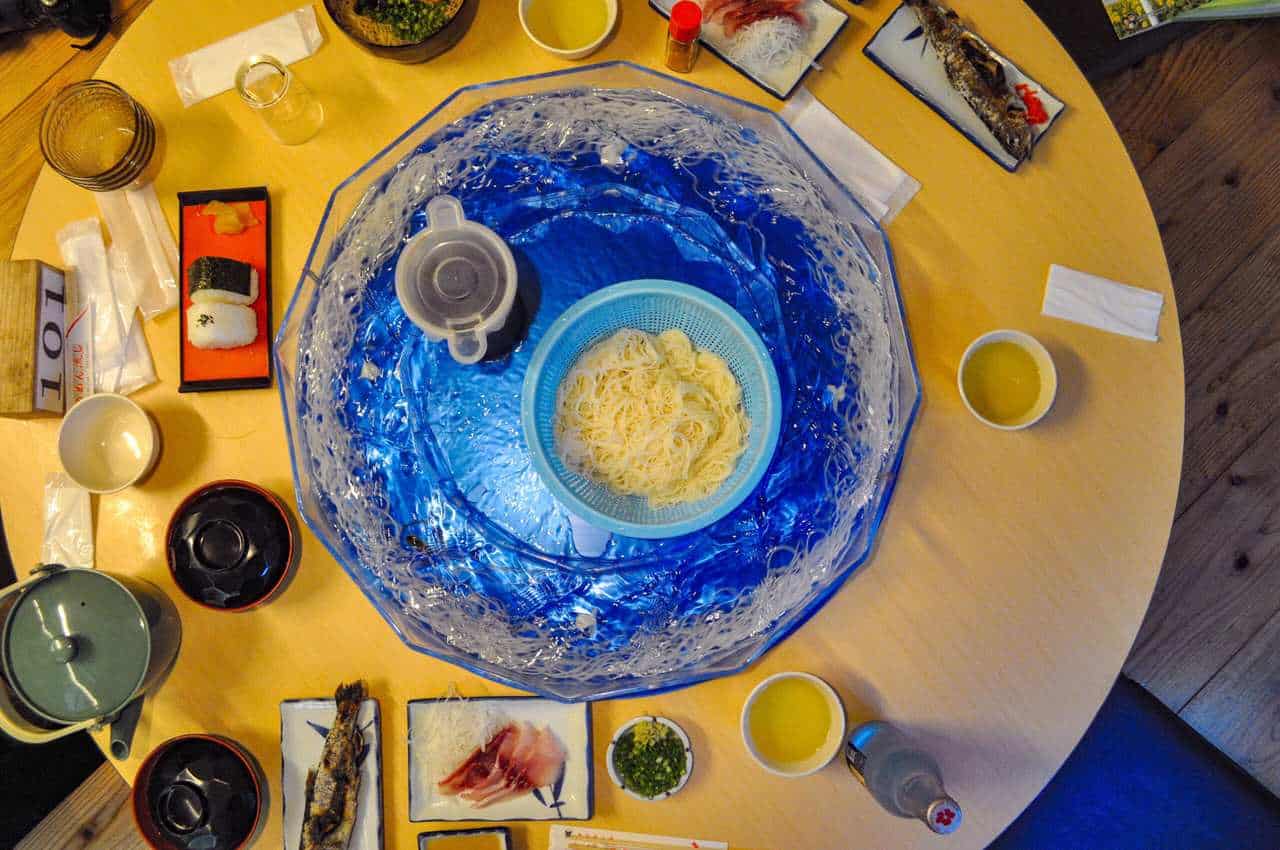
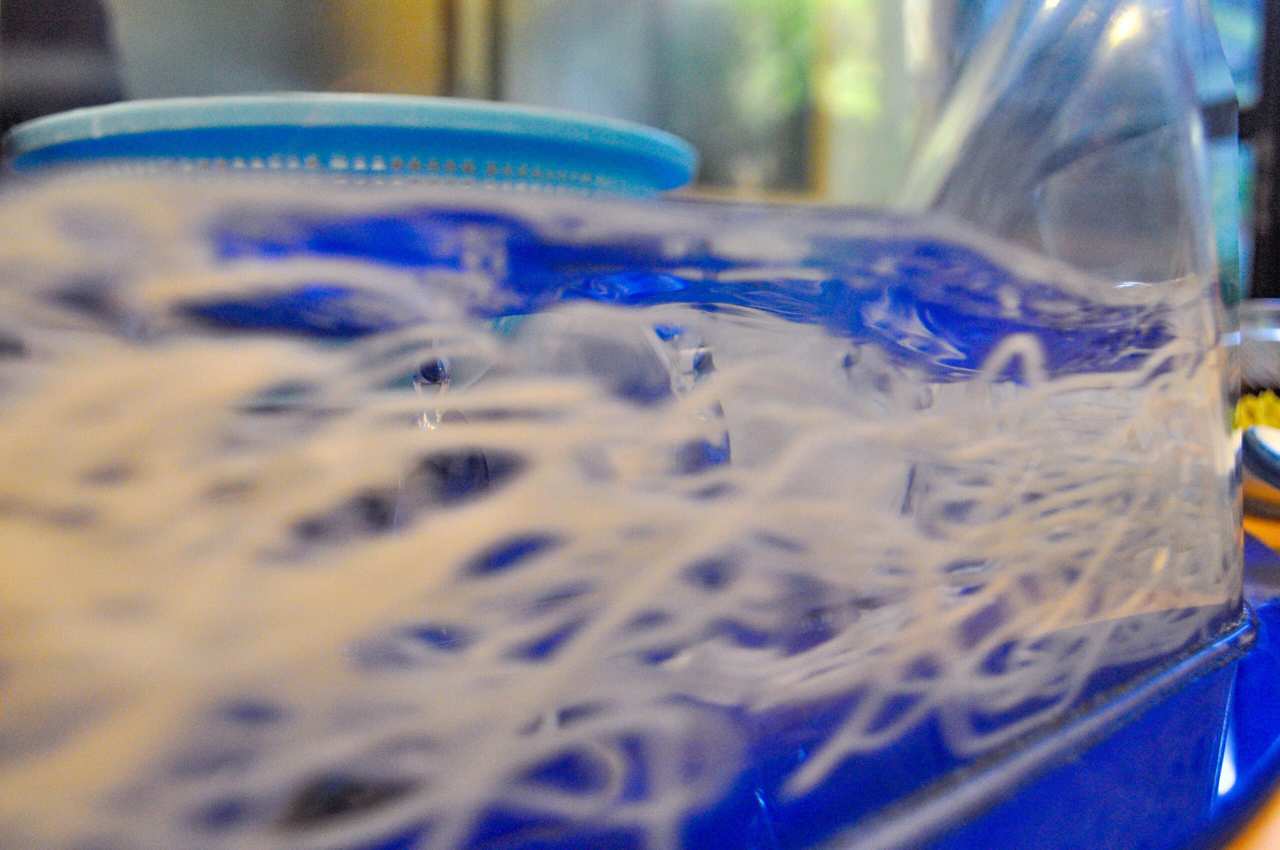
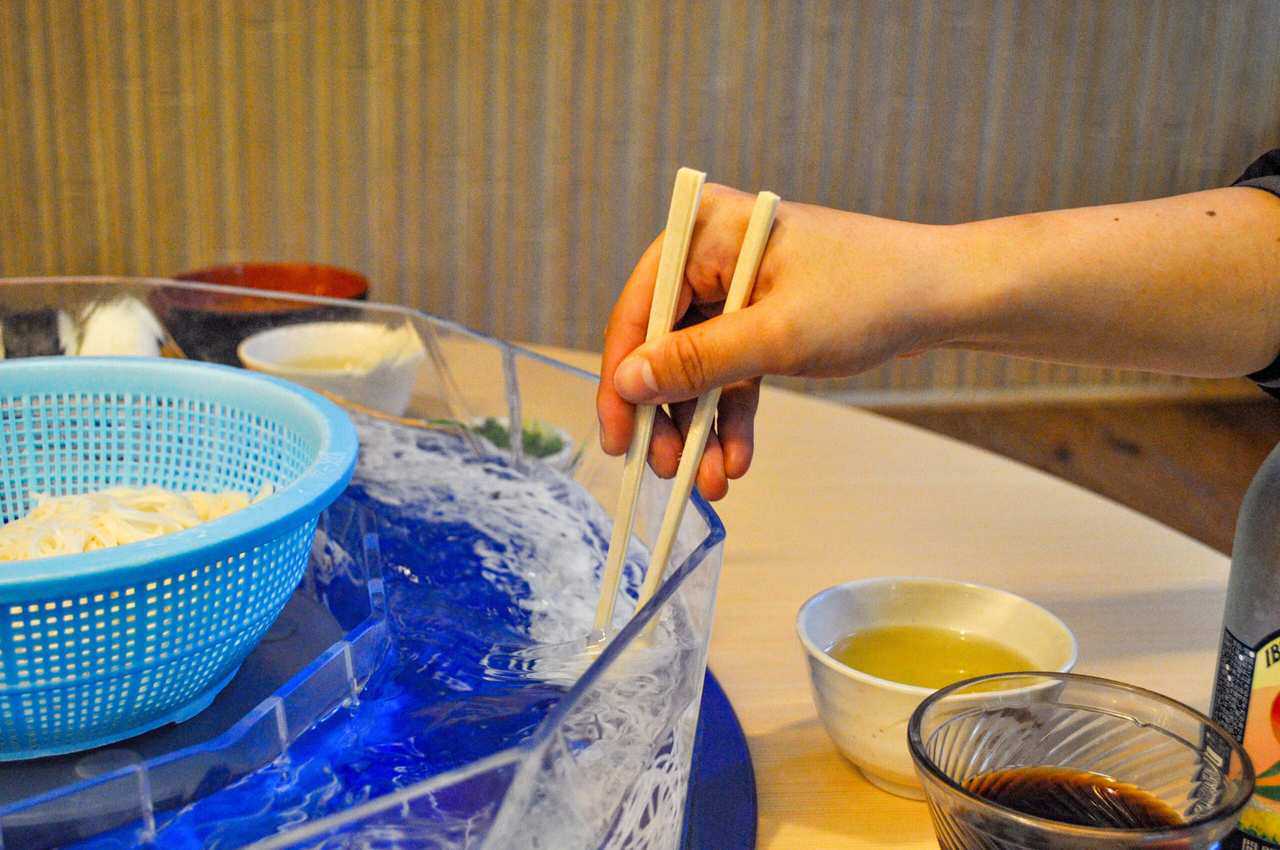
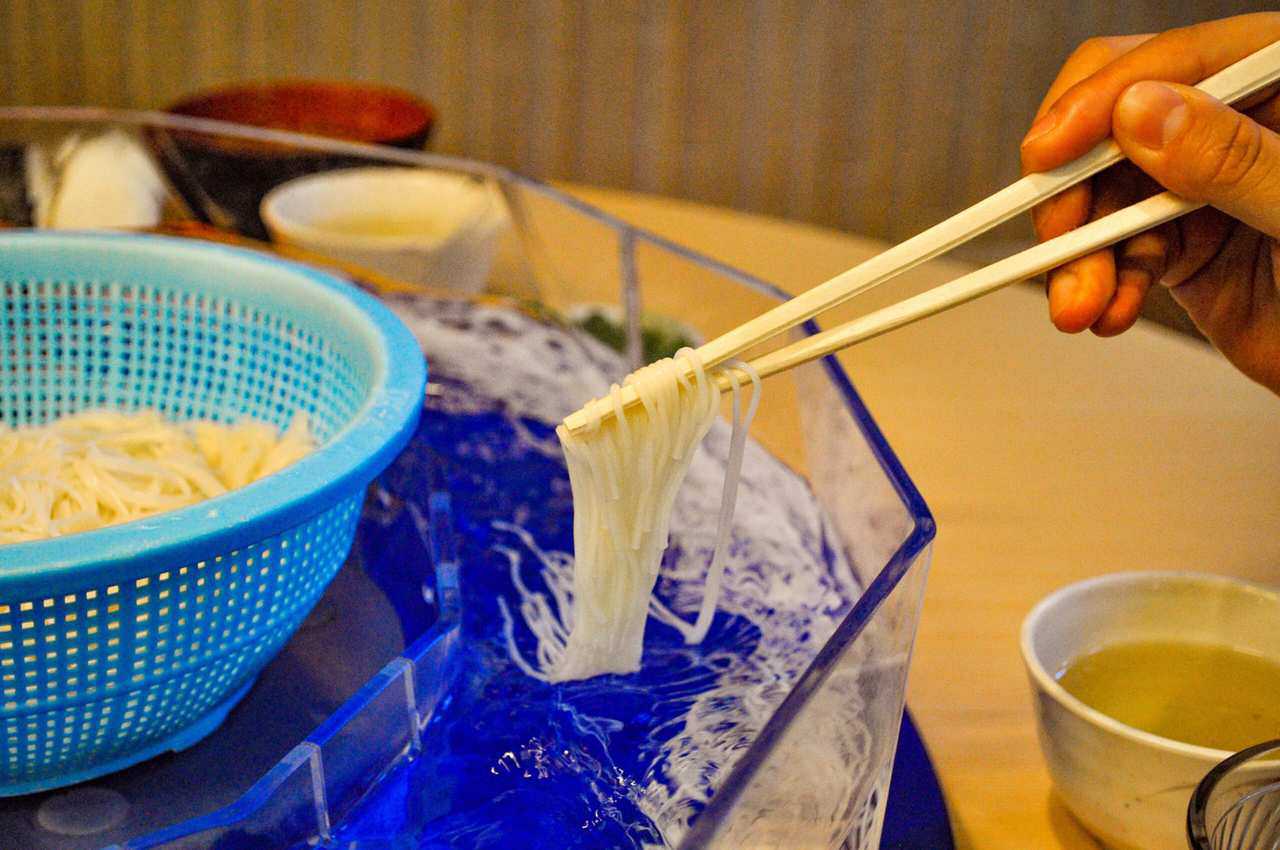
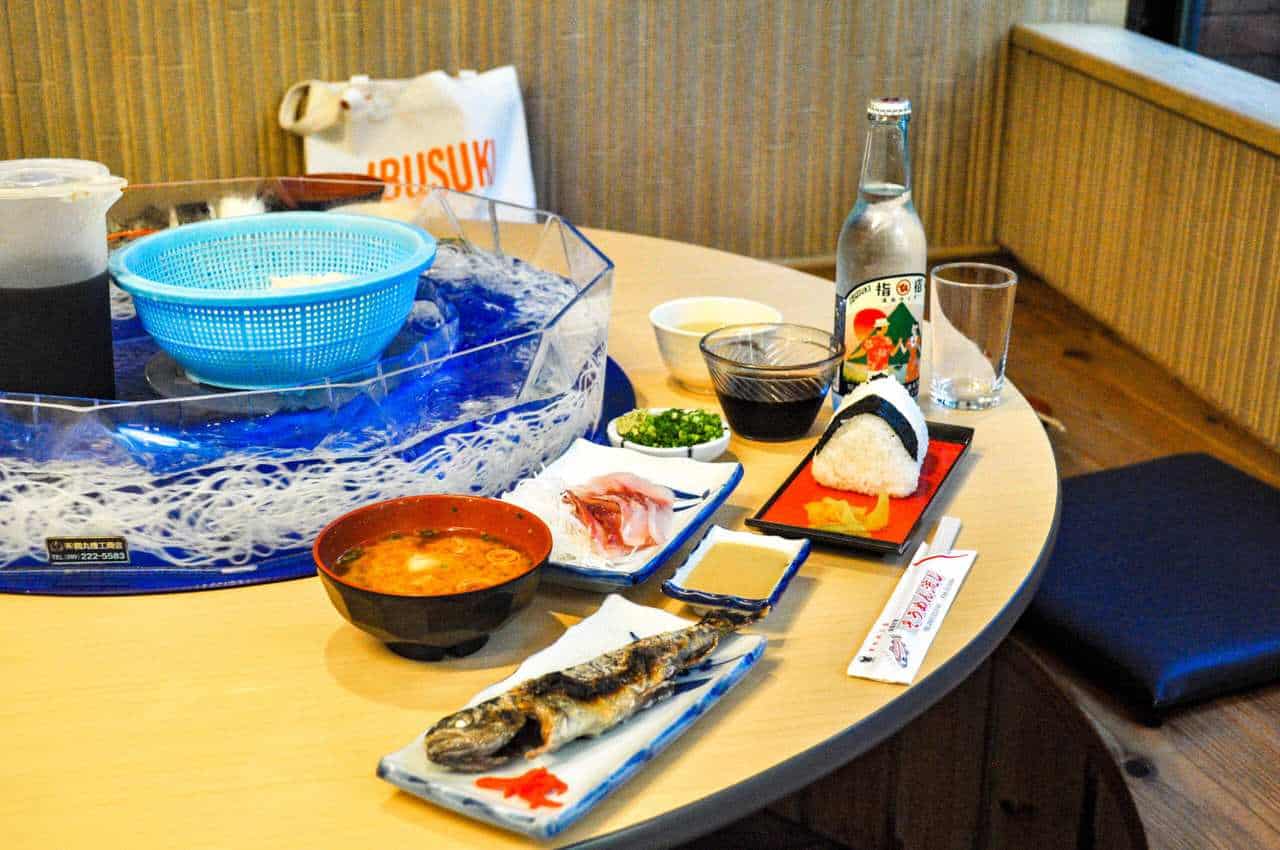
We enjoyed this catch of fresh noodles, served with onigiri, salt-roasted trout, koikoku (miso soup with carp), and koi arai (carp sashimi). All of this goes perfectly with somen. As it is a summer dish, some Japanese prefer not to eat it during winter. So the restaurant also offers alternative hot dishes.
The place is perfect for sharing a nice moment with family, friends, or couples. Be careful if you go there in summer: the restaurant is so popular that you may have to wait more than an hour between the end of July and August to get a seat. So it is recommended to arrive between 10 and 11 am.
How to get to Ibusuki
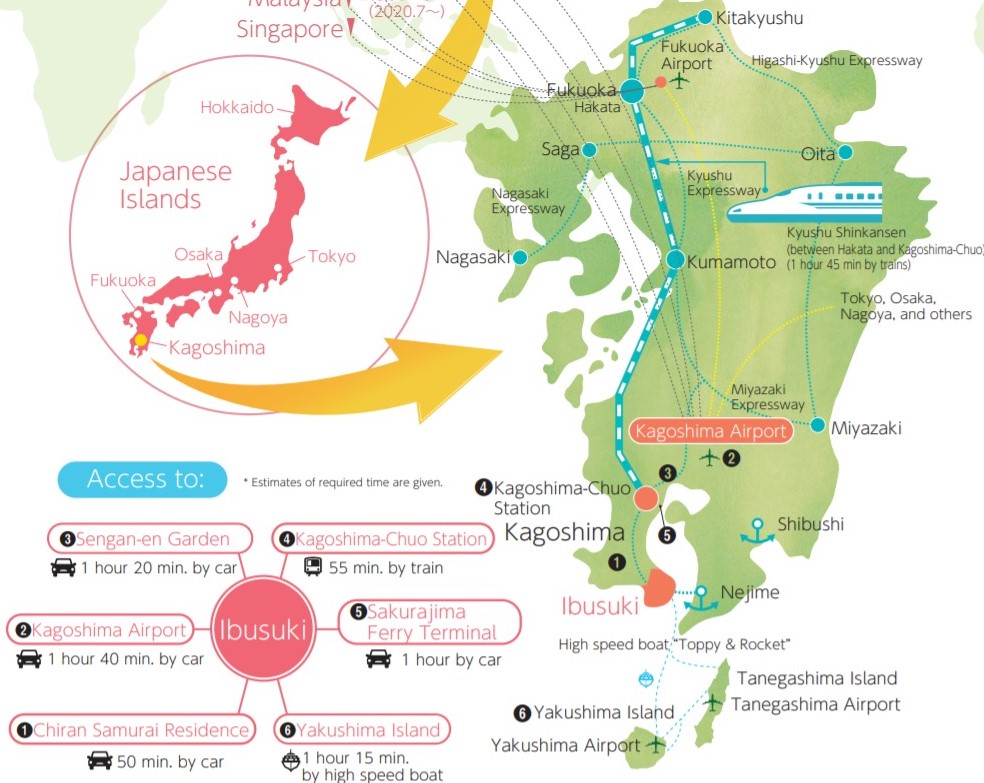
- Kagoshima Airport (鹿児島空港) can be reached in about 1 hour and 10 minutes from Osaka and about 1 hour and 50 minutes from Tokyo.
- From Kagoshima Chuo Station (鹿児島中央駅), Ibusuki can be reached in about 55 minutes via the JR Ibusuki-Makurazaki line (指宿枕崎線) or in about 1h40 minutes by bus.
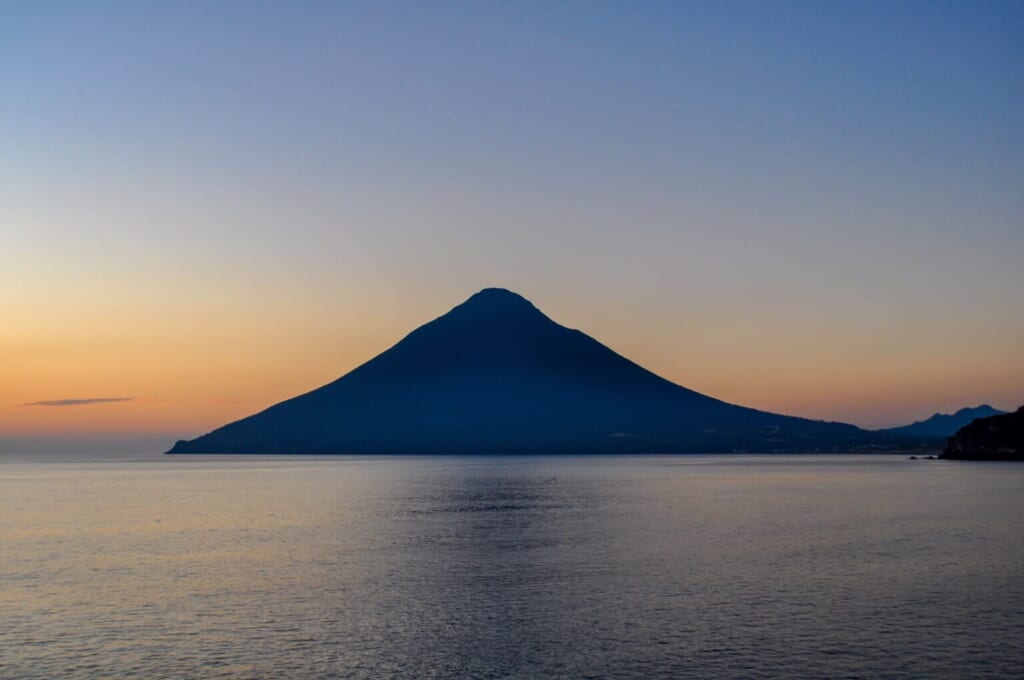
With its sunny climate, its unique spa, its summer gastronomy, and its dreamy landscapes, Ibusuki is just like an island paradise where time seems to have stopped for summer. The best thing to do is to stay there for a few days to try out its outdoor activities (bike tours, stand-up paddle, etc.) before relaxing in this real spa paradise. Why not come to Ibusuki and take the vacation you have been waiting for?
Sponsored by Ibusuki City.


